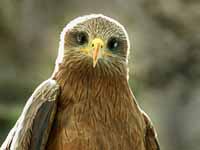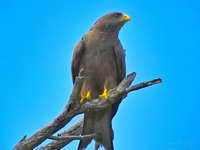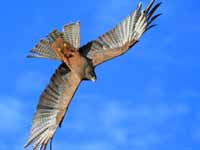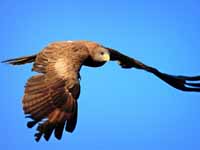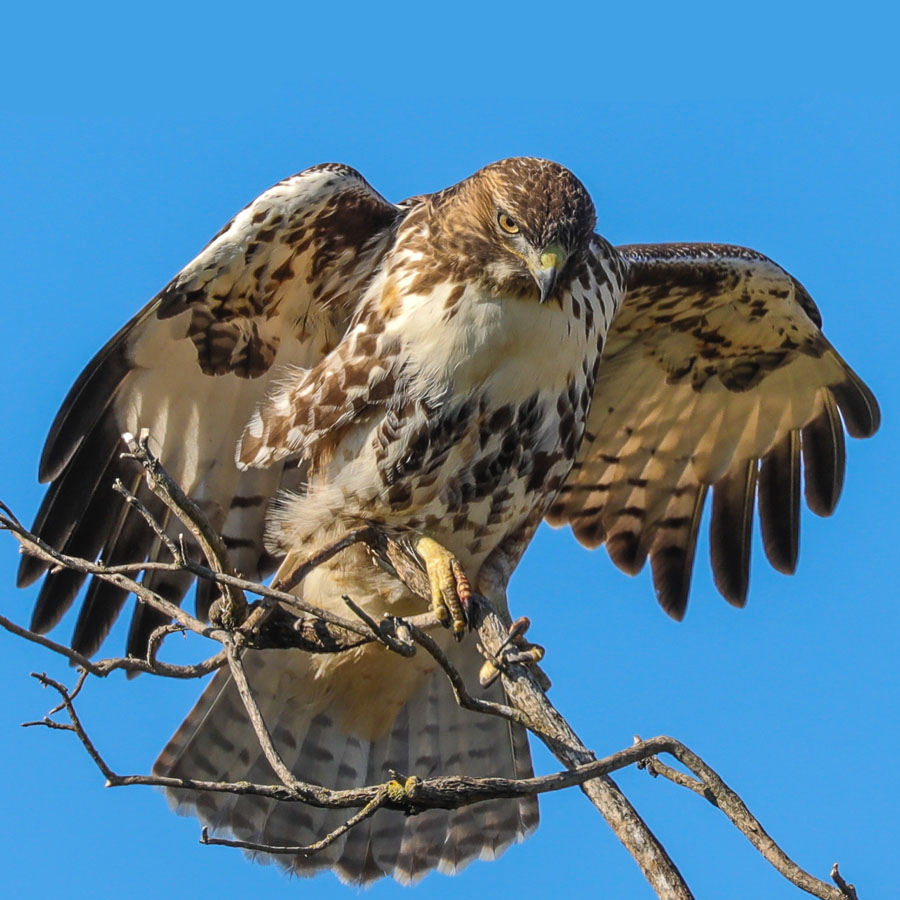THE WORLD BIRDS - An Online Bird Book
RAPTORS - Hawks
Hawks
RAPTORS - Hawks
Raptors are birds of prey. They are carnivorous, long lived, and have low reproductive rates. They catch their prey via strong claws – three pointing forward and one pointing backward. The raptors that hunt by day are: hawks, eagle, kites, vultures, falcons. Owls hunt by night. The raptors are spread over a number of orders: Accipitriformes (hawks and allies), Cathartiformes (New World vultures), Falconiformes (falcons), Strigiformes (owls).
Unlike most other birds, or mammals for that matter, almost all female raptors are larger than their male counterpart. There is no consensus as why evolution worked this way for the raptor. The theory I like best is that the bigger female can defend the nest better, while the smaller male is more agile and can find lots of little prey to bring home to the nest. That is, when the chicks are young, they need lots of little tidbits, not one humungous carcass. A side benefit of having male and female being different in size is that they tend to go after different food sources so that way they are not competing with each other for food. But if males were the bigger ones, that diversity benefit would also be true. So perhaps the overarching reason, is the male bringing home lots of tidbits.
Raptors, especially those that stalk prey from the air, tend to have dark upperparts and lighter underparts. Looking down from above a raptor, the dark upperparts tend to blend in with the ground. While looking from below, the light underparts blend better with the sky.
Many of the raptors have their conservation status listed as something other than Least Concern; that is, there is some concern about their survival. A contributing factor is that raptors need a considerable area to offer them sufficient prey. As habitats degrade, they have less area to patrol, and less prey in the remaining areas, a double whammy. Also, for millennia, raptors have been at the top of the food chain and did not need to worry about their longterm survival. As a result, they have evolved to have few offspring, sometimes only 1. Thus if a population decreases, it is hard for it to recover.
Accipitriformes
The order Accipitriformes is made of of three families: Accipitridae, Pandionidae, and Sagittariidae. Accipitridae contains the hawks, eagles, kites, Old World vultures. Pandionidae only contains one species - the osprey, and Sagittariidae only contains the secretary bird.
Accipitridae
Accipitrine raptors generally have broad wings with rounded ends. As indicated below, the family is divided into 9 subfamilies. The characteristics of each of the subfamilies will be given prior to a description for each of their species. A confusing factor for presenting the subfamilies is that common terms such as eagles or kites do not correspond to a specific subfamily. For example, eagles belong to two different subfamilies and kites to 5 subfamilies!
The Accipitridae family has the following subfamiles:
Aquilinae – booted eagles
Circaetinae – serpent eagles
Harpiinae – forest eagles
Accipitrinae – accipitrine hawks
Buteoninae – buteonine hawks
Harpaginae – harpagine hawks
Melieraxinae – melieraxine hawks
Elaninae – elanine kites
Perninae – honey-buzzards
Gypaetinae – gypaetine vultures and harrier-hawks
Gypinae – Old World vultures
Unlike most other birds, or mammals for that matter, almost all female raptors are larger than their male counterpart. There is no consensus as why evolution worked this way for the raptor. The theory I like best is that the bigger female can defend the nest better, while the smaller male is more agile and can find lots of little prey to bring home to the nest. That is, when the chicks are young, they need lots of little tidbits, not one humungous carcass. A side benefit of having male and female being different in size is that they tend to go after different food sources so that way they are not competing with each other for food. But if males were the bigger ones, that diversity benefit would also be true. So perhaps the overarching reason, is the male bringing home lots of tidbits.
Raptors, especially those that stalk prey from the air, tend to have dark upperparts and lighter underparts. Looking down from above a raptor, the dark upperparts tend to blend in with the ground. While looking from below, the light underparts blend better with the sky.
Many of the raptors have their conservation status listed as something other than Least Concern; that is, there is some concern about their survival. A contributing factor is that raptors need a considerable area to offer them sufficient prey. As habitats degrade, they have less area to patrol, and less prey in the remaining areas, a double whammy. Also, for millennia, raptors have been at the top of the food chain and did not need to worry about their longterm survival. As a result, they have evolved to have few offspring, sometimes only 1. Thus if a population decreases, it is hard for it to recover.
Accipitriformes
The order Accipitriformes is made of of three families: Accipitridae, Pandionidae, and Sagittariidae. Accipitridae contains the hawks, eagles, kites, Old World vultures. Pandionidae only contains one species - the osprey, and Sagittariidae only contains the secretary bird.
Accipitridae
Accipitrine raptors generally have broad wings with rounded ends. As indicated below, the family is divided into 9 subfamilies. The characteristics of each of the subfamilies will be given prior to a description for each of their species. A confusing factor for presenting the subfamilies is that common terms such as eagles or kites do not correspond to a specific subfamily. For example, eagles belong to two different subfamilies and kites to 5 subfamilies!
The Accipitridae family has the following subfamiles:
Aquilinae – booted eagles
Circaetinae – serpent eagles
Harpiinae – forest eagles
Accipitrinae – accipitrine hawks
Buteoninae – buteonine hawks
Harpaginae – harpagine hawks
Melieraxinae – melieraxine hawks
Elaninae – elanine kites
Perninae – honey-buzzards
Gypaetinae – gypaetine vultures and harrier-hawks
Gypinae – Old World vultures
Hawks
This article contains species from the following Accipitridae subfamilies: Accipitrinae – accipitrine hawks, Buteoninae – buteonine hawks, Harpaginae – harpagine hawks, and Melieraxinae – melieraxine hawks. It also contains 5 kite species that are listed in tribe Milvini and as part of the Buteoninae hawks. The placement of that tribe is debatable.
Accipitrinae – accipitrine hawks
The two main genera of this subfamily are Accipter which has 45 pecies and Circus which has 13 species. There are 3 other species spread over tow additional genera.
The raptors of Accipiter are called hawks, goshawks, and sparrowhawks. These birds are slender with short broad rounded wings and a long tail which helps them maneuver in flight. They have long legs and long sharp talons used to kill their prey, and a sharp hooked bill used in feeding. Females tend to be larger than males. They often ambush their prey, mainly small birds and mammals, capturing it after a short agile chase. The typical flight pattern is a series flaps (often 2) followed by a short glide. These hawks usually stalk their prey by sitting in a tree which implies that are not usually found in areas without any trees. On the other hand, the wooded area should not be do dense that they can not see their prey or manoouver to chase them. The Eurasian sparrowhawk is smallest of the genus with the male weighing under 85 grams andthe female under 105 g. The northern goshawk can be more than 10 times heavier with male up to 1100 grams and the female up to 1400 g.
The raptor of Circus aer called harriers. The mostly hunt by flying low over open ground such as grassland or marshes, feeding on small mammals, reptiles, or birds. These harriers have a slim body, narrow wings and a long tail. Harriers nest on the ground. Males and females have distinct plumage.
Genus Accipiter
See Melierax for more Goshawks.
Besra Accipiter virgatus
Description: The besra, also known as the besra sparrowhawk, has dark blue-grey upperparts. The throat is white with a median stripe. The underparts are white with reddish streaks on the breast and bars on the flanks and belly. Sometimes the streaks/bars have random directions. The tail has 4 to 6 dark and pale bands. It has yellow eyes and legs. Sexes similar in appearance but female browner upperparts. Female, larger than male, is usualy under 200 gm. The besra is similar appearance to the crested goshawh, but it is considerably smaller. The northern
Range: Indian Subcontinent to Southeast Asia.
Habitat: Forests
Diet: Mainly birds; also insects, lizards. Birds taken in flight.
Conservation status: Least Concern.
Image by: 1) Robert_tdc 2) Ash7103 3) Hiyashi_HakaRange: Indian Subcontinent to Southeast Asia.
Habitat: Forests
Diet: Mainly birds; also insects, lizards. Birds taken in flight.
Conservation status: Least Concern.
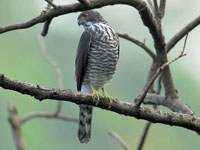
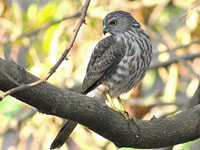
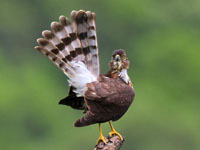
Goshawk,_African Accipiter tachiro
Description: The African goshawk has grey (male) or dark brown (female) upperparts. It has pale underparts with rufous barring, grey rump, yellow eyes, and yellow legs. The cere is greyish which is unusal for the genus.
Range: Africa.
Habitat: Variety of woodland habitats and elevations. Builds nest in trees.
Diet: Mainly birds. Also small mammals, lizards.
Conservation status: Least Concern.
Image by: 1) Dick Daniels - Radical Raptors, South Africa 2) Dick - World of Birds , South Africa 3) Johann_du_PreezRange: Africa.
Habitat: Variety of woodland habitats and elevations. Builds nest in trees.
Diet: Mainly birds. Also small mammals, lizards.
Conservation status: Least Concern.
1, 2) Female 3) Male


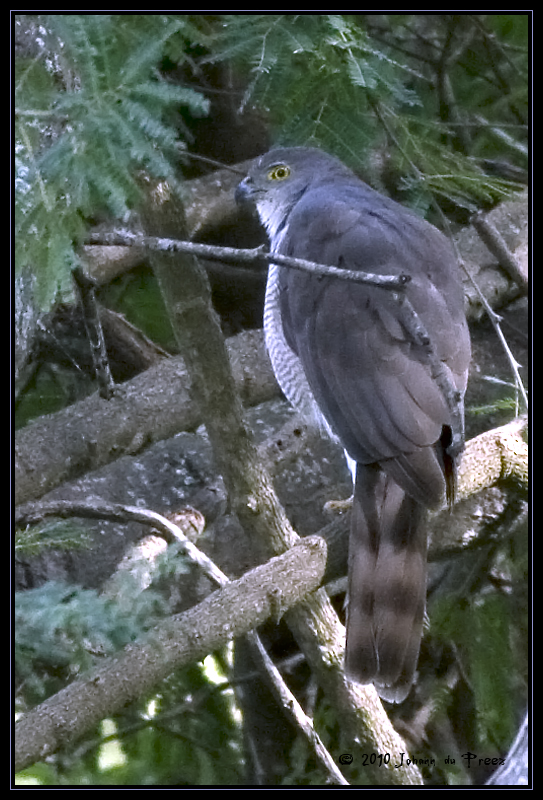
Goshawk,_Black-mantled Accipiter melanochlamys
Description: The black-mantled goshawk has glossy upperparts, black wings andhead. It has a chestnut collar and chestnut underparts. The male weighs up to 250 grams, female up to 300 g.
Range: New Guinea.
Habitat: Subtropical or tropical moist lowland forests.
Diet: Mainly birds. Also, mammals, insects.
Conservation status: Least Concern.
Image by: 1) Katerina_Tvardikova 2) William_HartRange: New Guinea.
Habitat: Subtropical or tropical moist lowland forests.
Diet: Mainly birds. Also, mammals, insects.
Conservation status: Least Concern.
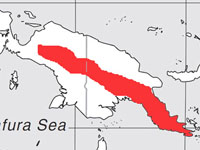
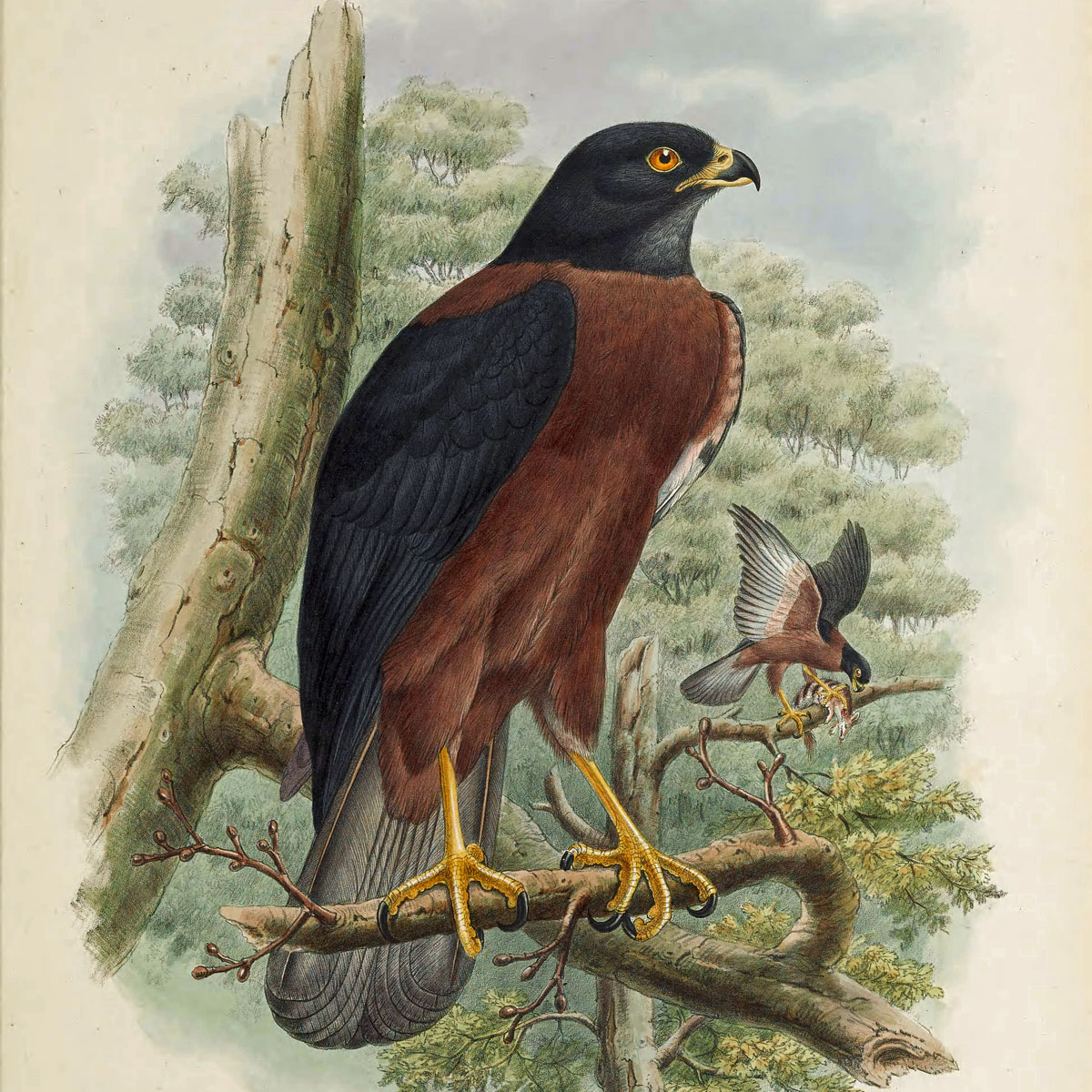
Goshawk,_Brown Accipiter fasciatus
Description: The brown goshawk has grey upperparts with a chestnut collar; mainly rufous underparts with white barring. The male weighs up to 425 grams, female to 700 g. The brown goshawk is similar in color to the collared sparrowhawk, but larger.
Range: Australia and surrounding islands.
Habitat: Eucalyptic forests and woodlands.
Diet: Birds, mammals.
Conservation status: Least Concern.
Image by: 1) Wayne Butterworth - juvenile 2) Aviceda - Kurwongbah, SE Queensland 3, 4) Geoff_Whalan - Northern TerritoryRange: Australia and surrounding islands.
Habitat: Eucalyptic forests and woodlands.
Diet: Birds, mammals.
Conservation status: Least Concern.
1) Juvenile
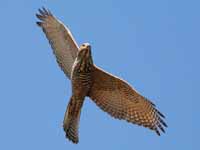
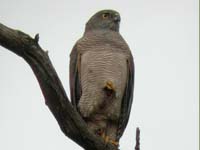

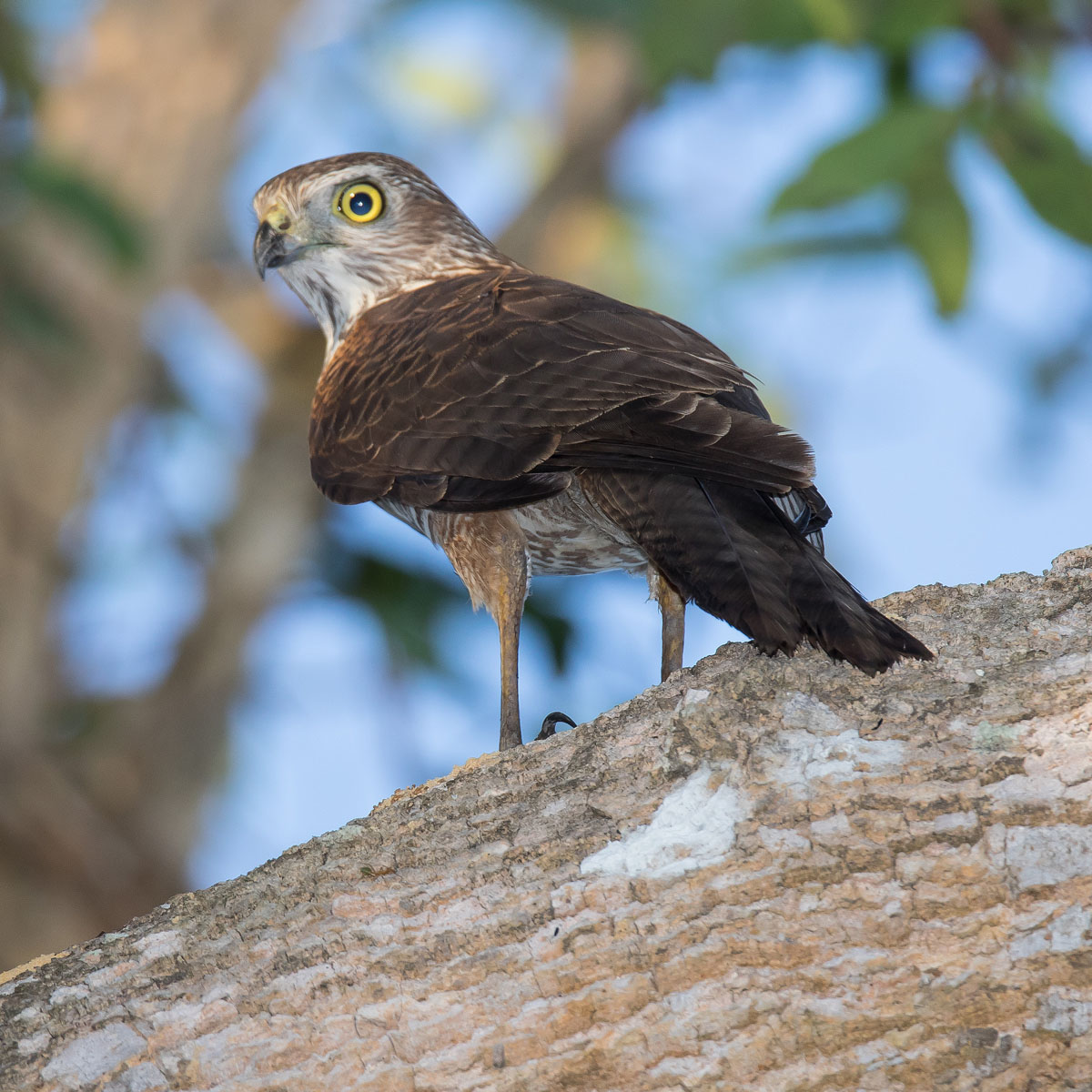
Goshawk,_Crested Accipiter trivirgatus
Description: The Crested Goshawk has a slight crest at back of head, but it is usually not erected and not easy to see. The head is dark with a grey face. It has a white throat which is bordered by black and also has a black median stripe. The tail is blackwith a yellow cere, and the eyes plus feet are also yellos. The crested goshawk has white underparts with rufous stripes on upper-breast and rufous bars on lower-breast and belly. Upper-breast may have a couple of rufous patches. Its tail has broad pale and dark bars. The male weighs up to 350 grams, female to 550g. The besra is similar appearance to the crested goshawh, but it is considerably smaller.
Range: tropical Asia.
Habitat: Forests with opennings.
Diet: Birds, lizzards, mammals, insects.
Conservation status: Least Concern.
Image by: 1) Ainus 2) Ian Liao 3) Francesco Veronesi - Taiwan 4) Alex White Range: tropical Asia.
Habitat: Forests with opennings.
Diet: Birds, lizzards, mammals, insects.
Conservation status: Least Concern.
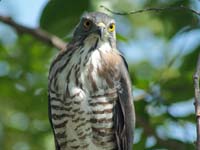
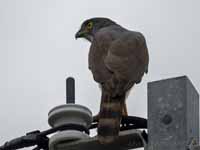
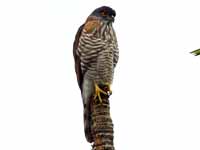

Goshawk,_Fiji Accipiter rufitorques
Description: The Fiji goshawk has grey upperparts and dull pink collar and underparts. The throat is whitish, the legs yellow, and the bill is black tipped with yellow cere. It is closely related to brown goshawk of Australia.
Range: Fiji.
Habitat: Forests and other areas with trees around since searches for prey from tree perch.
Diet: Mainly birds. Also insects, rodents, reptiles.
Conservation status: Least Concern.
Image by: 1) Mikes_Birds 2, 3) Aviceda Range: Fiji.
Habitat: Forests and other areas with trees around since searches for prey from tree perch.
Diet: Mainly birds. Also insects, rodents, reptiles.
Conservation status: Least Concern.
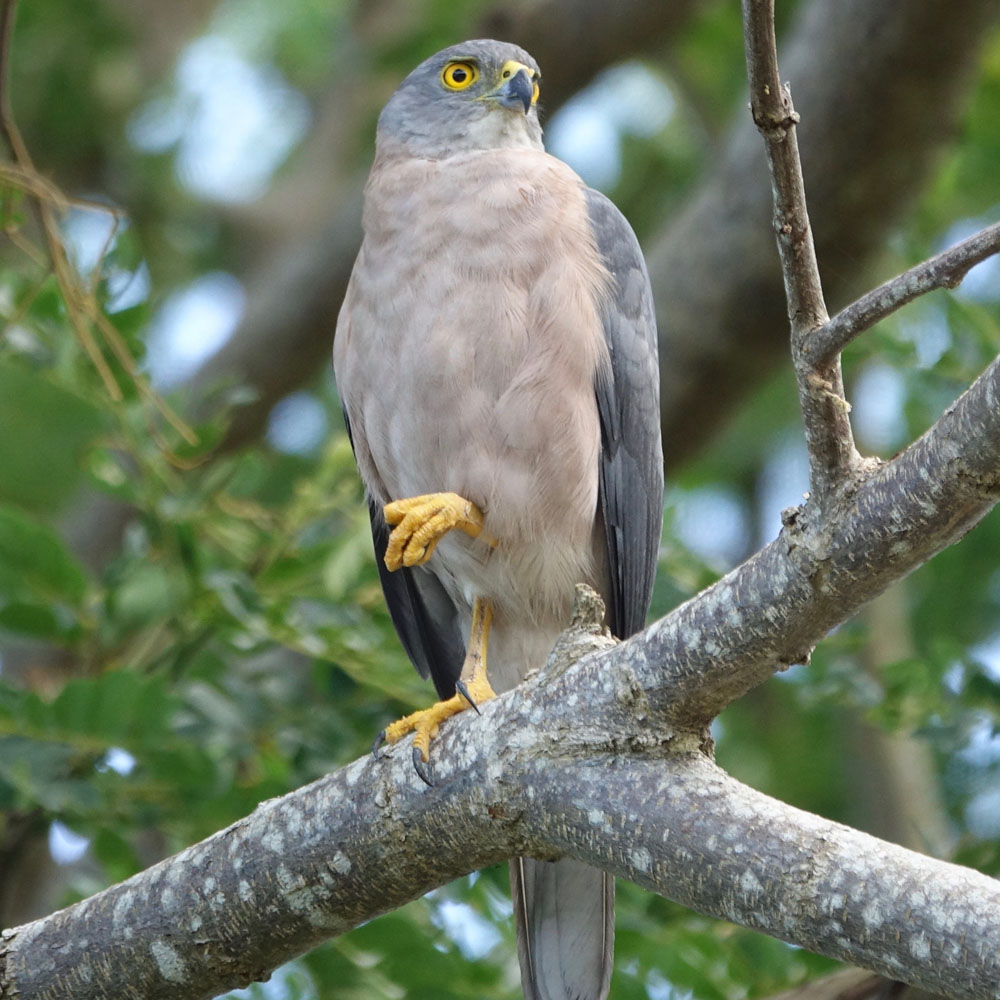
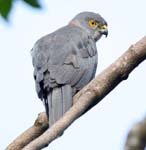
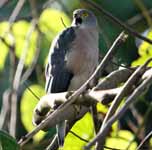
Goshawk,_Frances's Accipiter francesiae
Description: The Frances's goshawk has grey opperparts, including the head and tail. The legs and eyes are yellow. It has a black tipped bill and yellow cere. The male underparts are white with faint or no rufous barring. The famale also has white underparts, but much heavier rufous barring. This is a small hawk: tshe male weighs up to 140 grams, female to 190.
Range: Madagascar.
Habitat: Forests, especial their edges.
Diet: Mainly insects, also small mammals, reptiles, birds.
Conservation status: Least Concern.
Image by: 1) David Cook 2) John_Keulemans 3, 4) Frank Vassen Range: Madagascar.
Habitat: Forests, especial their edges.
Diet: Mainly insects, also small mammals, reptiles, birds.
Conservation status: Least Concern.
1) Juvenile 2) Female 3, 4) Male
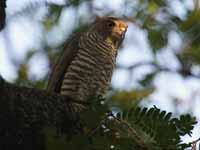

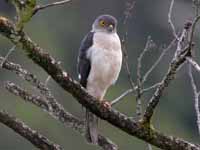
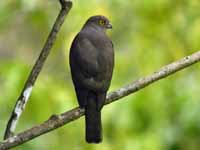
Goshawk,_Grey Accipiter novaehollandiae
Description: The Gray Goshawk has grey upperparts; pale grey underparts, head. The underparts are white with faint barromg. The white morph is entirely white. But morphs have yellow legs. This is the largest Accipter hawk in Australia.
Range: Australia.
Habitat: Forests and adjacent open spaces.
Diet: Mainly birds and also mammals. Also snakes, lizards, frogs
Conservation status: Least Concern.
Image by:
1) David Cook - Queensland, Australia 2, 3) Aviceda -
SE Queensland 4) Kristi - TasmaniaRange: Australia.
Habitat: Forests and adjacent open spaces.
Diet: Mainly birds and also mammals. Also snakes, lizards, frogs
Conservation status: Least Concern.
5) White morph
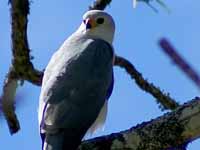

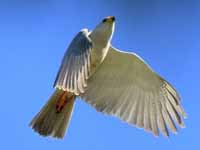

Goshawk,_Gray-headed Accipiter poliocephalus
Description: The grey-headed goshawk has grey upperparts, paler on the head and neck; white underparts; orange-red cere, legs.The male weighs up to 290 grams, female to 290 g.
Range: New Guinea and adjacent islands.
Habitat: Forests. Also may nest in isolated trees.
Diet: Snakes, lizards, insects, birds.
Conservation status: Least Concern.
Image by: 1) Jerry Oldenettel - Papua-New GuineaRange: New Guinea and adjacent islands.
Habitat: Forests. Also may nest in isolated trees.
Diet: Snakes, lizards, insects, birds.
Conservation status: Least Concern.
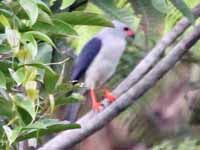
Goshawk,_Henst's Accipiter henstii
Description: The Henst's goshawk has dark brownish grey upperparts and it has a pale eye-line. The pale underparts are barred. A large goshawk, can be slightly over 1000 g. Henst's goshawk is considerable larger and has more distinct barring that tne Madagascan serpent eagle.
Range: Madagascar.
Habitat: Lives most of the time in forests. Difficult to see.
Diet: Mammals. birds.
Conservation status: The Henst's goshawk is listed as Vulnerable because the population is small and scattered. Not known if population is decreasing.
Image by: 1) Frakic 2) Skip_RussellRange: Madagascar.
Habitat: Lives most of the time in forests. Difficult to see.
Diet: Mammals. birds.
Conservation status: The Henst's goshawk is listed as Vulnerable because the population is small and scattered. Not known if population is decreasing.
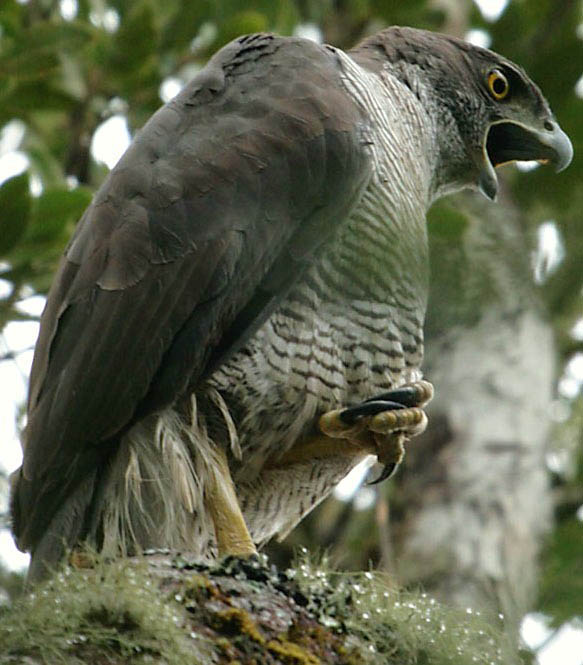
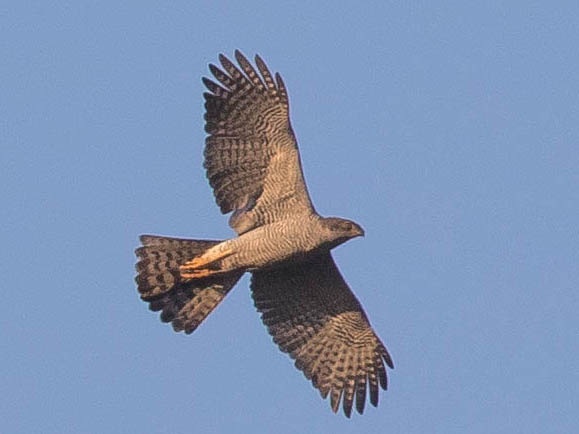
Goshawk,_Meyer's Accipiter meyerianus
Description: The Meyer's goshawk has black upperparts, white underparts with greyish-brown barring; red eyes. The tail has wide black and pale barring. It is large goshawk with the female averages about 1100 g.
Range: New Guinea and surrounding islands.
Habitat: At or near forests. Nests in forests,
Diet: Birds, lizards; probably mammals.
Conservation status: Least Concern.
Image by: 1) John Gerrard KeulemansRange: New Guinea and surrounding islands.
Habitat: At or near forests. Nests in forests,
Diet: Birds, lizards; probably mammals.
Conservation status: Least Concern.
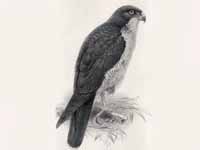
Goshawk,_Moluccan Accipiter henicogrammus
Description: The moluccan goshakh has slate grey upperparts, rufous underparts, and faint tailbands. The bill has a black tip and yellow cere. The feet are also yellow.
Range: Halmahera of Indonesia
Habitat: Forest and forest edges.
Diet: Birds, lizards, insects.
Conservation status: The moluccan goshawk is listed as Near Threatened because of logging and forest clearing for plantations.
No public domain images available.Range: Halmahera of Indonesia
Habitat: Forest and forest edges.
Diet: Birds, lizards, insects.
Conservation status: The moluccan goshawk is listed as Near Threatened because of logging and forest clearing for plantations.
Goshawk,_New_Britain Accipiter princeps
Description: The New Britain goshawk has slate-grey upperparts, whitish underparts with some verminulation.
Range: islands to east of New Guinea.
Habitat: Forests.
Diet: Information lacking. Probably does not eat birds often.
Conservation status: The New Britain goshawk is listed a Vulnerable. The population is small and shrinking, probably due to deforestation.
Image by: 1) Katerina_Tvardikova Range: islands to east of New Guinea.
Habitat: Forests.
Diet: Information lacking. Probably does not eat birds often.
Conservation status: The New Britain goshawk is listed a Vulnerable. The population is small and shrinking, probably due to deforestation.
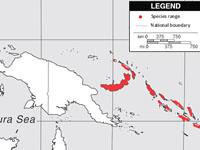
Goshawk,_New_Caledonia Accipiter haplochrous
Description: The New Caldonia Goshawk, also known as white lower-breast and belly. The rest of the plumage is dark grey. The bill has a dark tip and cere. That dark cere helps to distiguish it.
Range: New Caledonia (750 miles east of Australia).
Habitat: Forest, degraded forest, and savanna.
Diet: Probably lizards, insects, small mammals. Also birds.
Conservation status: The New Caledonia goshawk is listed as Near Threatened because it is found on just a relatively small island and the population is declining.
Image by: 1) Joseph_Wolf 2) Gerba1939 3) Fred-DesmoulinsRange: New Caledonia (750 miles east of Australia).
Habitat: Forest, degraded forest, and savanna.
Diet: Probably lizards, insects, small mammals. Also birds.
Conservation status: The New Caledonia goshawk is listed as Near Threatened because it is found on just a relatively small island and the population is declining.
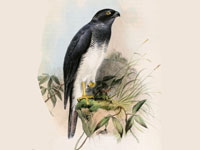
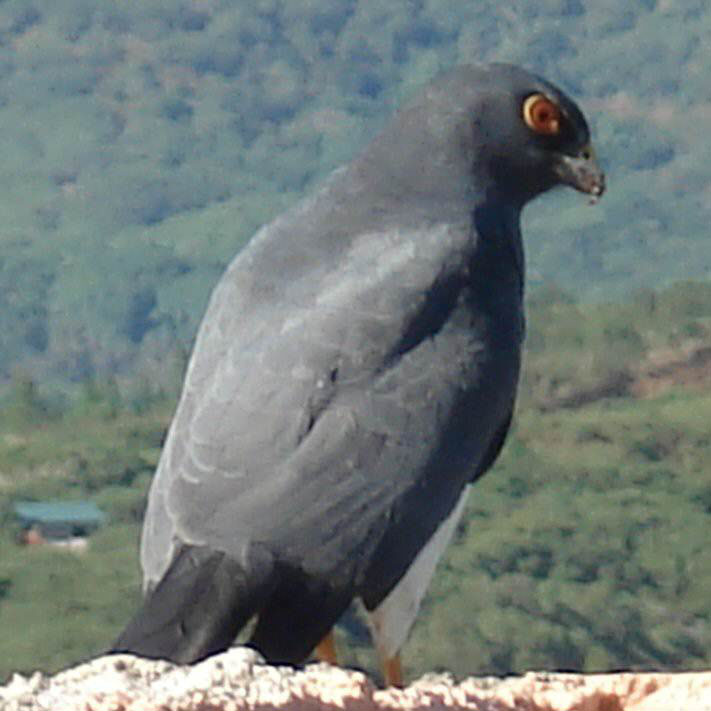
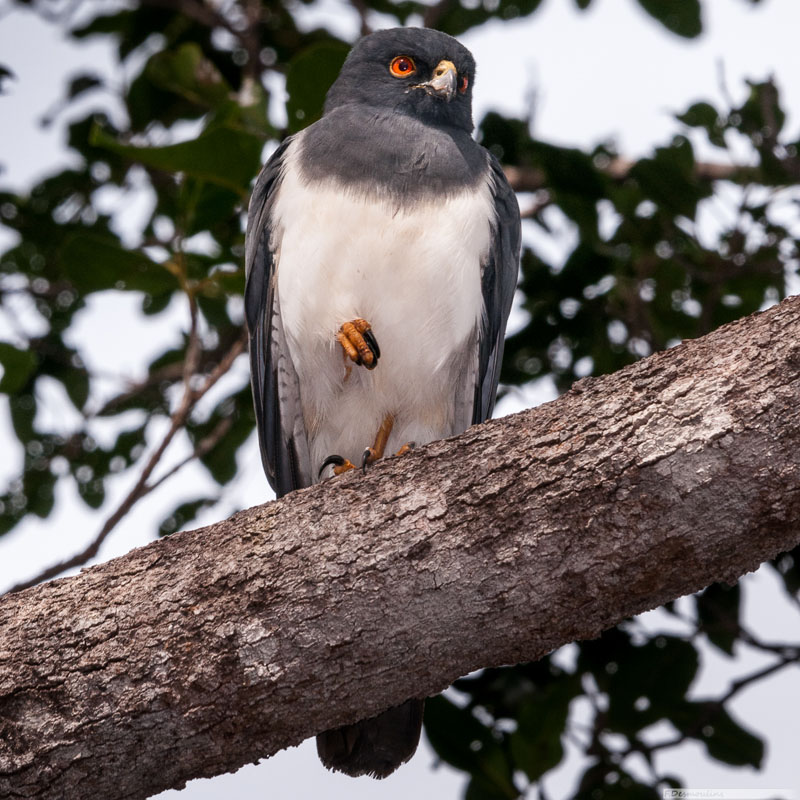
Goshawk,_Northern Accipiter gentilis
Description: The northern goshawk, also know as the goshawk, has dark grey upperparts,, a white supercilium, and a grey tail with 3 dark bands. The underparts are quite varialbe. The can be pale with dark grey barring. Or instead of barring there can be faint vermiculation with some thin dark streaks. The male weighs up to 1100 grams, female to 1400 g. The white eyebrow of the northern goshawk seperates it from the similar cooper's hawk, and sharp-shinned hawk. The juvenile has white underparts with streaks instead of bars.
Range: North America, Europe, Asia.
Habitat: Deciduous and coniferous forests. Prefer dense forests which limits the undergrowth.
Diet: Relatively large birds. Also mammals, carrion.
Conservation status: Least Concern.
Image by: 1) Elaine R. Wilson - British Columbia 2) Steve Garvie - Scotland 3) Andy_Witchger 4) Michael RansburgRange: North America, Europe, Asia.
Habitat: Deciduous and coniferous forests. Prefer dense forests which limits the undergrowth.
Diet: Relatively large birds. Also mammals, carrion.
Conservation status: Least Concern.
1) Juvenile
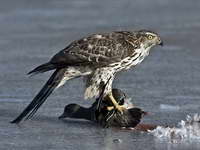
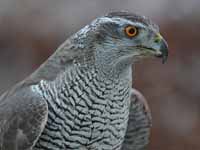
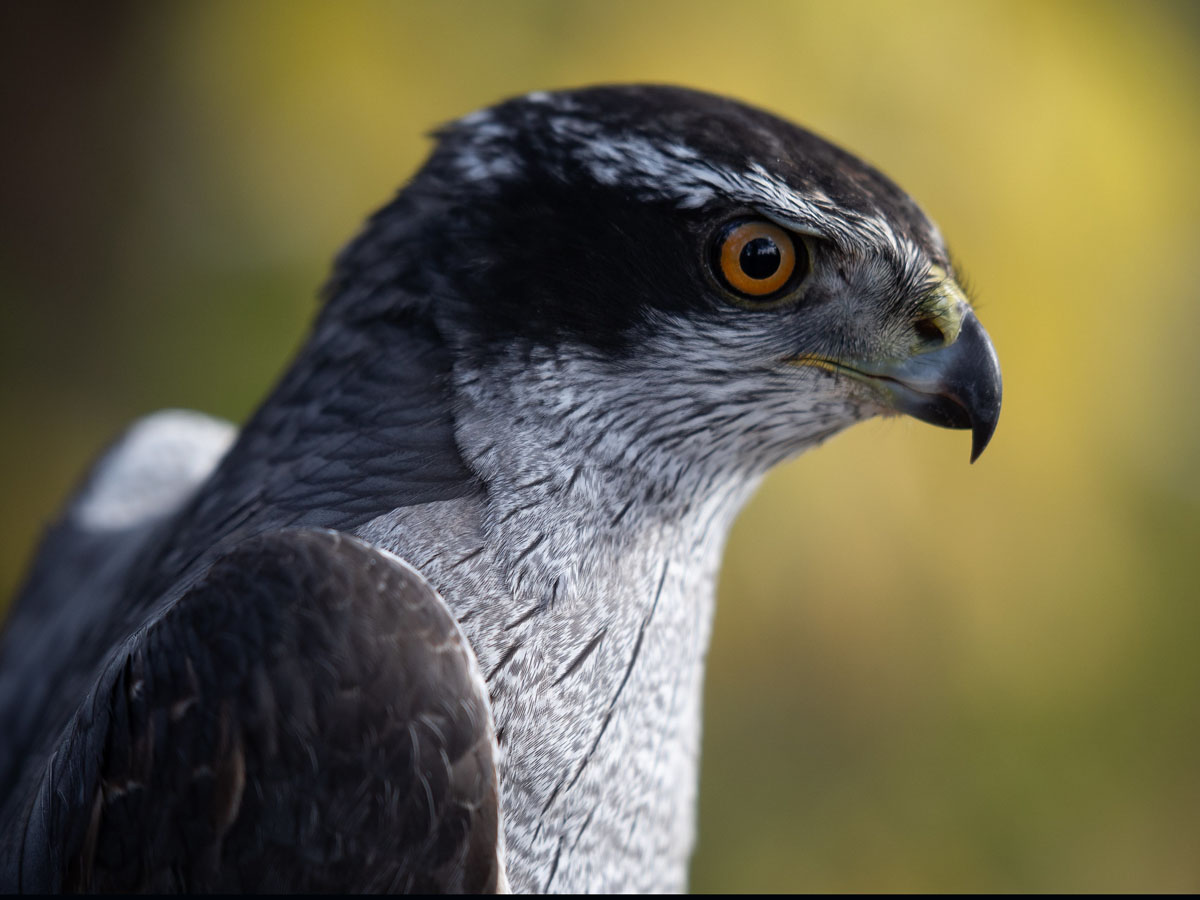

Goshawk,_Pied Accipiter albogularis
Description: The pied goshawk has dark grey upperparts and head. The underparts and throat are white. Most races have a chestnut half collar. It has a black tipped bill with a yellow cere. The legs and feet are yellow. Males weight to 250 g and female to 450 g.
Range: Bougainville Island and the Solomon Islands.
Habitat: Forests.
Diet: Birds; also lizards and insects.
Conservation status: Least Concern.
No images in public domain.Range: Bougainville Island and the Solomon Islands.
Habitat: Forests.
Diet: Birds; also lizards and insects.
Conservation status: Least Concern.
Goshawk,_Red-chested Accipiter toussenelii
Description: The red-chested goshawk has dark grey upperparts with a lighter heads. It has yellow-orange eyes, legs, and cere. The black tail has 2 or 3 bold white spots. The underparts are plain rufous and white for the eastern subspecies. The western subspecies has light barring on the rufous. The male weighs up to 235 grams and females up to 265 g.
Range: west Africa.
Habitat: Forests; Also plantation, parks, big gardens.
Diet: Frogs and crabs. Also insects, lizards, mammals, birds.
Conservation status: Least Concern.
Image by: 1) John Gerrard Keulemans Range: west Africa.
Habitat: Forests; Also plantation, parks, big gardens.
Diet: Frogs and crabs. Also insects, lizards, mammals, birds.
Conservation status: Least Concern.
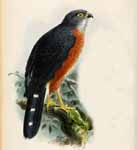
Goshawk,_Slaty-mantled Accipiter luteoschistaceus
Description: The slaty-mantled goshawk has slate-grey upperparts; white underparts. The cere and legs are orangel-yellow. The bill has a black tip.
Range: New Guinea.
`
Habitat: Forests and area with adjacent trees.
Diet: Information lacking.
Conservation status: The slaty-mantle goshawk is listed as Vulnerable because of lack of information about its population which is thought to be decreasing.
Image by: 1) Katerina_Tvardikova Bird images unavailable.Range: New Guinea.
`
Habitat: Forests and area with adjacent trees.
Diet: Information lacking.
Conservation status: The slaty-mantle goshawk is listed as Vulnerable because of lack of information about its population which is thought to be decreasing.
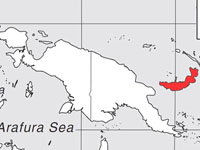
Goshawk,_Spot-tailed Accipiter trinotatus
Description: The spot-tailed goshawk, also known as the spot-tailed sparrowhawk, has one or more white spots on its tail. It has grey upperparts, white underparts with perhaps some pink on its breast. It has a dark bill plus yellow lores and legs.
Range: Sulawesi of Indonesia.
Habitat: Primary forest and tall secondary forest.
Diet: Mainly snakes, lizards; also frogs, snail, insect; occasionally birds.
Conservation status: Least Concern.
Image by: 1) Marcel_Holyoak Range: Sulawesi of Indonesia.
Habitat: Primary forest and tall secondary forest.
Diet: Mainly snakes, lizards; also frogs, snail, insect; occasionally birds.
Conservation status: Least Concern.
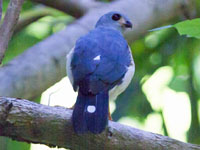
Goshawk,_Sulawesi Accipiter griseiceps
Description: The Suawesi goshawk has dark brown upperparts, grey head, and white underparts with dark streaks except for the belly. The legs are yellow, the bill is dark tipped with a yellowish cere. The female weight approximatly 300 g.
Range: Sulawesi Indonesia.
Habitat: Forest, wooded savannas.
Diet: Lizards, birds, insects, small mammals.
Conservation status: Least Concern.
Image by: 1) Joseph Wolf Range: Sulawesi Indonesia.
Habitat: Forest, wooded savannas.
Diet: Lizards, birds, insects, small mammals.
Conservation status: Least Concern.

Goshawk,_Variable Accipiter hiogaster
Description: The variable goshawk has varied plumage. It has generally grey upperparts with paler head and rufous underparts. It may have a rufous collar.
Range: New Guinea, Solomon Islands.
Habitat: Forests with room to fly, forest edges, treed savanas.
Diet: Lizards, birds, insects, small mammals.
Conservation status: Least Concern.
Image by: 1) Oleg_Chernyshov 2) Nik_Borrow 3) lan_WardiansyahRange: New Guinea, Solomon Islands.
Habitat: Forests with room to fly, forest edges, treed savanas.
Diet: Lizards, birds, insects, small mammals.
Conservation status: Least Concern.
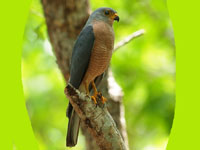
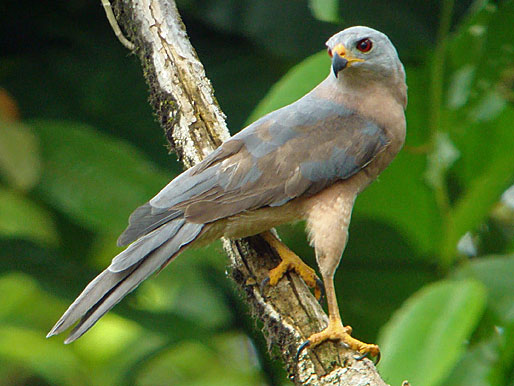
Hawk,_Bicolored Accipiter bicolor
Description: The bicolored hawk has grey upperparts with darker wings and crown. It has pale grey to dark grey underparts and rufous thighs. The male weighs up to 275 grams, female up to 600 g.
Range: south Mexico, Central America, South America.
Habitat: Forest, forest edges, clearings.
Diet: Mainly birds. Also mammals, reptiles. Stalks from perch in tree or flying through forest.
Conservation status: Least Concern.
Image by: 1) Chris_Jimenez - Costa Rica 2) barloventomagicoRange: south Mexico, Central America, South America.
Habitat: Forest, forest edges, clearings.
Diet: Mainly birds. Also mammals, reptiles. Stalks from perch in tree or flying through forest.
Conservation status: Least Concern.
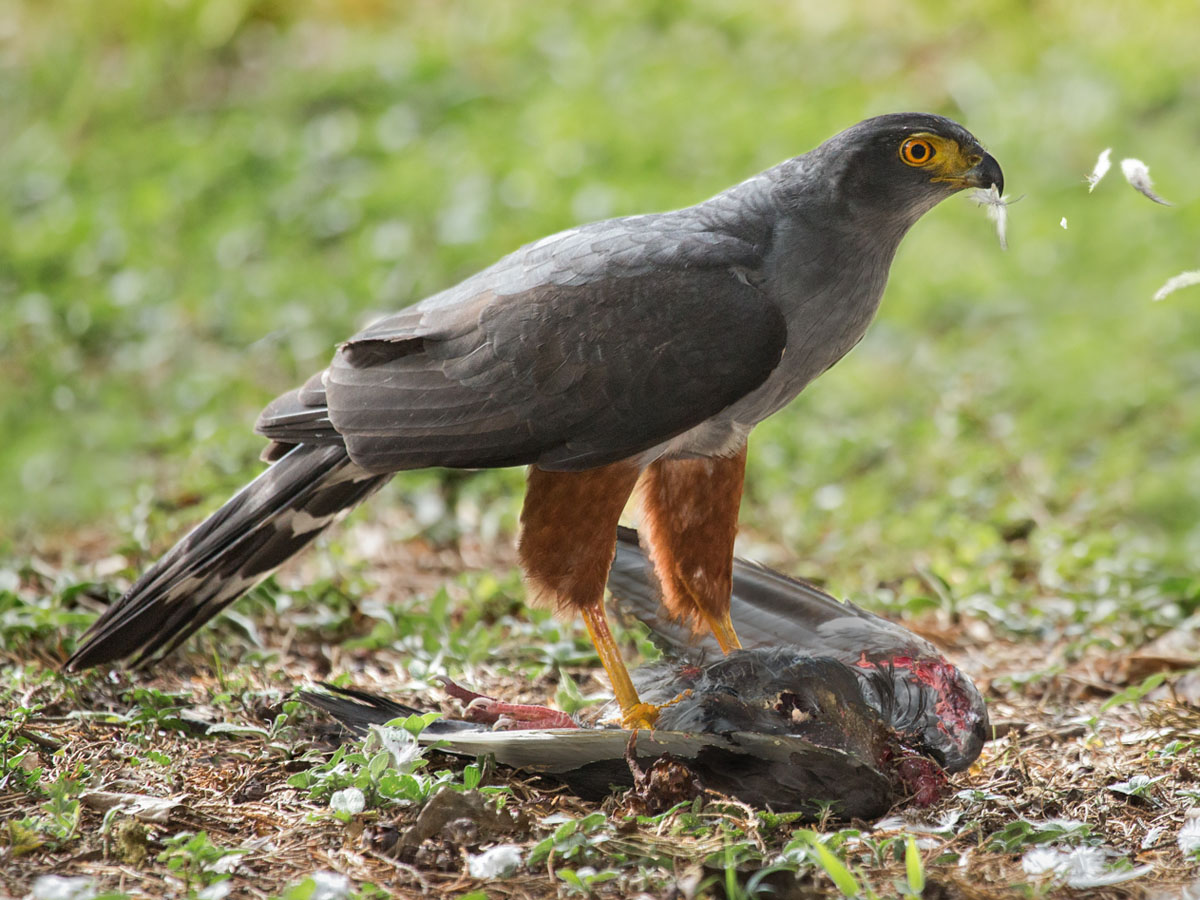
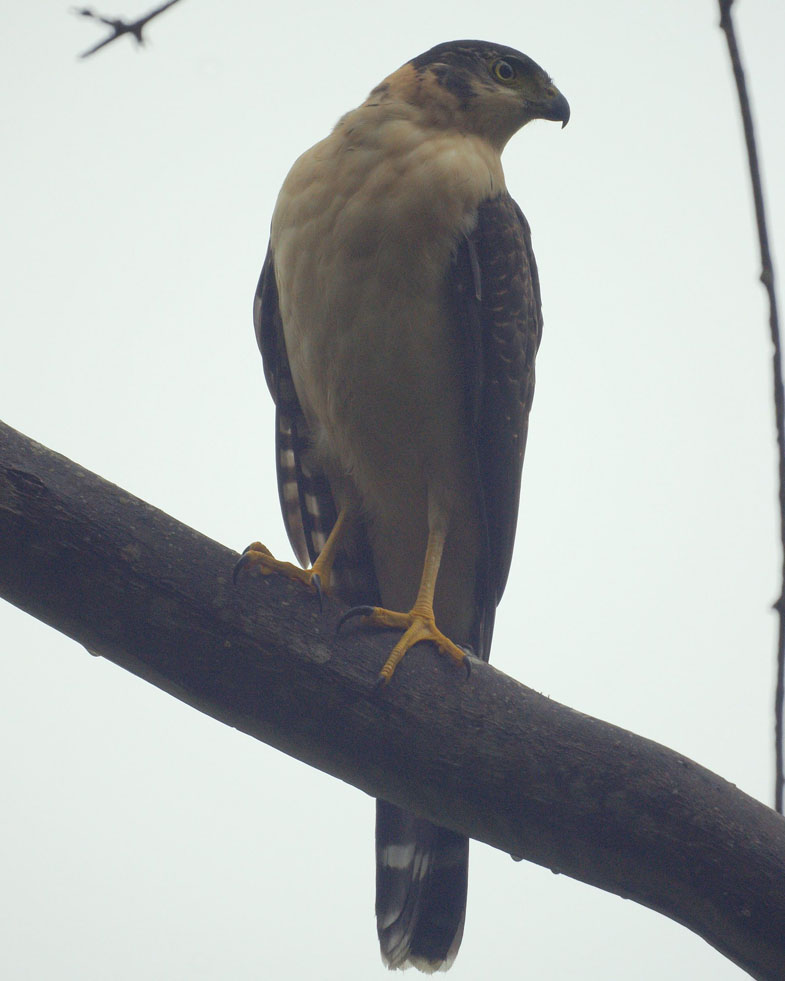
Hawk,_Cooper's Accipiter cooperii
Description: The Cooper's hawk has blue-grey or brown-grey upperparts, a dark crown, reddish underparts with thin white bars, and white under-tail with dark bands. It is similar to the northern goshawk which can be distinguished by its distinct white eyebrow. It is also similar to the sharp-shinned hawk which has a rectantural tail ene whitle the Cooper's hawk has rounded tail end. The male averages 350 grams, female averages 530 g.
Range: North America.
Habitat: A varied of treed areas, even urban ones.
Diet: Birds, small mammals.
Conservation status: Least Concern.
Image by: 1) Alan D. Wilson -
British Columbia 2) Don Madison - New Jersey 3) Janet and Phil - Illinois 4) Dmitry Mozzherin Range: North America.
Habitat: A varied of treed areas, even urban ones.
Diet: Birds, small mammals.
Conservation status: Least Concern.
1) Juvenile
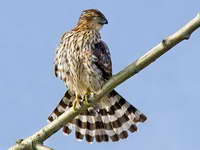

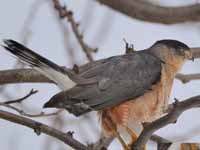
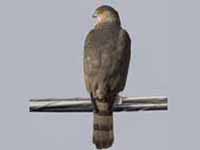
Hawk,_Gray-bellied Accipiter poliogaster
Description: The Gray-bellied hawk, also known as the grey-bellied goshawk, has blackish upperparts; whitish underparts; black tail with 3 light bands. The female has a uniformly dark head while the male has darker crown. The feet, legs, cere and orbital skin are yellow. The bill is black.
Range: South America.
Habitat: Forest, forest edges, and surroundings.
Diet: Uncertain. Probably birds and small mammals.
Conservation status: The grey-bellied hawk is listed as Near Threatened because its population is known to be declining in some areas.
Image by: 1) John Gerrard Keulemans 2) Keith_Wilson - EcuadorRange: South America.
Habitat: Forest, forest edges, and surroundings.
Diet: Uncertain. Probably birds and small mammals.
Conservation status: The grey-bellied hawk is listed as Near Threatened because its population is known to be declining in some areas.
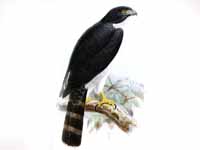

Hawk,_Gundlach's Accipiter gundlachi
Description: The Gundlach's hawk is a medium sized hawk. It has dark bluish-grey upperparts and a black crown. The underparts are pale with rufous barring which is more prominent on the thights.
Range: Cuba.
Habitat: Treed areas.
Diet: Mainly birds.
Conservation status: The Gundlach's hawk is listed as Endangered because it has a small and fragmented population. There are indications that the population has stabilized.
Image by: 1) Karel Cardet 2) Brian Henderson Range: Cuba.
Habitat: Treed areas.
Diet: Mainly birds.
Conservation status: The Gundlach's hawk is listed as Endangered because it has a small and fragmented population. There are indications that the population has stabilized.
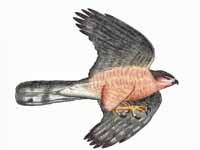

Hawk,_Sharp-shinned Accipiter striatus
Description: The sharp-shinned hawk has blue-grey upperparts, white underparts with thin rufous bars, and a white under-tail with dark bands. It has yellow eyes. cere, and legs. The bill is black. The male weighs up to 115 grams, female up to 220 g which makes it one of the smallest hawks.. It has a rectangular tail end which helps distinguish it from the similar cooper's hawk. which has a rounded tail end. The northern goshawk has distinct white eyebrow which seperates it from the sharp-shinned hawk.
Range: The Americas.
Habitat: Forest, forest edges, and surroundings.
Diet: Mainly birds; also mice, lizards, insects.
Conservation status: Least Concern.
Image by: 1) Louis Agassiz Fuertes, USFWS 2) Trisha Shears 3) Chuck Roberts - Colorado 4) Kelly Azar - Pennsylvania 5) Dario Sanches Range: The Americas.
Habitat: Forest, forest edges, and surroundings.
Diet: Mainly birds; also mice, lizards, insects.
Conservation status: Least Concern.
1) Cooper hawk on left, Sharp-shinned on right 2) Juvenile
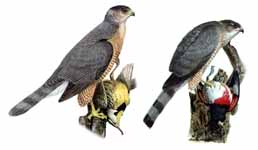

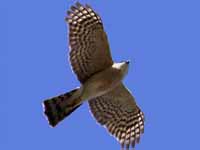
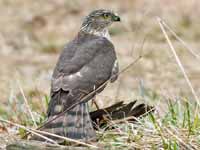

Hawk,_Tiny Accipiter superciliosus
Description: The tiny hawk is one of the tiniest raptors in the world. The little sparrowhawk of Africa might be smaller. The tiny hawk has blackish upperparts, dark cap, and fine barring on light underparts. The juvenile may have brown or rufous barring.
Range: neotropical Central and South America.
Habitat: Forest and forest edges.
Diet: Little data.
Conservation status: Least Concern.
Image by: 1) Keith Bowers 2, 3) Felix_UribeRange: neotropical Central and South America.
Habitat: Forest and forest edges.
Diet: Little data.
Conservation status: Least Concern.
1) Juvenile 2, 3) Female on left, male on right. Portrays relative size of sexes.
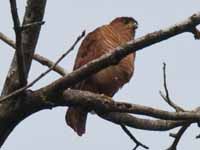
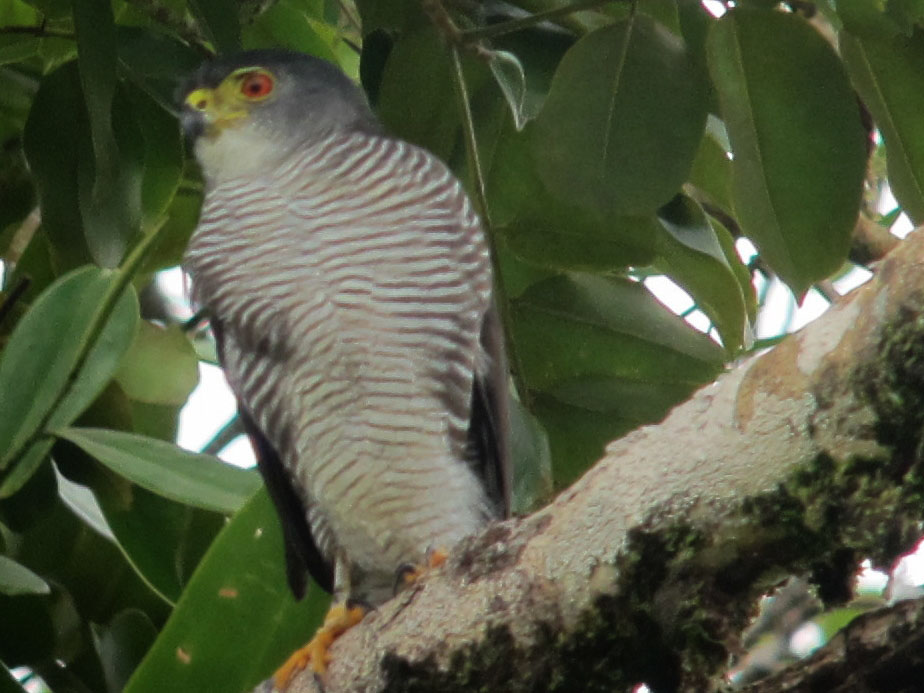
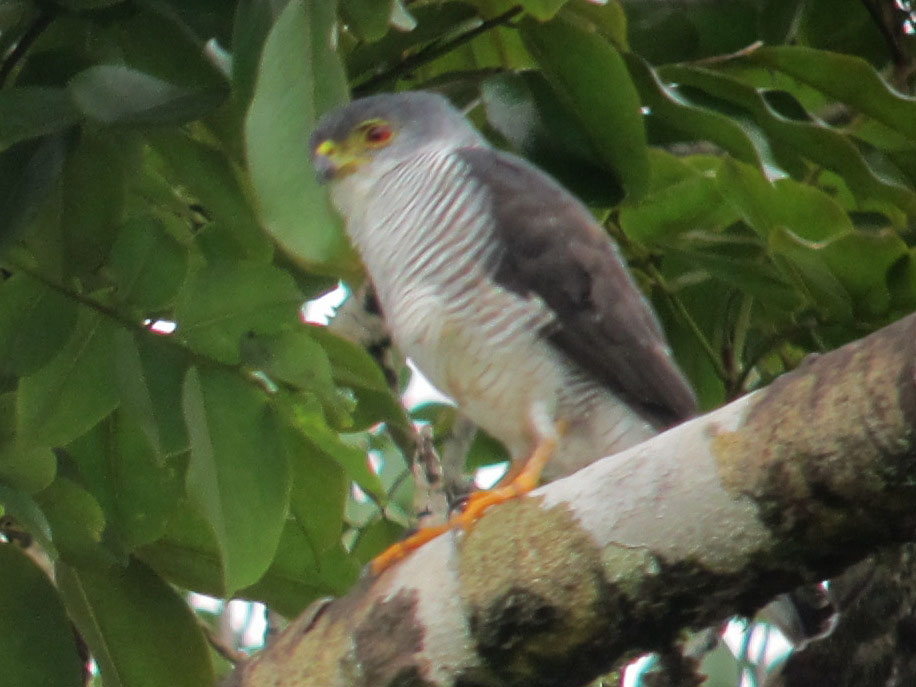
Shikra Accipiter badius
Description: The Shikra, also known as the little banded goshawk, has grey upperparts, and whitish underparts with fine rufuous bars. The lower belly has less barring. The shikra has yellow legs and ceres. The eyes are bright red. It is similar to the northern goshawk which has distinct white eyebrow.
Range: southern Asia, Sub-Saharan Africa.
Habitat: Broadleaf forests, open areas with nearby trees.
Diet: Mainly lizards and other reptiles. Also small birds.
Conservation status: Least Concern.
Image by: 1) Karunakar Rayker 2) Ravi Vaidyanathan 3) Raman_KumarRange: southern Asia, Sub-Saharan Africa.
Habitat: Broadleaf forests, open areas with nearby trees.
Diet: Mainly lizards and other reptiles. Also small birds.
Conservation status: Least Concern.
1) Juvenile

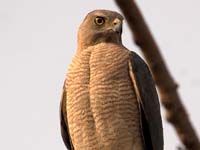

Sparrowhawk,_Black Accipiter melanoleucus
Description: The black sparrowhawk, also known as the black goshawk, has black upperparts. The underparts vary according to morph: usually mostly white with with some black on the flanks; also black morph has totally mainly black underparts. The male weighs up to 500 grams, female up to 1000 g.
Range: Africa.
Habitat: Nests in large trees. Not detered by human modified landscapes.
Diet: Mainly birds.
Conservation status: Least Concern.
Image by: 1, 4) Ian White 2, 3) OggmusRange: Africa.
Habitat: Nests in large trees. Not detered by human modified landscapes.
Diet: Mainly birds.
Conservation status: Least Concern.
1) Juvenile 2) White morpht 3, 4) Black morph
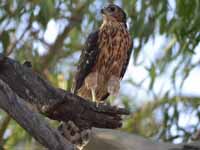
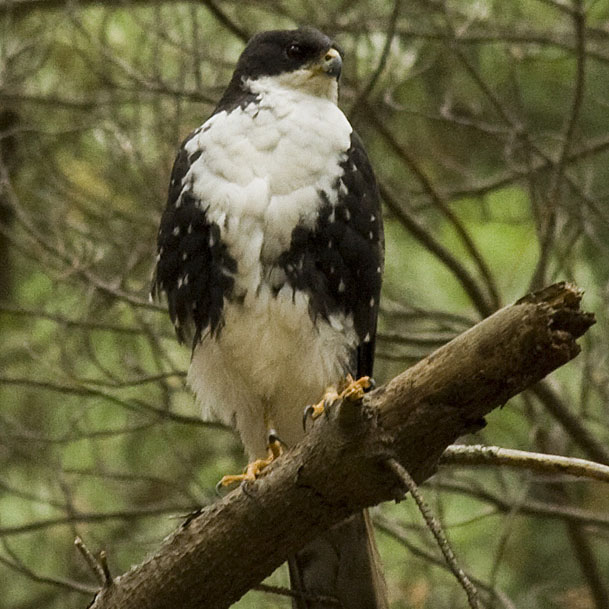
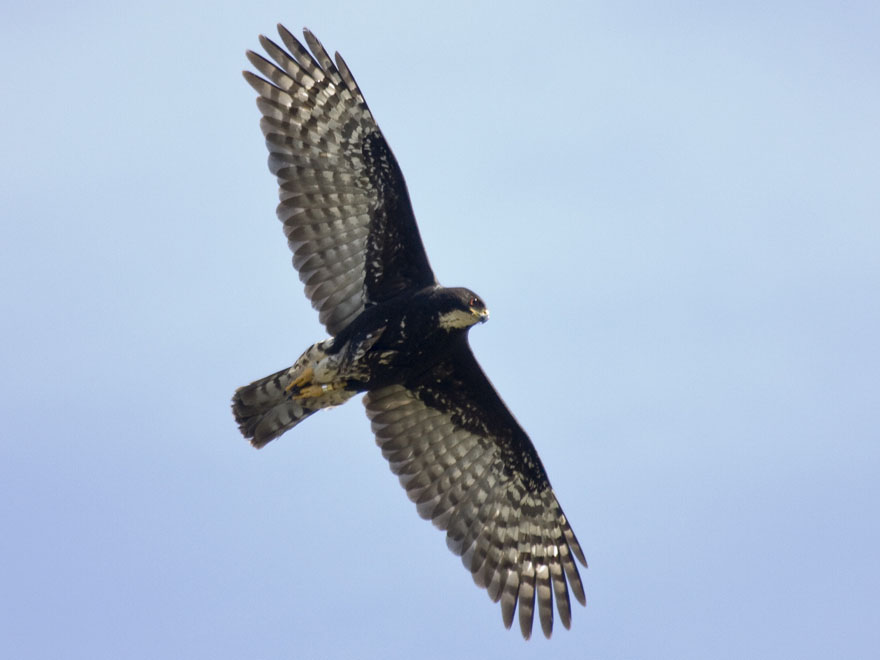
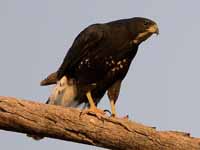
Sparrowhawk,_Chestnut-flanked Accipiter castanilius
Description: The chestnut-flanked sparrowhawk does have chesnut flanks. It has blackish-grey upperparts and a white throat. The eye-ring, lores, gape, and feet are yellow. The white breast is heavily barred and the belly is lightly barred.
Range: west central Africa.
Habitat: Tropical rainforest, mainly in the middle story.
Diet: Probably birds, reptiles, frogs, insects, rodents.
Conservation status: Least Concern.
Image by: 1) Joseph Smit Range: west central Africa.
Habitat: Tropical rainforest, mainly in the middle story.
Diet: Probably birds, reptiles, frogs, insects, rodents.
Conservation status: Least Concern.
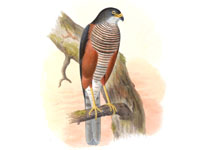
Sparrowhawk,_Chinese also Chinese Goshawk Accipiter soloensis
Description: The Chinese Sparrowhawk has grey upperparts with some white spots. The underparts are rufous with the male having a white belly, It has whitish underwing with dark tipped primaries. The male weighs up to 150 grams, female up to 200 g.
Range:China, southeast Asia, Indonesia, Philippines
Habitat: Wooded area and open areas with trees for perching nearby.
Diet: Frogs, insects. Also birds.
Conservation status: Least Concern.
Image by: 1, 4) PeiWen Chang 2, 3) Hiyashi HakaRange:China, southeast Asia, Indonesia, Philippines
Habitat: Wooded area and open areas with trees for perching nearby.
Diet: Frogs, insects. Also birds.
Conservation status: Least Concern.
1) Juvenile 2) Female 3) Male

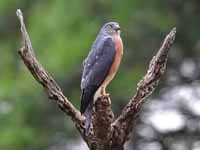
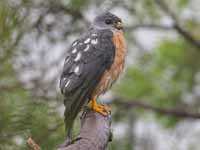
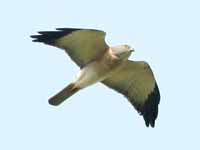
Sparrowhawk,_Collared Accipiter cirrocephalus
Description: The collared sparrowhawk has bluish-grey upperparts, chestnut collar, and rufous underparts with white barring. It has yellow eyes, cere, and legs. The male averages 125grams, averages 215 g. The similar brown goshawk is is larger.
Range: Australasia.
Habitat: Widespread and found most habitats except deserts.
Diet: Mainly birds. Also lizards and insects.
Conservation status: Least Concern.
Image by: 1) Sunphlo 2) Duncan_McCaskill 3) Lip KeeRange: Australasia.
Habitat: Widespread and found most habitats except deserts.
Diet: Mainly birds. Also lizards and insects.
Conservation status: Least Concern.

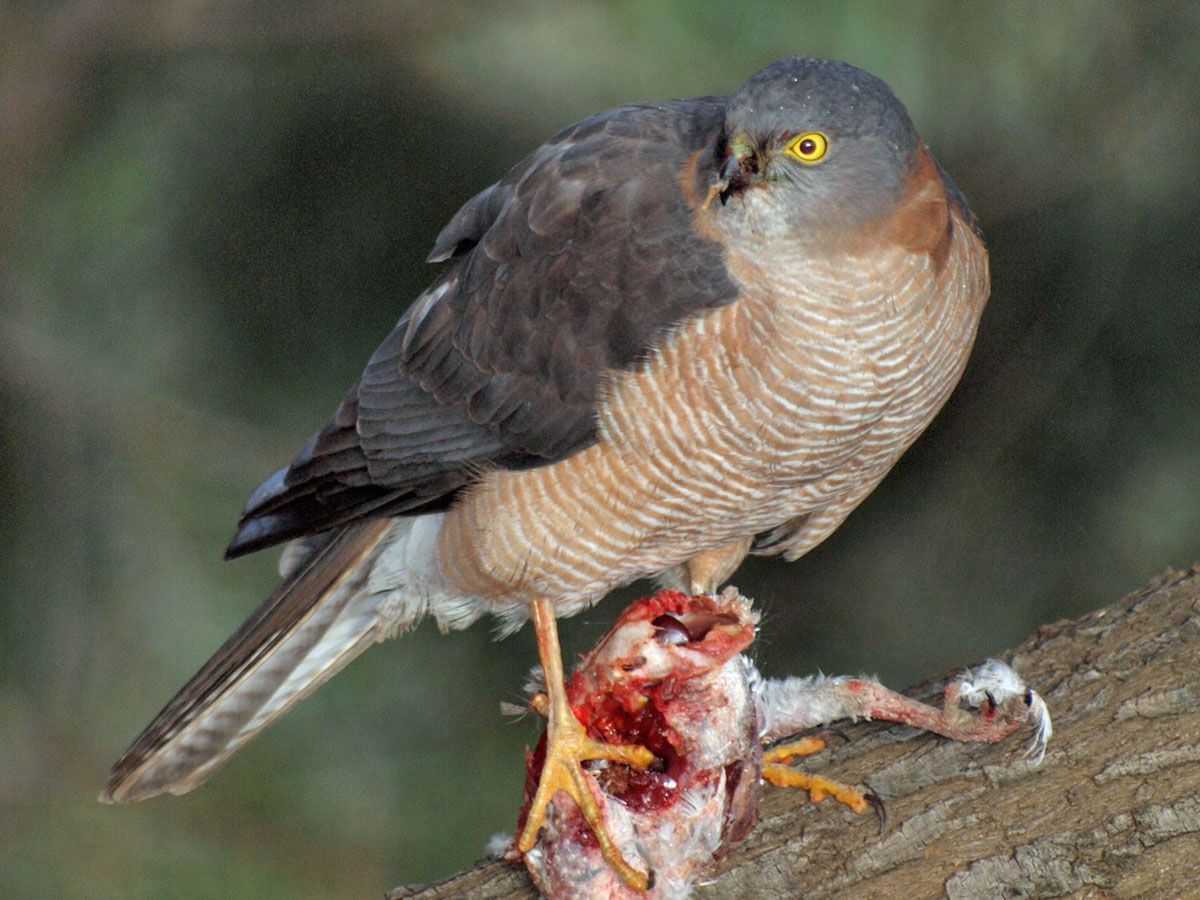
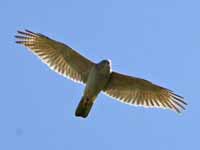
Sparrowhawk,_Eurasian Accipiter nisus
Description: The Eurasian sparrowhawk, also known as the northern sparrowhawk, has bluish-grey (male) or brownish-grey (female). Theunderparts are rufous with white barring. It has yellow eyes, cere, and legs. The male weighs up to 85 grams, white the female weights up to 105 g making this the smallest species of the genus.
Range: Europe, Asia, Africa.
Habitat: A variety of forests, but not usually urban one.
Diet: Mainly birds. Prefers young in a nest.
Conservation status: Least Concern.
Image by: 1) Eddy Van 3000 2) Keith Laverack - England 3) Christian Knoch Range: Europe, Asia, Africa.
Habitat: A variety of forests, but not usually urban one.
Diet: Mainly birds. Prefers young in a nest.
Conservation status: Least Concern.
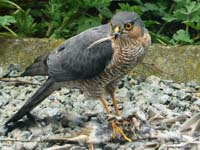
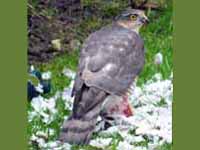
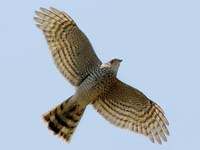
Sparrowhawk,_Imitator Accipiter imitator
Description: The imitator sparrowhawk has black upperparts, head, and neck. The breast by be black or white depending on the morph. The both have a white belly. The male weighs about 200 grams, female about 300 g.
Range: New Guinea, Solomon Islands.
Habitat: Dense forest.
Diet: Unknown.
Conservation status: The imitator sparrowhawk is listed as Vulnerable because it is only very infrequently seen.
Image by: 1) Katerina_Tvardikova No photos in public domainRange: New Guinea, Solomon Islands.
Habitat: Dense forest.
Diet: Unknown.
Conservation status: The imitator sparrowhawk is listed as Vulnerable because it is only very infrequently seen.
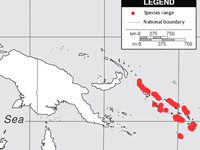
Sparrowhawk,_Japanese Accipiter gularis Found: Asia, Indonesia, Philippines
Description: The male Japanese sparrowhawk has grey upperparts. whitish underparts with moderate barring and varying amount of rufous wash. He has red eyes. The female has brown upperparts with brown barring and no rufous wash. Her eyes are yellow. Both sexes have yellow eye-rings. The male weighs up to 150 grams, white the female weights up to 200 g.
Range: Breeds in China, Japan, Korea and Siberia; winters in Indonesia and Philippines, passing through the rest of South-east Asia.
Habitat: Forest, but will hunt in open areas.
Diet: Mainly birds. Also rodents, lizards, insects.
Conservation status: Least Concern.
Image by: 1) Philipp Seabold 2) Nmspec 3) KestrelRange: Breeds in China, Japan, Korea and Siberia; winters in Indonesia and Philippines, passing through the rest of South-east Asia.
Habitat: Forest, but will hunt in open areas.
Diet: Mainly birds. Also rodents, lizards, insects.
Conservation status: Least Concern.
1) Male front, female back 2, 3) Male
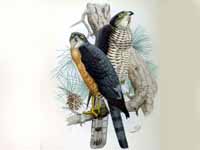

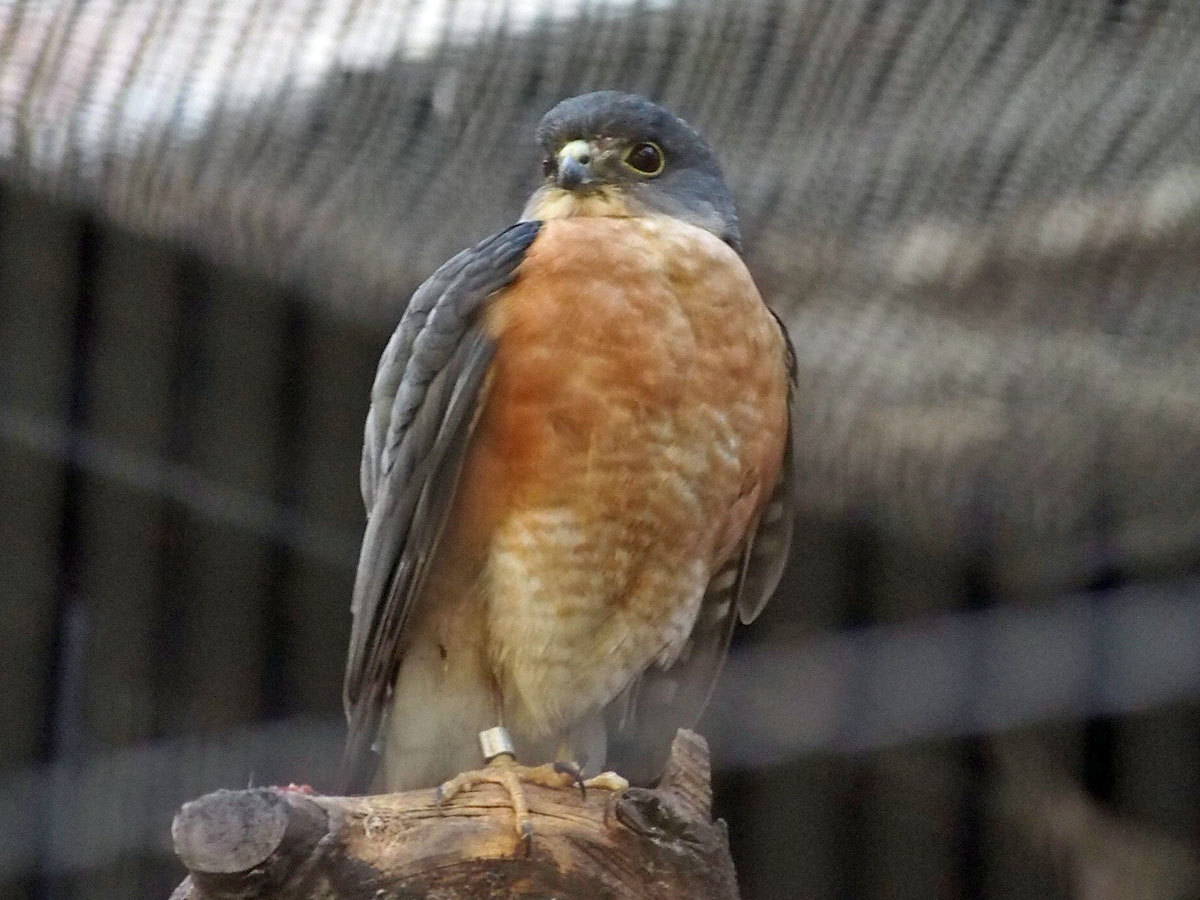
Sparrowhawk,_Levant Accipiter brevipes
Description: The male Levant sparrowhawk has blue-grey upperparts, dark wing-tips and barred reddish underparts. The female has slate-grey upperparts, darkish wing-tips, and barred reddish-brown underparts. The male weighs up to 275 grams, female up to 300 g.
Range: Africa, Asia, Tunisia.
Habitat: Wooded savana. Nest in trees in open areas.
Diet: Birds, insects, rodents, lizards.
Conservation status: Least Concern.
Image by: 1) Lajos.rozsa 2) Alexandros_Gassios 3) Marcel_HolyoakRange: Africa, Asia, Tunisia.
Habitat: Wooded savana. Nest in trees in open areas.
Diet: Birds, insects, rodents, lizards.
Conservation status: Least Concern.

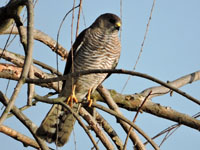
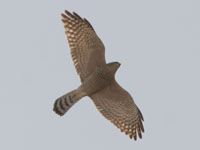
Sparrowhawk,_Little Accipiter minullus
Description: The male little sparrowhawk has dark dark-grey upperparts and white underparts with fine rufous barring. The female has browner upperparts and white underparts with brown bars. For both sexes, two or three bars are visible on the upper-tail and the cere, eye, plus legs are yellow. The male weighs up to 150 grams, white the female weights up to 200 g.
Range: eastern and southern Sub-Saharan Africa.
Habitat: Forest or open area with trees nearby.
Diet: Mainly small birds. Also lizards, bats, insects. It hunts from a perch.
Conservation status: Least Concern.
Image by: 1, 3) Charles_Sharp - South Africa 2) Bernard_Dupont - South AfricaRange: eastern and southern Sub-Saharan Africa.
Habitat: Forest or open area with trees nearby.
Diet: Mainly small birds. Also lizards, bats, insects. It hunts from a perch.
Conservation status: Least Concern.
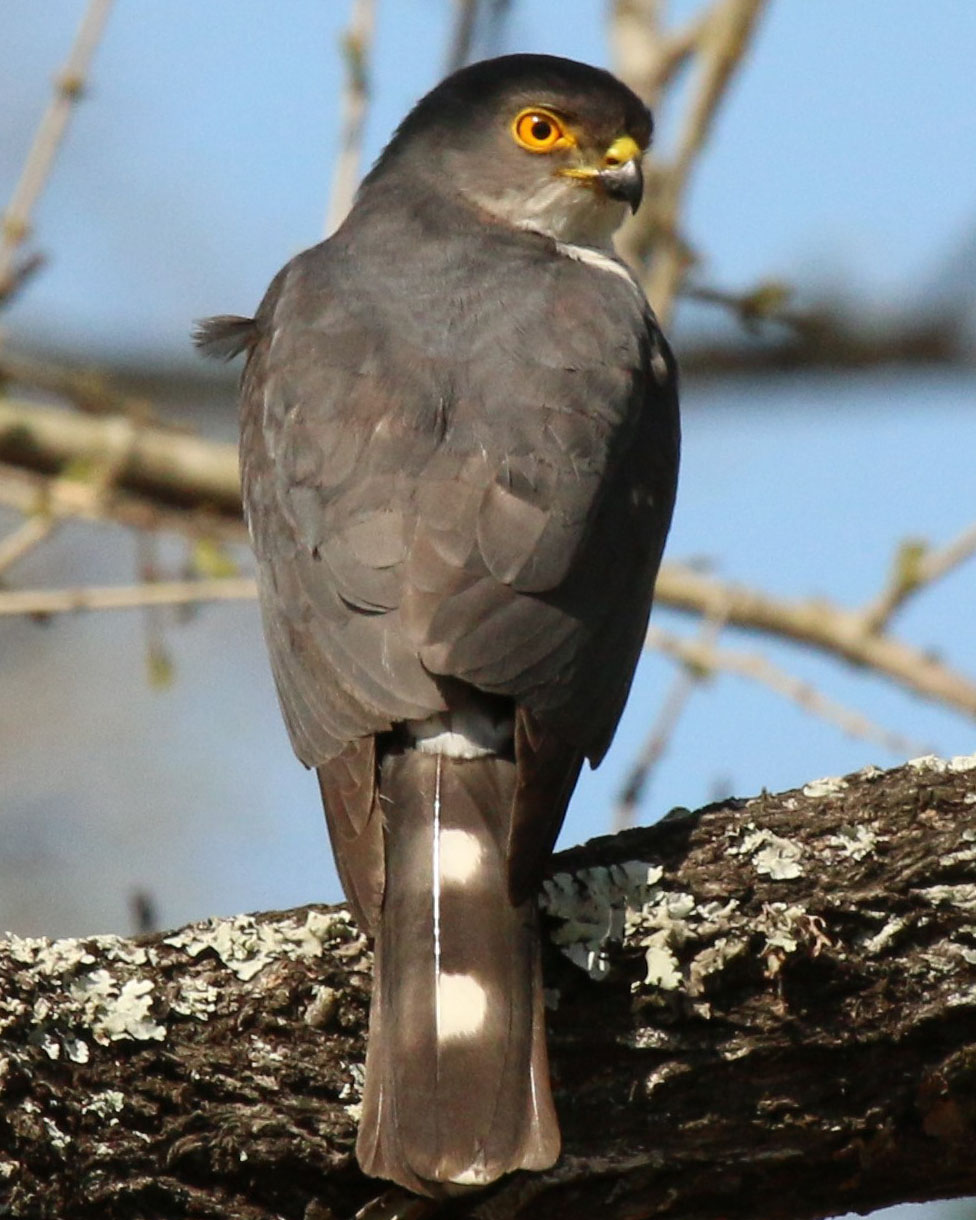

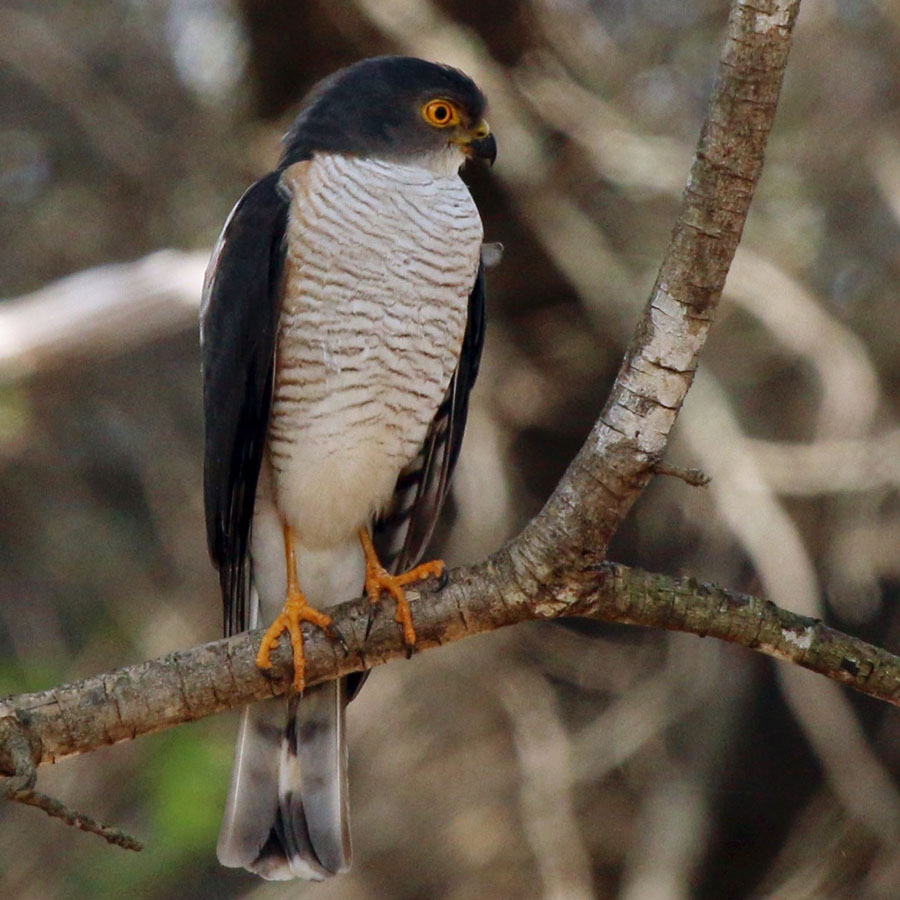
Sparrowhawk,_Madagascar Accipiter madagascariensis
Description: The Madagascar sparrowhawk has dark greyish-brown upperparts and the underparts are white with thin dark bars. The tail is greyish-brown with thin dark bands. The eyes, cere, and legs are yellow.
Range: Madagascar.
Habitat: Forest or open area with trees nearby.
Diet: Birds. Also frogs, reptiles, insects.
Conservation status: The Madagascar sparrowhawk is listed as Near Threatened because even thought there may be of 10,000 birds the population is feared to be decling rapidly.
Image by: 1) Halljo22 2) Francesco_Veronesi Range: Madagascar.
Habitat: Forest or open area with trees nearby.
Diet: Birds. Also frogs, reptiles, insects.
Conservation status: The Madagascar sparrowhawk is listed as Near Threatened because even thought there may be of 10,000 birds the population is feared to be decling rapidly.
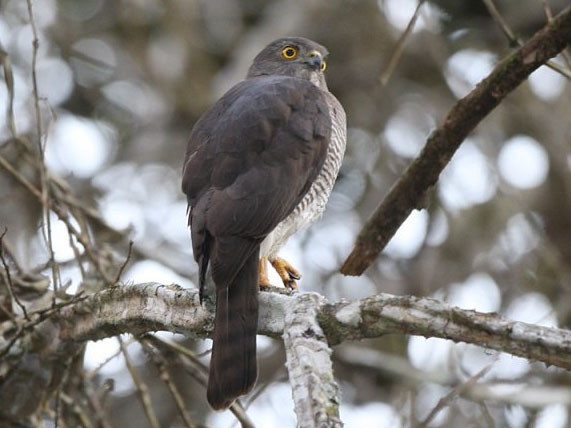
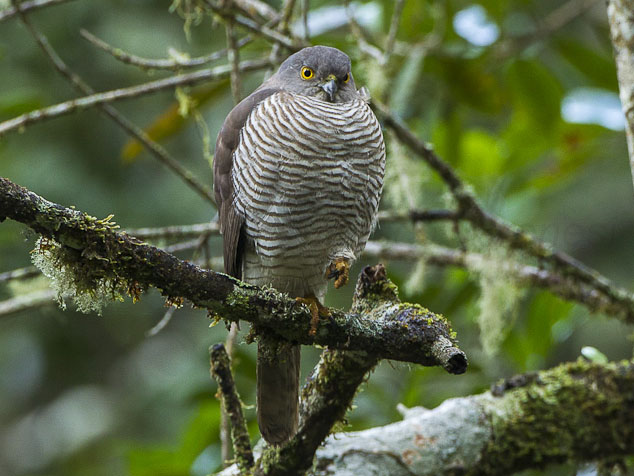
Sparrowhawk,_Ovambo Accipiter ovampensis
Description: The Ovambo sparrowhawk has grey upperparts, white underparts with fine grey bars, and a white vent. the tail has 4 dark bars and a thin white terminal bar. The male weighs up to 190 grams, female up to 300 g.
Range: Sub-Saharan Africa.
Habitat: Forest edges and other open areas with trees neraby.
Diet: Mainly birds. Hunts by soaring, not perching as does most of the genus.
Conservation status: Least Concern.
Image by: 1) John Gerrard Keulemans 2) Steve Garvie - Kenya 3) Ron_Knight - CameroonRange: Sub-Saharan Africa.
Habitat: Forest edges and other open areas with trees neraby.
Diet: Mainly birds. Hunts by soaring, not perching as does most of the genus.
Conservation status: Least Concern.
2) Juvenile (light phase)
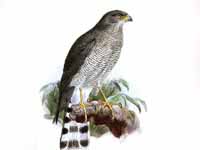
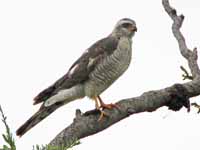

Sparrowhawk,_Red-thighed Accipiter erythropus
Description: The male red-thighed sparrowhawk has very dark grey upperparts, white cresent on lower rump, white throat, pinkish white underparts, red eye-ring, orange-red cere and orange-yellow legs. Female has browner upperparts.
Range: west-central Africa.
Habitat: Forests without dense undergrowth, forest edges, clearings.
Diet: Birds. Also lizards, amphibian, insects.
Conservation status: Least Concern.
Image by: 1) John_Gerrard_KeulemansRange: west-central Africa.
Habitat: Forests without dense undergrowth, forest edges, clearings.
Diet: Birds. Also lizards, amphibian, insects.
Conservation status: Least Concern.
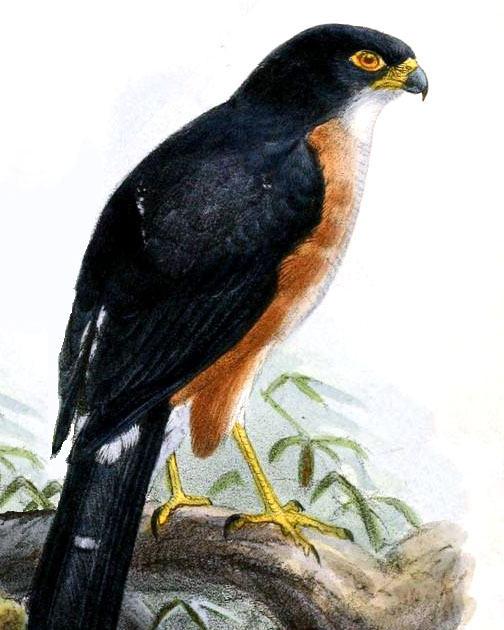
Sparrowhawk,_Rufous-breasted Accipiter rufiventris
Description: The Rufous-breasted Sparrowhawk has grey upperparts, cap, and nape. It has a whitish throat plus rufous underparts.
Range: Africa.
Habitat: Nests in forests, hunts in open areas.
Diet: Mainly birds. Hunts from perch.
Conservation status: Least Concern.
Image by: 1) Alan Manson - South Africa 2, 3) Nik Borrow - Malawi and TanzaniaRange: Africa.
Habitat: Nests in forests, hunts in open areas.
Diet: Mainly birds. Hunts from perch.
Conservation status: Least Concern.
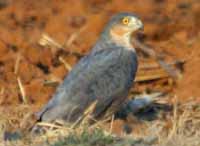
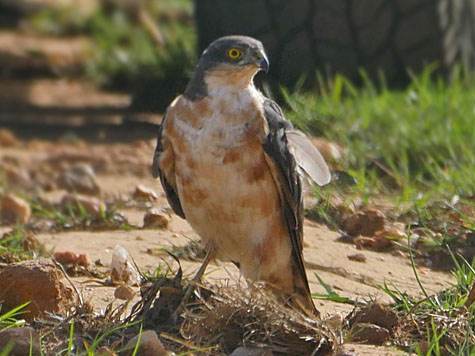
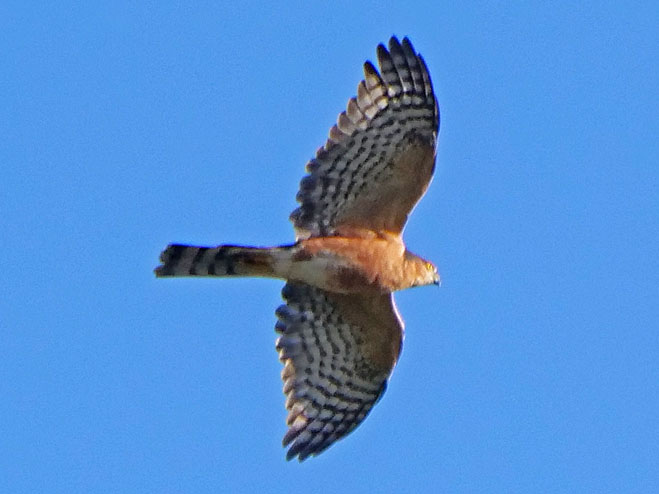
Sparrowhawk,_Rufous-necked Accipiter erythrauchen
Description: The rufous-necked sparrowhawk has blue-grey upperparts, rufous neck, rufous--pink underparts fading to white at the belly, yellow feet and a yellow black-tipped bill. The juvenile has brown plumage.
Range: Maluku Islands of Indonesia.
Habitat: Primary forests, other forests without dense undergrowth.
Diet: Mainly birds.
Conservation status: The rufous-necked sparrowhawk is listed as Near Threatened because it has a restricted range and it is uncertain whether or not the populaiton is decreaing.
Image by: 1) Joseph_Wolf Range: Maluku Islands of Indonesia.
Habitat: Primary forests, other forests without dense undergrowth.
Diet: Mainly birds.
Conservation status: The rufous-necked sparrowhawk is listed as Near Threatened because it has a restricted range and it is uncertain whether or not the populaiton is decreaing.
1) Adult and juvenile
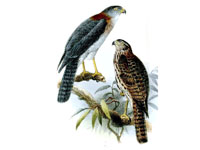
Sparrowhawk,_Semi-collared Accipiter collaris
Description: The semi-collared sparrohawk has black upperparts, white band on part of the back of neck, white throat, pale underparts with black barring. Barring is heaviest on the flanks.
Range: Colombia, Ecuador, Peru, Venezuela.
Habitat: Forest, forest edges.
Diet: Mainly birds.
Conservation status: Least Concern.
Image by: 1) Joseph_WolfRange: Colombia, Ecuador, Peru, Venezuela.
Habitat: Forest, forest edges.
Diet: Mainly birds.
Conservation status: Least Concern.
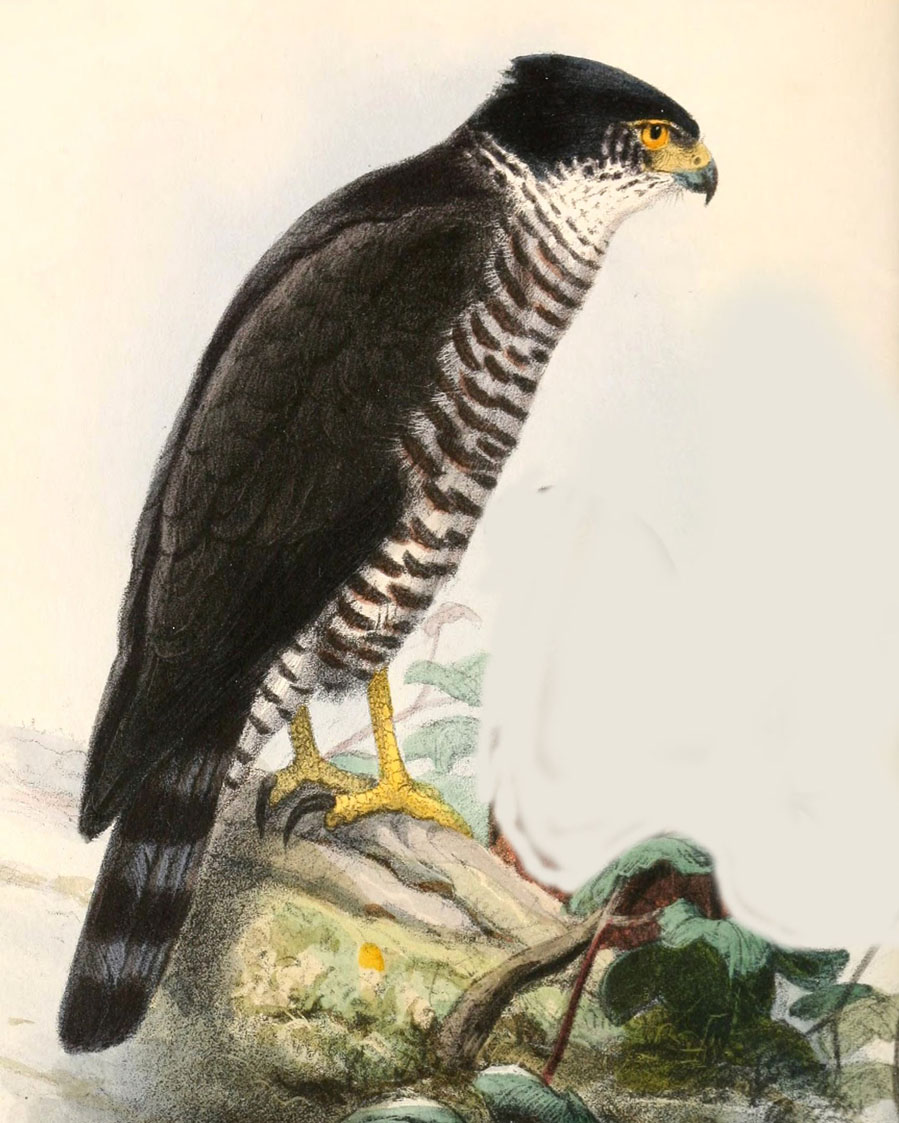
Sparrowhawk,_Small Accipiter nanus
Description: The small sparrowhawk, also known as the dwarf sparrowhawk, has grey upperparts, yellow eye-ring, white underparts with some pink on its breast. It has a dark bill plus yellow lores and legs. It is one of the smallest raptors of its family.
Range: Buton and Sulawesi of Indonesia.
Habitat: Forests with room to manoever in the understroy.
Diet: Insects; also birds.
Conservation status: The small sparrowhawk is listed as Near Threatened because it is not frequently identified and thus the population trend is unknown.
No images in public domain.Range: Buton and Sulawesi of Indonesia.
Habitat: Forests with room to manoever in the understroy.
Diet: Insects; also birds.
Conservation status: The small sparrowhawk is listed as Near Threatened because it is not frequently identified and thus the population trend is unknown.
Genus Circus
Harriers characteristically hunt by flying low over open ground such as grassland or marshes, feeding on small mammals, reptiles, or birds. These harriers have a slim body, narrow wings and a long tail. Harriers nest on the ground. Males and females have distinct plumage.
See Polyboroides for more Harriers.
Harrier,_African Marsh- Circus ranivorus
Description: The African marsh-harrier has mainly brown plumage. There is pale streaking on the head and breast and rufous streaking on the thighs and belly. The tail and flight feathers are darkly barred. It has yellow eyes and legs and weighs up to 600 grams. The African marsh-harrier has darker underparts and head than the similar western marsh-harrier.
Range: Africa.
Habitat: Marshes, reedbeds. Also grasslands and cultivated areas near wetlands.
Diet: Birds, rodents, eggs, insects. Also carrion.
Conservation status: Least Concern.
Image by: 1) Robert Simmons 2) Tarique Sani - Botswana 3) Sias van Schalkwyk - South AfricaRange: Africa.
Habitat: Marshes, reedbeds. Also grasslands and cultivated areas near wetlands.
Diet: Birds, rodents, eggs, insects. Also carrion.
Conservation status: Least Concern.
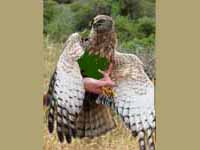
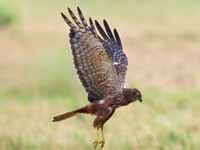
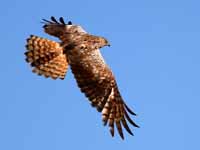
Harrier,_Black Circus maurus
Description: The black Harrier has mainly black plumage including black under-wing coverts. It has white flight feathers and white bands on the tail. They are up to 50 cm (20 in) long.
Range: Botswana, Nambia, South Africa.
Habitat: Scrub, grassland, coastal thickets, cereal farmland.
Diet: Mainly birds. Also eggs, rodents, insects.
Conservation status: The black harrier is listed as Endangered because the population numbers only about 1000. Their primary threat is due to agriculture expansion.
Image by: 1) Coenraad Jacob Temminck 2) Stephen_Temple 3) Jackie During Range: Botswana, Nambia, South Africa.
Habitat: Scrub, grassland, coastal thickets, cereal farmland.
Diet: Mainly birds. Also eggs, rodents, insects.
Conservation status: The black harrier is listed as Endangered because the population numbers only about 1000. Their primary threat is due to agriculture expansion.
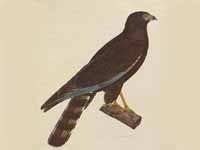

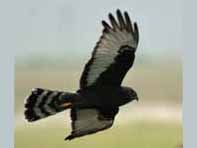
Harrier,_Cinereous Circus cinereus
Description: The male cinereous harrier has dark grey upperparts, pale grey underparts with a rufous streaked belly, black wingtips, and a white rump. The female has mainly brown upperparts, brown underparts with a steaked breast and upper-belly. The rump is white. The female's average length is 45 cm and its weighs up to 510 grams.
Range: South America.
Habitat: Grasslands, savannas, and near waterbodies.
Diet: Mainly birds. Also rodents andinsects.
Conservation status: Least Concern.
Image by: 1) Pete Weis 2) Ron Knight - Argentina 3) Hans Zwitzer - Argentina 4) Dick Culbert - Argentina 5) Claudio Timm - BrazilRange: South America.
Habitat: Grasslands, savannas, and near waterbodies.
Diet: Mainly birds. Also rodents andinsects.
Conservation status: Least Concern.
1, 2, 3) Female 4, 5) Male
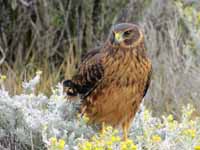
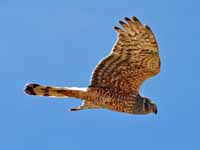
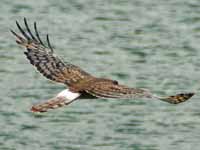
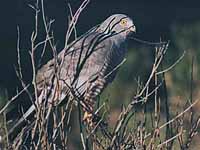
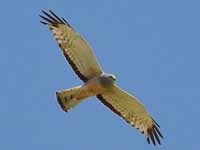
Harrier,_Eastern Marsh- Circus spilonotus
Description: The male eastern marsh-harrier has blackish upperparts with some ares white, expecially the head and belly. The female has has warm brown plumage with some dark streaking on the head and underparts.
Range: eastern Asia, New Guinea.
Habitat: Marshes, grasslands near water.
Diet: Birds, chicks, eggs, rodents. Also snakes, fish.
Conservation status: Least Concern.
Image by: 1, 2, 4) Andy Li 3) Frankie Chu Range: eastern Asia, New Guinea.
Habitat: Marshes, grasslands near water.
Diet: Birds, chicks, eggs, rodents. Also snakes, fish.
Conservation status: Least Concern.
1) Female 2 - 4) Male
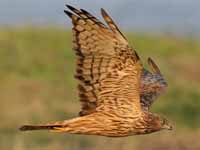

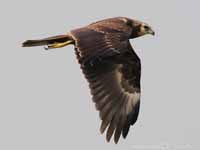
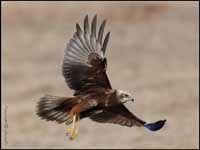
Harrier,_Long-winged Circus buffoni
Description: The long-winged harrier has blackish (male) or brown (female) upperparts, off-white underparts, and white face. A dark morph has brown underparts, face. The wings and tail are long. The male weighs up to 465 grams, female to 650 g.
Range: South America.
Habitat: Marshes, grasslands, crop fields, savanans.
Diet: Mainly birds. Also mammals, amphibians, reptiles.
Conservation status: Least Concern.
Image by: 1) Dario_Sanches 2, 3)
Cláudio Timm in Rio Grande do Sul, Brazil 3Range: South America.
Habitat: Marshes, grasslands, crop fields, savanans.
Diet: Mainly birds. Also mammals, amphibians, reptiles.
Conservation status: Least Concern.
1) Female 2, 3) Male
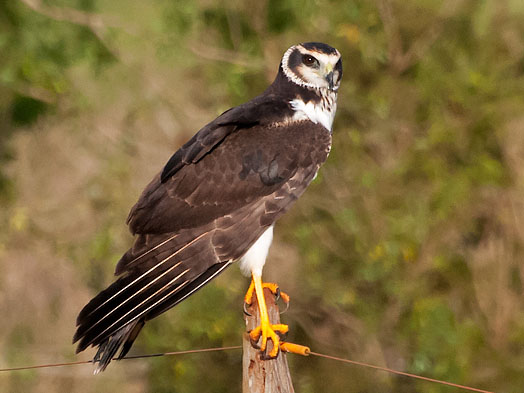

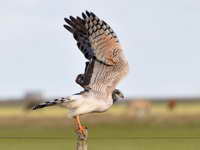
Harrier,_Montagu's Circus pygargus
Description: The male Montagu's harrier has mainly grey plumage. It has black wing-tips and black bands on the upper and lower wings. The female has dark brown upperparts, a white rump, and yellow-brown underparts with stripes. The similar northern harrier has barring on wing-tips whie Montagu's harrier does not. The very similar female pallid harrier has a pale collar while the female Montagu's harrier does not.
Range: Europe, Asia, Africa.
Habitat: It nests on the ground where the vegetation is tall enough for security. It hunts in areas with sparse vegetation so it can see its prey.
Diet: Birds, eggs, rodents, reptiles, insects.
Conservation status: Least Concern.
Image by: 1, 3) Tarique Sani 2) Vitaliy Khustochka - Ukraine 4) JV Verde - PortugalRange: Europe, Asia, Africa.
Habitat: It nests on the ground where the vegetation is tall enough for security. It hunts in areas with sparse vegetation so it can see its prey.
Diet: Birds, eggs, rodents, reptiles, insects.
Conservation status: Least Concern.
1, 2) Female 3, 4) Male
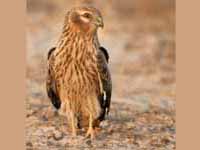

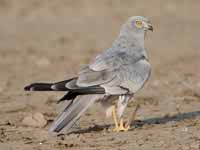
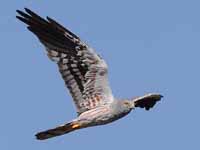
Harrier, Hen Circus cyaneus
Description: The male hen harrier has grey upperparts and upper-breast. The lower-breast and belly are whitish. It has a white rump and grey wings with black tips. The female has brown upperparts and buff underparts streaked with brown. She has white upper-tail coverts. The male weighs up to 400 grams, female up to 750 g. The hen harrier and northern harrier were previously considered conspecific.
Range: Europe, Asia.
Habitat: Marshes, fields, tundra, croplands.
Diet: Mainly mammals. Also birds, reptiles. Called hen harrier because or its reputation for taking chickens.
Conservation status: Least Concern.
Image by: 1) Stephan_Sprinz - Germany 2) Imran_Shah - Pakistan 3) Isle_of_Man_GovernmentRange: Europe, Asia.
Habitat: Marshes, fields, tundra, croplands.
Diet: Mainly mammals. Also birds, reptiles. Called hen harrier because or its reputation for taking chickens.
Conservation status: Least Concern.
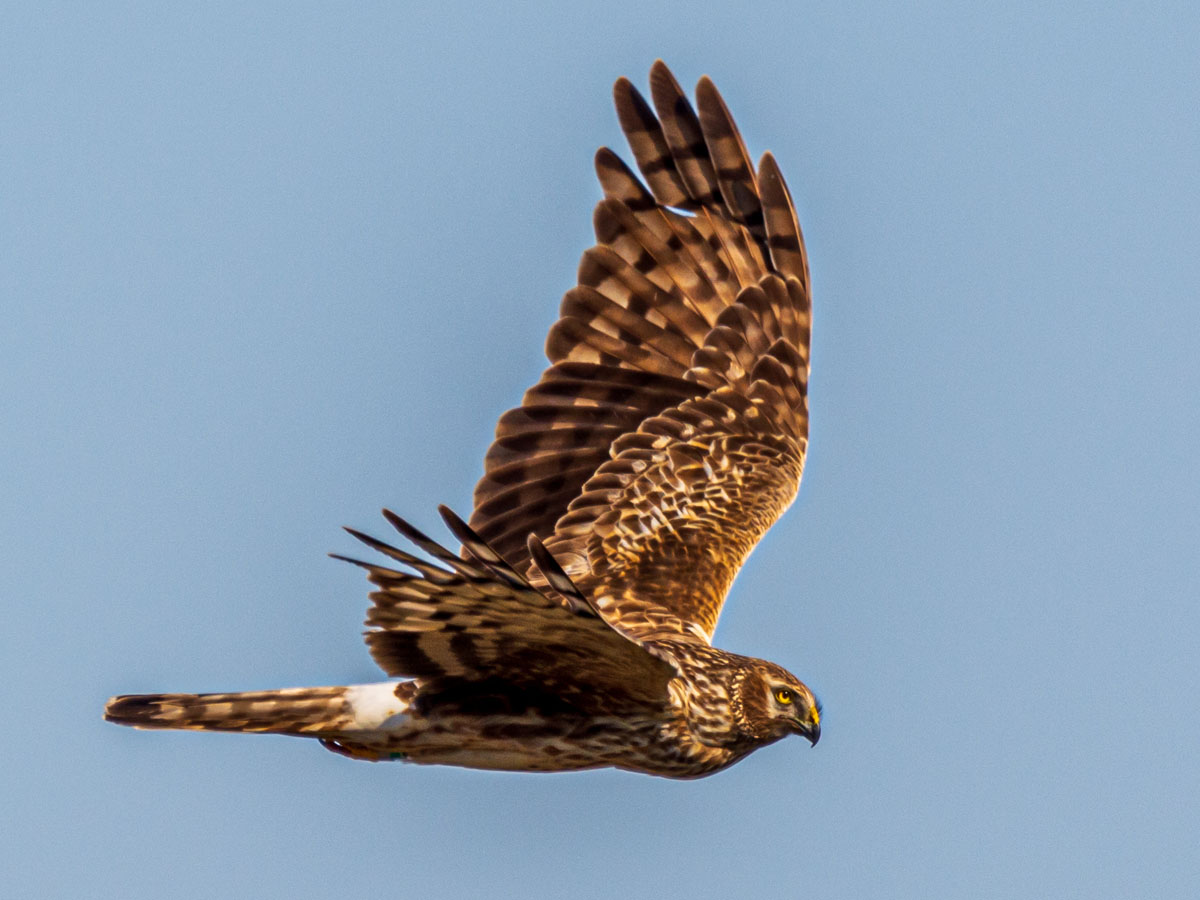

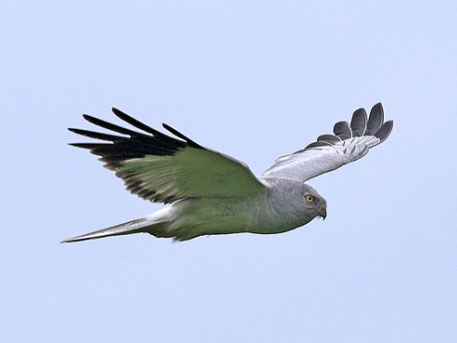
Harrier,_Northern Circus hudsonius
Description: The male northern harrier has grey upperparts, white underparts, and white under-wings with black primaries. The female has brown upperparts and buff underparts streaked with brown. The hen harrier and northern harrier were previously considered conspecific.
Range: North and Central America.
Habitat: Marshes, fields, tundra, croplands.
Diet: Birds, rodents, reptiles, frogs.
Conservation status: Least Concern.
Image by: 1, 2) Len Blumin - California 3) Alan D. Wilson - British Columbia 4) juvethskRange: North and Central America.
Habitat: Marshes, fields, tundra, croplands.
Diet: Birds, rodents, reptiles, frogs.
Conservation status: Least Concern.
1, 2, 3) Female 4) Male



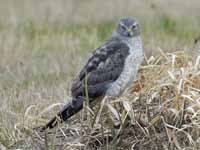
Harrier,_Pallid Circus macrourus
Description: The male pallid harrier has grey upperparts, white underparts, and black wingtips. The female has brown upperparts and buff underparts streaked with brown. The female Montagu's harrier is hard to distinguish from the female pallid harrier. The female pallid harrier has a pale collar, female Montagu's harrier does not.
Range: Europe, Asia.
Habitat: Fields, tundra and other open areas. Usually not found in forests.
Diet: Mammals, lizards, birds.
Conservation status: The pallid harrier is listed as Near Threatened due to loss of habitat and also eating poisened rodents.
Image by: 1, 2) Tarique Sani - India 3) Yathin - India 4) Sergey Pisarevskiy - western SiberiaRange: Europe, Asia.
Habitat: Fields, tundra and other open areas. Usually not found in forests.
Diet: Mammals, lizards, birds.
Conservation status: The pallid harrier is listed as Near Threatened due to loss of habitat and also eating poisened rodents.
1, 2) Female 3, 4) Male
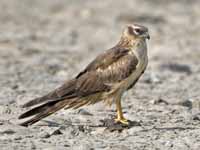
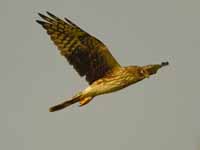
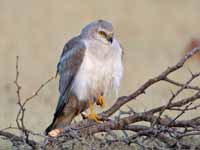
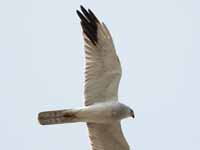
Harrier,_Pied Circus melanoleucos
Description: The male pied harrier has a black head, upper-breast, and primaries. It is white elsewhere. The female has mainly brown plumage. She has white upper-tail coverts. The tail is barred tail and the thighs whitish. The male weighs up to 325 grams, female up to 450 g.
Range: Asia, Philippines.
Habitat: Open areas such as meadows.
Diet: Birds, mammals, reptiles, insects.
Conservation status: Least Concern.
Image by:: 1) Induchoodan 2) Andy Li 3) Jerry Oldenettel - Thailand Range: Asia, Philippines.
Habitat: Open areas such as meadows.
Diet: Birds, mammals, reptiles, insects.
Conservation status: Least Concern.

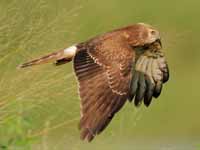
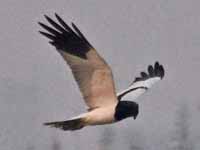
Harrier,_Reunion Circus maillardi
Description: The male Reunion harrier has a blackish head and back with white streaks. It has white underparts, under-wings, and rump. The tail is grey. The female has mainly dark brown plumage, a white rump, and a barred tail.
Range: Island of Reunion in Indian Ocean, Madagascar.
Habitat: Relatively open areas so it can fly relatively close to ground to hunt prey. Breeding pairs frequent native and evergreen forests.
Diet: Prefers birds, but changing habit is shifting it towards rodents.
Conservation status: The Reunion harrior is listed as Endangered as the poputlation is under 1000 and threatened by habitat destruction. Also it can be killed by eating poisoned rodents.
Image by: 1) Dick Daniels - Madagascar 2) Thierry Caro (Specimen )Range: Island of Reunion in Indian Ocean, Madagascar.
Habitat: Relatively open areas so it can fly relatively close to ground to hunt prey. Breeding pairs frequent native and evergreen forests.
Diet: Prefers birds, but changing habit is shifting it towards rodents.
Conservation status: The Reunion harrior is listed as Endangered as the poputlation is under 1000 and threatened by habitat destruction. Also it can be killed by eating poisoned rodents.
1, 2) Female

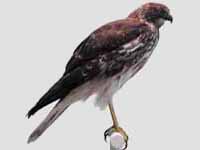
Harrier,_Spotted Circus assimilis
Description: The Spotted Harrier has blue-grey upperparts, chestnut underparts with white spots, a barred tail, and black primaryfeathers.
Range: Australia.
Habitat: Areas with plenty of room for flying low such as grasslands, savannas, croplands.
Diet: Birds, rodents, lizards.
Conservation status: Least Concern.
Image by: 1) Brian McCauley 2) I_Am_birdsaspoetry.com 3) Ron Knight - South Australia QueenslandRange: Australia.
Habitat: Areas with plenty of room for flying low such as grasslands, savannas, croplands.
Diet: Birds, rodents, lizards.
Conservation status: Least Concern.

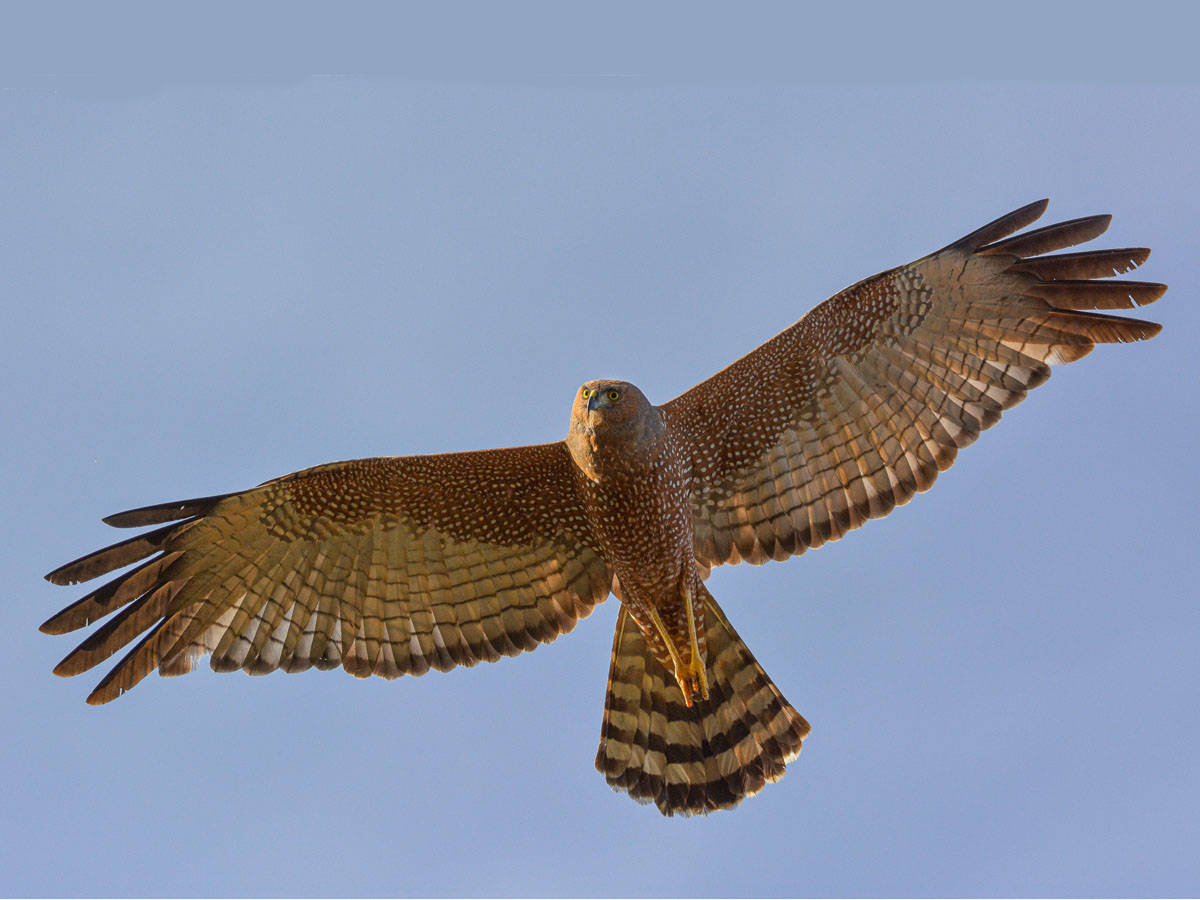
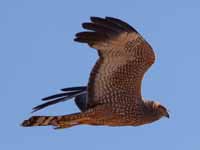
Harrier,_Swamp Circus approximans
Description: The swamp harrier has dark brown upperparts (becoming lighter with age), off-white to buff underparts with brown streaks, and a white rump.
Range: Australasia.
Habitat: Wetlands, grasslands, croplands.
Diet: Birds, rodents, rabbits, carrion.
Conservation status: Least Concern.
Image by: 1) Richard Mowll - New Zealand 2) Dave Young 3, 4) Wayne Butterworth Range: Australasia.
Habitat: Wetlands, grasslands, croplands.
Diet: Birds, rodents, rabbits, carrion.
Conservation status: Least Concern.
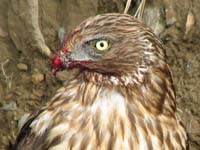
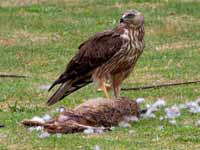
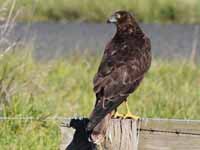
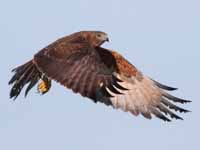
Harrier,_Western Marsh- Circus aeruginosus
Description: The male western marsh-harrier, also known as the Eurasian marsh-harrier, has mainly reddish-brown plumage with yellowish streaks on the neck and breast. It has light grey-brown under-wings. The female has mainly chocolated-brown plumage. The head, throat, and shoulder are lighter and yellowish. It is similar to the African march-harrier which has darker underparts and head.
Range: Europe, Asia, Africa.
Habitat: Wetland areas, especially those with reeds. Also grasslands and croplands.
Diet: Mainly birds and mammals. Also reptiles, fish.
Conservation status: Least Concern.
1 - 3) Female 4) Male
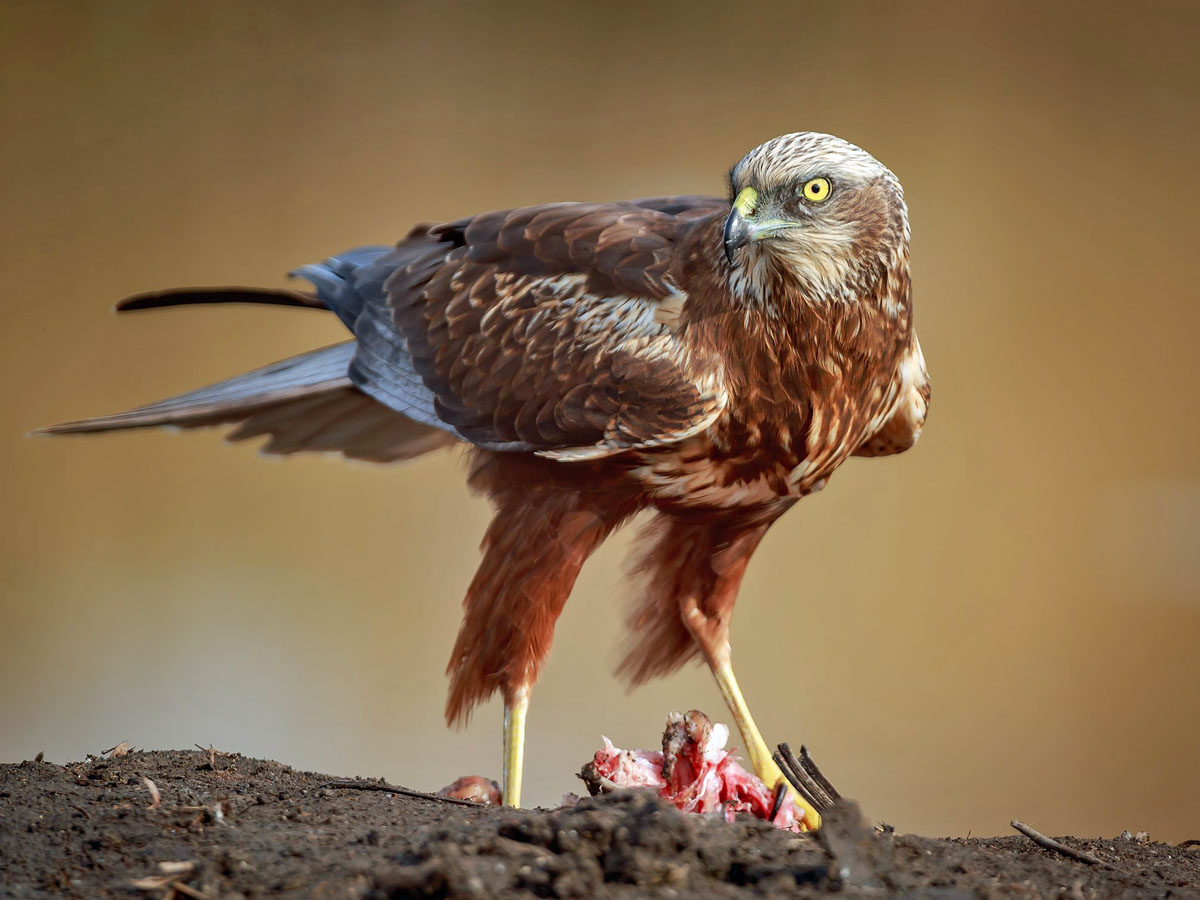
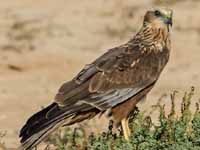
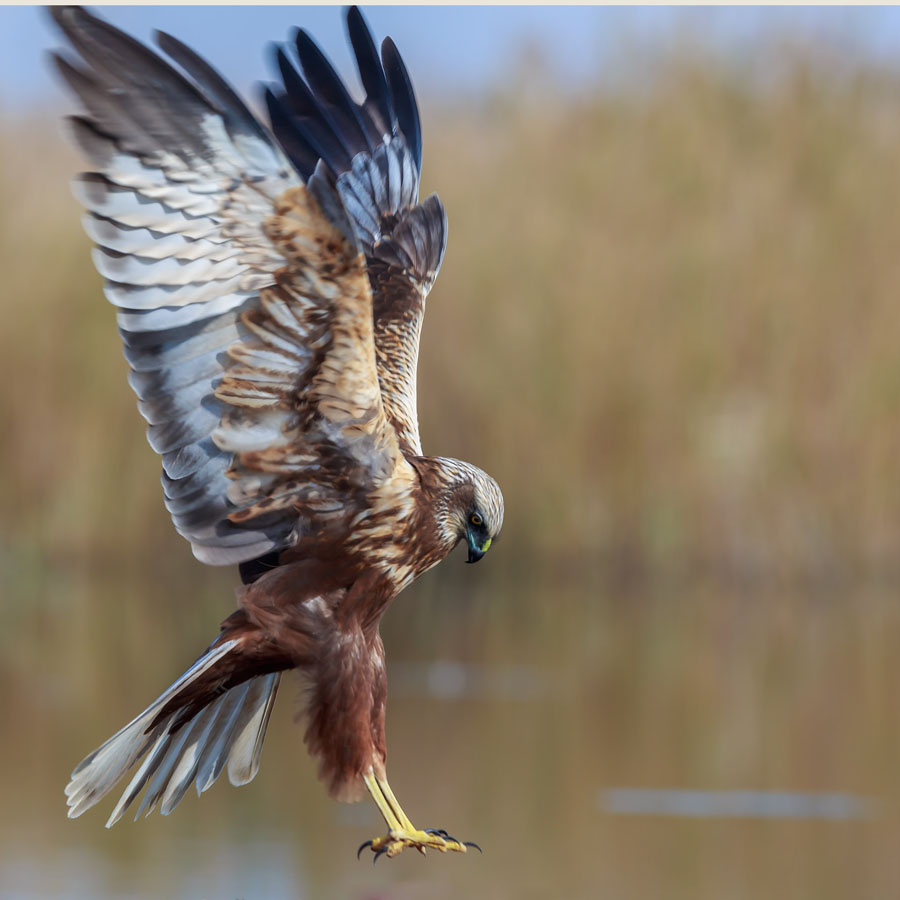

Genus Erythrotriorchis
Goshawk,_Chestnut-shouldered Erythrotriorchis buergersi
Description: Mainly blackish and rufous upperparts. It has white underparts with dark streaks.
Range: New Guinea.
Habitat: Forests.
Diet: Probably birds.
Conservation status: Listed as Data Deficient because little is known about this species. Extremely rarely seen.
Image by: 1) Katerina_Tvardikova 2) Szabolcs KókayRange: New Guinea.
Habitat: Forests.
Diet: Probably birds.
Conservation status: Listed as Data Deficient because little is known about this species. Extremely rarely seen.
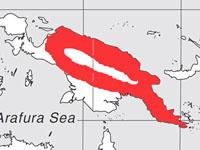
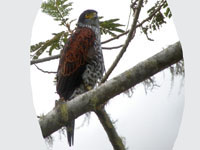
Goshawk, Red Erythrotriorchis radiatus
Description: The red goshawk has black and rufous upperparts with a scalloped appearance. It head is rufous with black and white streaks and a pale face. The upperparts are rufous with black marks. The female has paler underparts than the male.
Range: Australia.
Habitat: Mainly forest near the coast that have room for flying through the understory.
Diet: Mainly birds.
Conservation status: The red goshawk is listed as Near Threatened because the population is small and probably declining.
Image by: 1) Aviceda 2) SummerdroughtRange: Australia.
Habitat: Mainly forest near the coast that have room for flying through the understory.
Diet: Mainly birds.
Conservation status: The red goshawk is listed as Near Threatened because the population is small and probably declining.
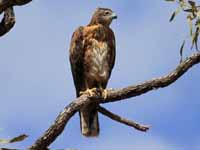
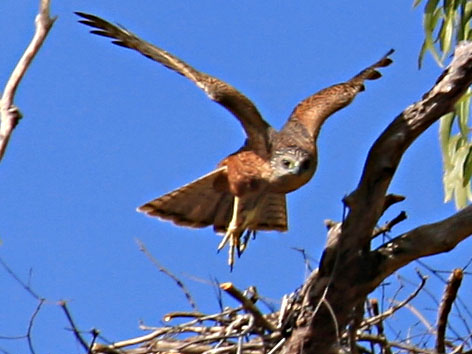
Genus Megatriorchis - 1 Species
Goshawk,_Doria's Megatriorchis doriae
Description: The Doria's goshawk has greyish-brown upperparts with a black barred crown, whitish underparts, a black streak behind the eye, blackish bill, and greenish-yellow legs.
Range: New Guinea.
Habitat: Lowland rainforests.
Diet: Mainly birds.
Conservation status: Doria's goshawk is listed as Near Threatened is rarely seen. It population is unknown as well as the trend of that population.
Image by: markaharper1Range: New Guinea.
Habitat: Lowland rainforests.
Diet: Mainly birds.
Conservation status: Doria's goshawk is listed as Near Threatened is rarely seen. It population is unknown as well as the trend of that population.
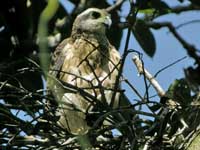
Buteoninae – buteonine hawks
This subfamily contains the following genera, where the number in parenthesis indicates the number of species in the genus:
Busarellus (1), Butastu (4), Buteo (23), Buteogallus (8), Cryptoleucopteryx (1), Geranoaetus (3), Helicolestes (1), Ictinia (2). Leucopternis (3), Morphnarchus (1). Parabuteo (2), Pseudastur (3), Rostrhamus (1), Rupornis (1).
Genus Buteo, with its 23 species, contains the hawks that this Buteoninae subfamily was named for. The three species in Geranoaetus are sometimes considered to be part of the Buteo genus. Buteos are small to large raptors. They are known as buzzards in the Old World and hawks in the New World. The favorite prey for most of these species are small mammals such are rodents. As a group they also eat birds, reptiles, insects, and carrion. They often soar on high and sprial down to seize their prey. Another common huntng technique is perching on trees, power poles, power lines, or mounds until a prey is sighted.
The next largest genus Buteogallus has 8 species. Most of these species like crabs and other large crustaceans and thus are sometimes called crab-hawks. The live in the tropics and subtropics of the Americas.
Genus Busarellus - 1 species
Hawk,_Black-collared Busarellus nigricollis
Description: The black-collared hawk has mainly cinnamon-rufous plumage. It has a paler breast, off-white head, blackish fore-neck and upper breast, and a black bill. The legs are white with a bluish-tinge. The male weighs up to 990 grams, female up to 1100 g.
Range: Mexico, Central America, South America.
Habitat: Tropical areas new water such as ponds, rice fields, mangroves, stagnant pools.
Diet: Mostly fish. Also aquatic insects, frogs, snails.
Conservation status: Least Concern.
Image by: 1, 3) Jerry Oldenettel 2) Nick Athanas - Brazil 4) Cristiano Crolle - Esteros del Iberà, ArgentinaRange: Mexico, Central America, South America.
Habitat: Tropical areas new water such as ponds, rice fields, mangroves, stagnant pools.
Diet: Mostly fish. Also aquatic insects, frogs, snails.
Conservation status: Least Concern.
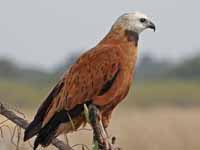
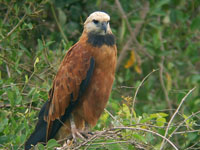
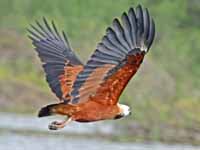
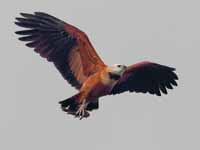
Genus Butastur
Buzzard,_Grasshopper Butastur rufipennis
Description: The grasshopper buzzard has grey-brown upperparts, a grey tail with dark bars and a black subterminal band with a white tip. The throat is white and the breast buffy with brown streaks. It has a yellow cere and bill with black tip. The eyes and legs are yellow. The male weighs up to 350 grams, female up to 400 g.
Range: Africa.
Habitat: Forest edges, savanna, marsh edges.
Diet: Mainly insects, Also birds, rodents, reptiles. Hunts from a perch.
Conservation status: Least Concern.
Image by: 1) Joseph Wolf 2) Ron_Knight - CameroonRange: Africa.
Habitat: Forest edges, savanna, marsh edges.
Diet: Mainly insects, Also birds, rodents, reptiles. Hunts from a perch.
Conservation status: Least Concern.
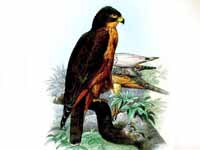
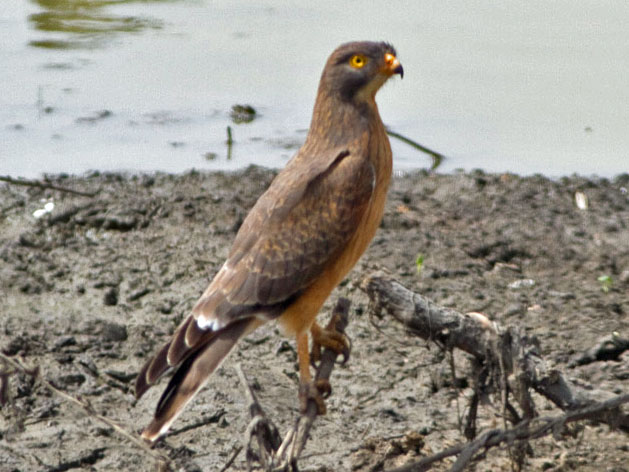
Buzzard,_Grey-faced Butastur indicus
Description: The grey-faced buzzard has grey head, neck, and breast. It has a black mustache. The back and upper-wings are brown. The under-wings and belly are white with brown bars. The male weighs up to 450 grams.
Range: Asia.
Habitat: Forest edges, savanna, marsh edges.
Diet: Frogs, reptiles, rodents, insects. Also birds.
Conservation status: Least Concern.
Image by: M Nishimura 2) Alpsdake - JapanRange: Asia.
Habitat: Forest edges, savanna, marsh edges.
Diet: Frogs, reptiles, rodents, insects. Also birds.
Conservation status: Least Concern.
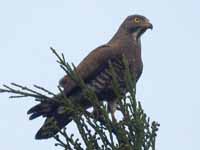
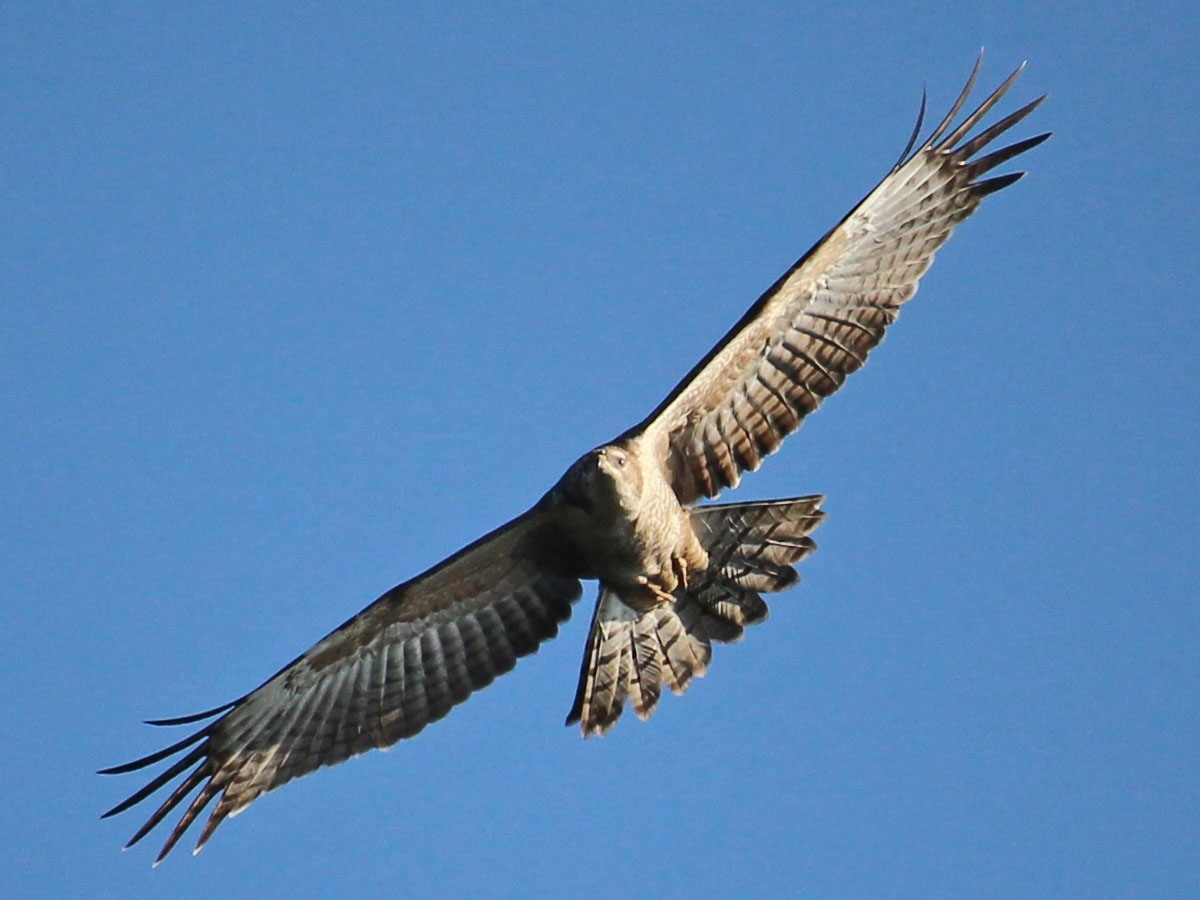
Buzzard,_Rufous-winged Butastur liventer
Description: The rufous-winged buzzard has long rufous wings and the upper-tail is also rufous. The upperparts are rufous-grey and the head is grey. The underparts are rufous-brown with fine streaks. It weighs less than 350 grams.
Range: China, southeast Asia, Indonesia.
Habitat: Somewhat open countryside. Avoids forests.
Diet: Mammals, reptiles, insects. Mainly hunts from a perch. Occasionally hunts during short flights from the perch.
Conservation status: Least Concern.
Image by: 1) Jerry Oldenettel - ThailandRange: China, southeast Asia, Indonesia.
Habitat: Somewhat open countryside. Avoids forests.
Diet: Mammals, reptiles, insects. Mainly hunts from a perch. Occasionally hunts during short flights from the perch.
Conservation status: Least Concern.
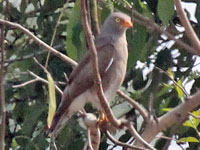
Buzzard,_White-eyed Butastur teesa
Description: The white-eyed buzzard can be identified by its white eyes and white throat. It has dark upperparts and head. The underparts are light with dark barring. It has a black tipped bill with yellow cere. The legs are also yellow. It is up to 45 cm long.
Range: south Asia.
Habitat: Found mainly in the plains. Also cropland.
Diet: Mainly rodents. Also reptiles, crabs, insects. Hunts from a perch which can be a stump or other low object. Will also search for insects while walking.
Conservation status: Least Concern.
Image by: 1) Koshy Koshy 2) Shantanu Kuveskar - India 3) J M Garg Range: south Asia.
Habitat: Found mainly in the plains. Also cropland.
Diet: Mainly rodents. Also reptiles, crabs, insects. Hunts from a perch which can be a stump or other low object. Will also search for insects while walking.
Conservation status: Least Concern.
1) Juvenile
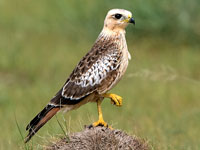
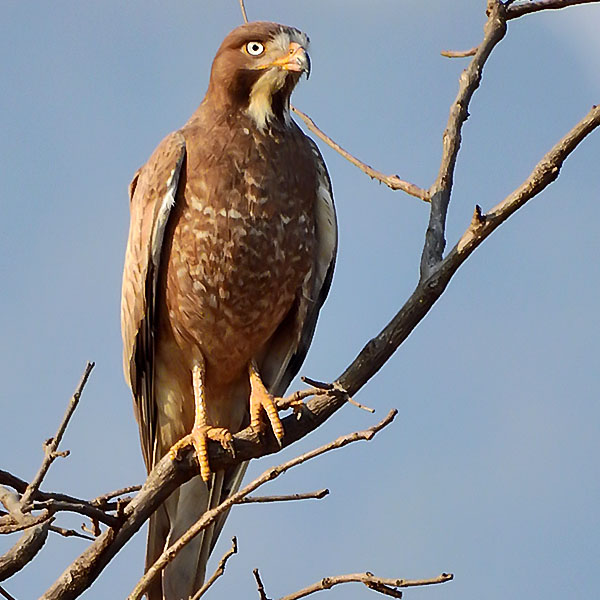
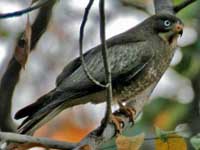
Genus Buteo
Buteos are small to large raptors. They are known as buzzards in the Old World and hawks in the New World. The favorite prey for most of these specie are small mammals such are rodents. As a group they also eat birds, reptiles, insects, and carrion. Another common huntng technique is perching on trees, power poles, powerlines, or mounds until a prey is sighted.
Buzzard,_Archer's Buteo archeri
Description: The Archer's buzzard has brown upperparts, chestnut underparts, and a white throat. It is up to 55 cm (22 in) long.
Range: Africa.
Habitat: Northern Somalia in mountains and adjacent savanna and grassland.
Diet: Mammals. Also reptiles, insects, birds on the ground.
Conservation status: Archer's buzzard is probably vulnerable because of its limited range.
Image by: 1) Henrik Gronvoid Range: Africa.
Habitat: Northern Somalia in mountains and adjacent savanna and grassland.
Diet: Mammals. Also reptiles, insects, birds on the ground.
Conservation status: Archer's buzzard is probably vulnerable because of its limited range.

Buzzard,_Augur Buteo augur
Description: The augur buzzard has mainly black upperparts with white underparts. The under-wing feathers are white with black tips, except the primary feathers are mostly black. There is a melanistic form which has mainly black plumage. The male weighs up to 1200 grams and females up to 1350 g.
Range: Africa.
Habitat: Open or lightly wooded areas.
Diet: Reptiles, mammals. Also birds, insects, carrion.
Conservation status: Least Concern.
Image by: 1, 2) Dick Daniels - Carolina Raptor Center 3, 5) Dick - Tanzania 4) Charles_Sharp - EthiopiaRange: Africa.
Habitat: Open or lightly wooded areas.
Diet: Reptiles, mammals. Also birds, insects, carrion.
Conservation status: Least Concern.
1, 2, 3) Melanistic form.
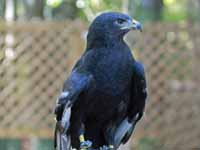
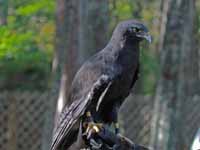
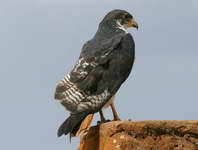
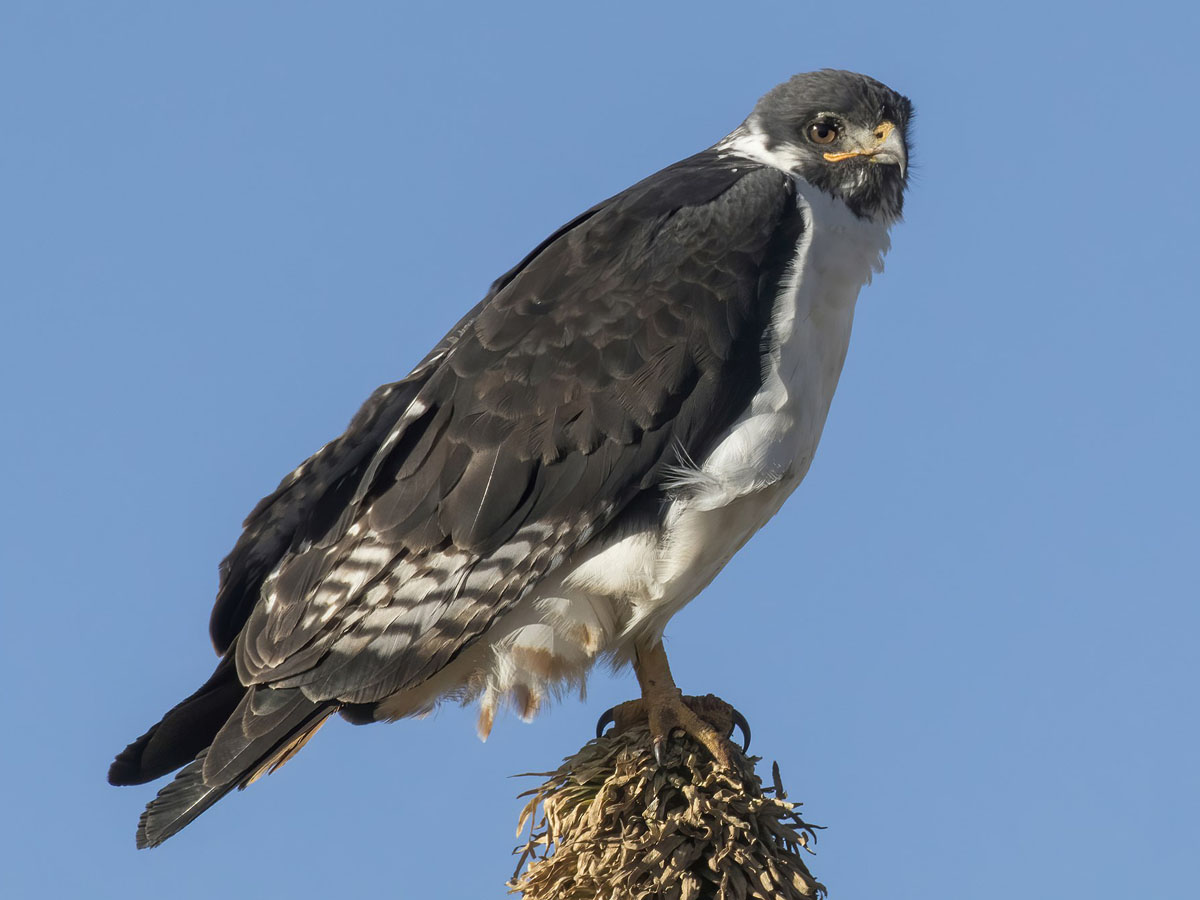

Buzzard,_Common Buteo Buteo
Description: The common buzzard varies from almost pure white to black. It usually has dark brown upperparts. The underparts are also brown, but with a mixture of white. The under-wing has black tipped feathers bordered by white with dark barring. The under-wing coverts are usually brown. The weights of the common buzzard vary greatly. The male weights up to 1200 grams and females up to 1350 grams. But some males and females weight only one third these amounts. The European honey-buzzard has fewer bars on its tail than the common buzzard, the mountain buzzard has denser spots on the underparts, and the rough-legged hawk has legs that are feathered to its feet.
Range: Europe, Asia, Africa.
Habitat: Nest and roosts in trees.
Diet: Mainly small mammals. Hunts while perching in a tree, gliding or soaring. Usually catches prey on the ground.
Conservation status: Least Concern.
Image by: 1, 2) Dick Daniels - Center
for Birds of Prey, Charleston, South Carolina 3) Craig Adam - South Africa 4 Andy_LiRange: Europe, Asia, Africa.
Habitat: Nest and roosts in trees.
Diet: Mainly small mammals. Hunts while perching in a tree, gliding or soaring. Usually catches prey on the ground.
Conservation status: Least Concern.

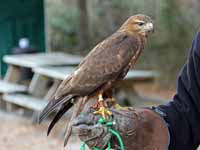
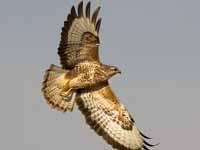
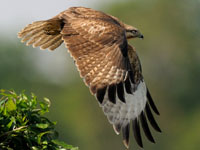
Buzzard,_Jackal Buteo rufofuscus
Description: The jackal buzzard has black upperparts. The tail and upper-breast are rufous. The rest of underparts are black, white, and rufous. The male weighs up to 1100 grams and the female up to 1700 g. They can be up to 60 cm long (2 feet).
Range: Africa.
Habitat: Near grasslands.
Diet: Mainly rodents. Also birds, reptiles, carrion.
Conservation status: Least Concern.
Image by: 1, 2, 4) Dick Daniels - Radical Raptors aviary in South Africa 3) Sandy Cole near Tenikwa Cats, South Africa Range: Africa.
Habitat: Near grasslands.
Diet: Mainly rodents. Also birds, reptiles, carrion.
Conservation status: Least Concern.
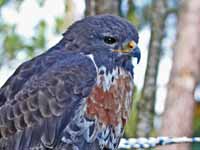
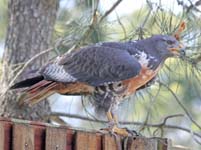

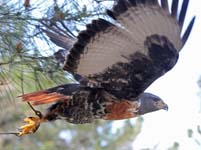
Buzzard,_Long-legged Buteo rufinus
Description: The long-legged buzzard has many different color forms from pale to very dark. It usually has orange tinted plumage, a dark carpal patch, and a black trailing edge on under-wing. It is one of the largest species of Buteo. The male weighs up to 1300 grams and the female up to 1800 g. They can be up to 66 cm long (26 int). The long-legged buzzard is larger and more robust than the similar rough-legged buzzard which can be distinguished by its feathered legs.
Range: Asia, Africa. Also eastern Europe.
Habitat: Mainly open areas such as steppe, shrubland. Also forests with open areas.
Diet: Mainly rodents. Also birds, reptiles, insects, carrion. Often hunts from a perch on a tree, powerline, or a mound on the ground. May also hover or fliy about 30 m (100 ft) off the ground.
Conservation status: Least Concern.
Image by: 1) Sajahanmi 2) Durzan Cirano 3) Imran_Shah - Pakistan 4) Comfortably Numb 5) Sergey Yeliseev - KazakhstanRange: Asia, Africa. Also eastern Europe.
Habitat: Mainly open areas such as steppe, shrubland. Also forests with open areas.
Diet: Mainly rodents. Also birds, reptiles, insects, carrion. Often hunts from a perch on a tree, powerline, or a mound on the ground. May also hover or fliy about 30 m (100 ft) off the ground.
Conservation status: Least Concern.
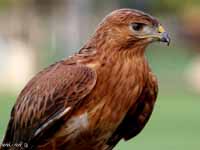

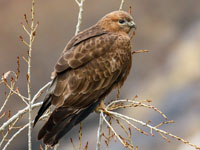
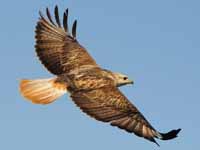

Buzzard,_Madagascar Buteo brachypterus
Description: The Madagascar buzzard has variable plumage. It has a grey head, substantial white on the underparts, bluish cere, and yellowish-white legs. It can weigh up to 700 grams.
Range: Madagascar.
Habitat: Much of the island, avoiding the non-forested central plateau.
Diet: Reptiles, rodents, birds. Also crabs.
Conservation status: Least Concern.
Image by: 1) Dick Daniels - Antananarivo Zoo, Madagascar 2) Dick - Kirindy Forest, Madagascar 3) Fir Z 4) Daniel Guip Range: Madagascar.
Habitat: Much of the island, avoiding the non-forested central plateau.
Diet: Reptiles, rodents, birds. Also crabs.
Conservation status: Least Concern.



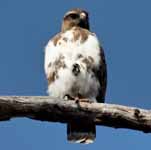
Buzzard,_Mountain Buteo oreophilus
Description: The mountain buzzard has brown upperparts, paler underparts with heavy brown blotches. The mountain buzzard has denser spots on underparts than the similar common buzzard.
Range: Africa.
Habitat: Forests including eucalyptus plantations. It favor mountainous regions.
Diet: Mammals, reptiles, birds, insects.
Conservation status: The mountain buzzard is listed as Near Threatened because of logging and other distruction of its habitat.
Image by: 1) Alastair Rae 2) Dave Curtis Range: Africa.
Habitat: Forests including eucalyptus plantations. It favor mountainous regions.
Diet: Mammals, reptiles, birds, insects.
Conservation status: The mountain buzzard is listed as Near Threatened because of logging and other distruction of its habitat.
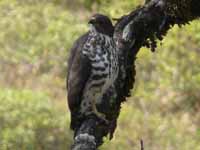
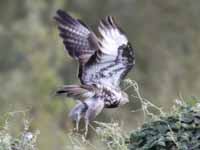
Buzzard,_Upland Buteo hemilasius
Description: The upland buzzard has a pale and dark morph. The pale morph has grey-brown upperparts. The head, nape, and underparts are whitish. It has brownish-black thighs and flank patches, a black carpal patch on the under-wing, brown under-wing coverts, and black wing-tips. The dark morph has brownish-black underparts and under-wing coverts plus a whitish under-tail. The male weighs up to 1400 grams and the female up to 2050 g.
Range: Asia.
Habitat: Grassy areas such as steppes and open mountain slopes.
Diet: Rodents and young hares. Also birds.
Conservation status: Least Concern.
Image by: 1, 2, 3, 4) Sergey Pisarevskiy - South Siberia, RussiaRange: Asia.
Habitat: Grassy areas such as steppes and open mountain slopes.
Diet: Rodents and young hares. Also birds.
Conservation status: Least Concern.
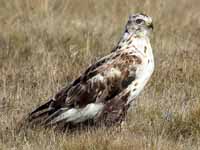

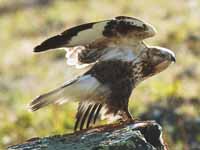
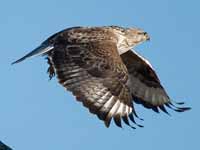
Hawk,_Broad-winged Buteo platypterus
Description: The broad-winged hawk has relatively short but broad wings. It has dark brown upperparts and white underparts with barring. A dark morph has fewer white areas. It is up to 44 cm long and weighs up to 560 g. The juvenile has stripes instead of bars.
Similar Species:
* Red-shouldered hawk. Light morph broad-winged hawk is similar to the red-shouldered hawk.The red-shouldered hawk has a more distinctly barred tail. The closed wings of red-shouldered hawk are mottled while those of broad-winged hawk are solid in color.
* Short-tailed hawk (dark morph). Dark morph broad-winged hawk is similar to the dark morph short-tailed hawk. Tail of short-tailed hawk is about the same length as its wing-tips while the tail of a broad-winged hawk is longer than its wing-tips. Adult broad-winged hawk has barred tail; adult short-tailed hawk does not.
* Swainson's Hawk. Dark phases of broad-winged hawk and Swainson's hawk are similar. Broad-winged hawk has banded tail; Swainson's hawk does not.
Range: The Americas.
Habitat: Forests that have openings.
Diet: Mammals, reptiles, birds, insects.
Conservation status: Least Concern.
Image by: 1) Joseph Marsden - Florida 2) Julie
Waters - Vermont 3) Leppyone - Florida 4) Dick - Boquette, PanamaSimilar Species:
* Red-shouldered hawk. Light morph broad-winged hawk is similar to the red-shouldered hawk.The red-shouldered hawk has a more distinctly barred tail. The closed wings of red-shouldered hawk are mottled while those of broad-winged hawk are solid in color.
* Short-tailed hawk (dark morph). Dark morph broad-winged hawk is similar to the dark morph short-tailed hawk. Tail of short-tailed hawk is about the same length as its wing-tips while the tail of a broad-winged hawk is longer than its wing-tips. Adult broad-winged hawk has barred tail; adult short-tailed hawk does not.
* Swainson's Hawk. Dark phases of broad-winged hawk and Swainson's hawk are similar. Broad-winged hawk has banded tail; Swainson's hawk does not.
Range: The Americas.
Habitat: Forests that have openings.
Diet: Mammals, reptiles, birds, insects.
Conservation status: Least Concern.
1) Juvenile
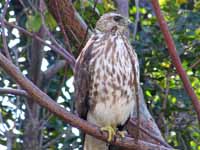
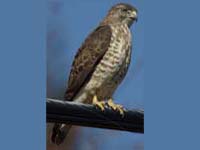
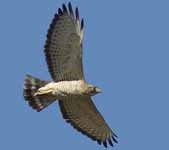

Hawk,_Ferruginous Buteo regalis
Description: The ferruginous hawk is named after its rust colored (reddish-brown) upperparts. The flight feathers are white with black tips on the primaries. It has a broad yellow cere and a yellow gape. The legs are feathered to the feet. A dark morph has rusty underparts while the light moprh has whitish underparts. It is up to 69 cm long and weighs up to 2100 grams which makes the ferruginous hawk one of the largest of it genus. The base of the ferruginous hawk's bill has more yellow than the similar red-tailed hawk or rough-legged hawk.
Range: North America.
Habitat: Grassland, shrubland, and forest edges. Nests in trees.
Diet: Mainly mammals such as praire dogs, rabbits, squirrels. Also birds.
Conservation status: Least Concern.
Image by: 1) Bill Bouton - California 2) Dick Daniels - Flamingo Gardens - Florida 3) Joshua Barrnet - Arizona 4) Charlie Westerinen - Arizona 5) Maggie Smith - California 6) Pat Gaines Range: North America.
Habitat: Grassland, shrubland, and forest edges. Nests in trees.
Diet: Mainly mammals such as praire dogs, rabbits, squirrels. Also birds.
Conservation status: Least Concern.
1) Juvenile 2, 3, 4) Light morph 5, 6)Dark Morph
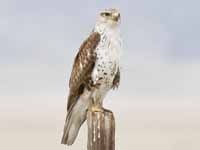
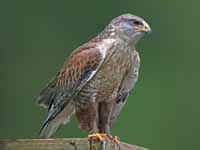
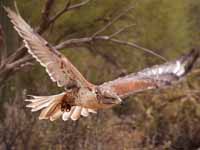
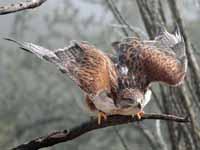

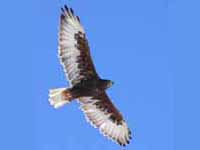
Hawk,_Galapagos Buteo galapagoensis
Description: The Galapagos hawk has various colors. Usually the upperparts are brownish-black . It has a black and white barred under-tail, brown eyes, greyish-black bill with a paler base, and yellow legs. Its nearest relative is the white-tailed hawk.
Range: Galapagos Islands.
Habitat: All of the islands's habitats.
Diet: Mainly insects; also rodents, reptiles, carrion.
Conservation status: The Galapagos hawk is considered Vulnerable because its population is less than 1000 and spread over 8 islands.
Image by: 1) Len Blumin 1) Lip Kee 2) Joe Le Nevez 3) Sara Yeomans 4) Nick Athanas - EcuadorRange: Galapagos Islands.
Habitat: All of the islands's habitats.
Diet: Mainly insects; also rodents, reptiles, carrion.
Conservation status: The Galapagos hawk is considered Vulnerable because its population is less than 1000 and spread over 8 islands.
3, 4) Dark morph

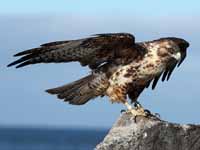
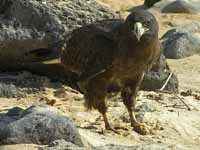
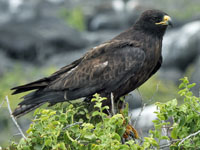
Hawk,_Grey Buteo plagiatus
Description: The grey hawk has grey upperparts and finely barred grey and white underparts. The tail is black with 3 white bands and the legs are orange. Males weigh up to 480 grams and females to 700 g. The grey hawk has negligible barring on the upperparts which differentiates it from the simialr grey-lined hawk. There is little overlap of their ranges.
Range: southwest USA to Costa Rica.
Habitat: Forest edges, open areas, cropland. Nest in mesquite and similar trees.
Diet: Lizards, mammals, insects. Also birds.
Conservation status: Least Concern.
Image by: 1) Khyri - Arizona 2) John & Anne Chullod - Arizona 3) The Lilac Breasted RollerRange: southwest USA to Costa Rica.
Habitat: Forest edges, open areas, cropland. Nest in mesquite and similar trees.
Diet: Lizards, mammals, insects. Also birds.
Conservation status: Least Concern.
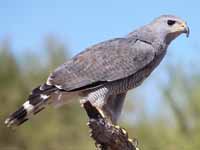
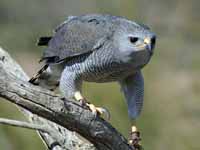
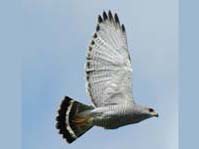
Hawk,_Grey-lined Buteo nitidus
Description: The grey-lined hawk has mainly light grey plumage. Both the upperparts and underparts are barred. It has a black tail with 3 white bands and orange legs. The male weights up to 500 grams and the female up to 600 g. The grey hawk has negligible barring on the upperparts which differentiates it from the similar grey-lined hawk. There is little overlap of their ranges.
Range: Costa Rica south to Argentina.
Habitat: Forest edges, other open areas. Nests in trees.
Diet: Mainly reptiles. Also mammals, birds, frogs. Usually hunts from a high perch, but will also hunt from a low glide.
Conservation status: Least Concern.
Image by: 1) Belgian
chocolate 2) Barloventomagico - VenezuelaRange: Costa Rica south to Argentina.
Habitat: Forest edges, other open areas. Nests in trees.
Diet: Mainly reptiles. Also mammals, birds, frogs. Usually hunts from a high perch, but will also hunt from a low glide.
Conservation status: Least Concern.
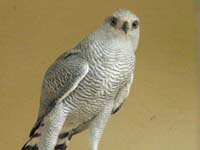
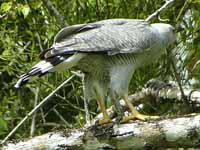
Hawk,_Hawaiian Buteo solitarius
Description: The Hawaiian hawk has 2 morphs. One has a dark brown head, breast, and under-wings. The other has light head, breast, and under-wings. The male averages 440 grams and the female 600g.
Range: Hawaii.
Habitat: Varied habitat including forests and fields. Nests mostly in native (not introduced) trees.
Diet: Introduced mammals such as rats. Birds used to be its main prey before they became scarcer.
Conservation status: The Hawaiian hawk, listed as Near Threatened, has a declining population because of shooting, habitat degradation, poisoning, and collisions with vehicles.
Image by: 1) Bryan Harry, NPS 2) Mkullen 3) Kanalu Chock 4) cliff1066 -
Honolulu Zoo Range: Hawaii.
Habitat: Varied habitat including forests and fields. Nests mostly in native (not introduced) trees.
Diet: Introduced mammals such as rats. Birds used to be its main prey before they became scarcer.
Conservation status: The Hawaiian hawk, listed as Near Threatened, has a declining population because of shooting, habitat degradation, poisoning, and collisions with vehicles.
1, 2) Light morph 3, 4) Dark morph
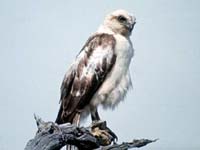

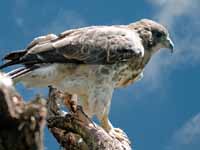
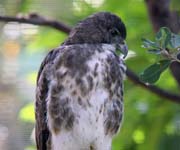
Hawk,_Red-shouldered Buteo lineatus
Description: The red-shouldered hawk has a brown head. It has reddish shoulders and breast.The belly is pale with reddish bars. The yellow tail has white bars. The male averages 550 grams and the female 700 g. The red-shouldered hawk has a more distinctly barred tail than the similar light morph of the broad-winged hawk. Also its folded wings are mottled while those of broad-winged hawk are solid in color. The red-tailed hawk, another similar species, has brown underparts versus the orangish underparts of the red-shouldered hawk.
Range: North America, mainly east of the Mississippi.
Habitat: Favor forests that have open spaces for hunting. Will visit suburbs that have adequate trees.
Diet: Rodents and other small mammals. Also reptiles, birds, fish, insects.
Conservation status: Least Concern.
Image by: 1) Dick Daniels - Florida 2) Dick Daniels - North Carolina 3) Dick - Carolina Raptor Center 4) Mike Baird 5) Charlie Westerinen - Colusa, California 6) Chuck AbbeRange: North America, mainly east of the Mississippi.
Habitat: Favor forests that have open spaces for hunting. Will visit suburbs that have adequate trees.
Diet: Rodents and other small mammals. Also reptiles, birds, fish, insects.
Conservation status: Least Concern.
1) Juvenile
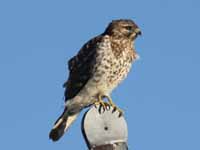
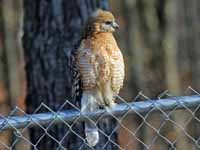
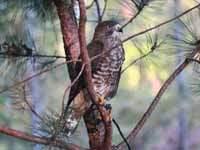
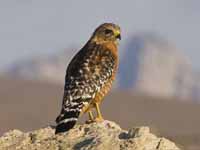
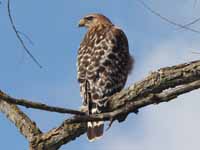
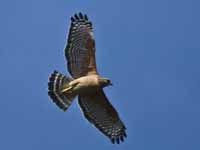
Hawk,_Red-tailed Buteo jamaicensis
Description: The red-tailed hawk has many subspecies of varying shades. It has a red upper-tail, buff-orange under-tail, and whitish underparts with a darker lower-breast. It is heavier than most buteo of similar length, resulting in a chunky appearance. Males weight up to 1300 grams, females up to 1500. It is one of the most widely distributed American raptors. The red-tailed hawk is often "mobbed" by other species to disrupt their hunting behavior and also to make it difficult to raise their yourg. Crows are especially aggressive at mobbing. Juveniles have yellow iris.
Similar to:
* Ferruginous Hawk. Base of ferruginous hawk's bill has more yellow than red-tailed hawk. Light morph ferruginous hawk has rusty brown wings and back; red-tailed hawk lacks the reddish tinge.
* Red-shouldered Hawk. Red-shouldered hawk has orangish underparts; red-tailed hawk has brown underparts.
* Rough-legged Hawk. Rough-legged hawk has white at base of tail, red-tailed hawk does not. Red-tailed hawk has broader, shorter wings.
Range: North America.
Habitat: Forests, especially mature old growth that has open space. Also, forest edges and residential areas that are sufficiently wooded.
Diet: Rodents, reptiles, amphibians, birds.
Conservation status: Least Concern.
Image by: 1) BiteYourBum.com - California 2, 3, 4)
Dick Daniels - Carolina Raptor Center 5) Becky_Matsubara - California 6) Dave Fletcher - New York 7) Tom_Murray - MassachusettsSimilar to:
* Ferruginous Hawk. Base of ferruginous hawk's bill has more yellow than red-tailed hawk. Light morph ferruginous hawk has rusty brown wings and back; red-tailed hawk lacks the reddish tinge.
* Red-shouldered Hawk. Red-shouldered hawk has orangish underparts; red-tailed hawk has brown underparts.
* Rough-legged Hawk. Rough-legged hawk has white at base of tail, red-tailed hawk does not. Red-tailed hawk has broader, shorter wings.
Range: North America.
Habitat: Forests, especially mature old growth that has open space. Also, forest edges and residential areas that are sufficiently wooded.
Diet: Rodents, reptiles, amphibians, birds.
Conservation status: Least Concern.
1) Juvenile (yellow iris)
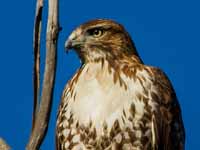
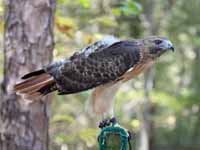
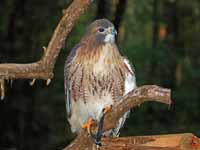
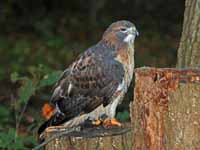
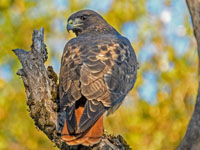
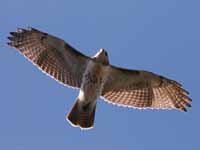
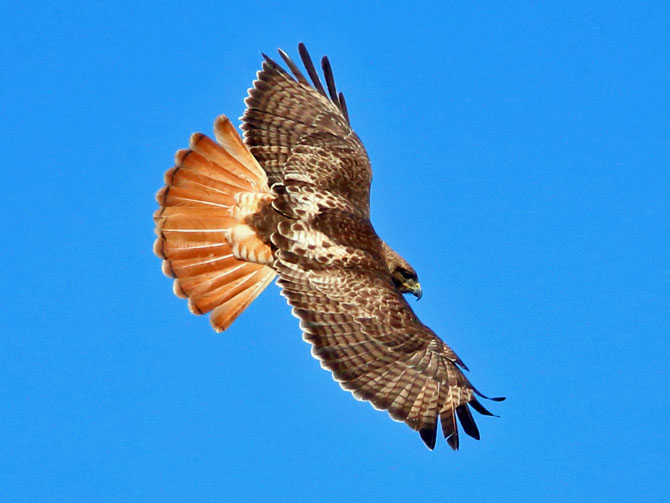
Hawk,_Ridgway's Buteo ridgwayi
Description: The Ridgway's hawk has brown-grey upperparts, brown wings, greyish barred underparts, yellow legs and yellow cere. Its dark grey tail has 3 to 4 narrow white bars. The male is greyer than the female.
Range: Dominican Republic. It is one of two Buteo hawks on Hispaniola .
Habitat: Most places on the island.
Diet: Mainly reptiles. Also birds, mammals.
Conservation status: Ridgway's hawk is listed as Critically Endangered because of its limited range, habitat loss, agressive humans, parastic nest flies.
Image by: 1, 2) Ron KnightRange: Dominican Republic. It is one of two Buteo hawks on Hispaniola .
Habitat: Most places on the island.
Diet: Mainly reptiles. Also birds, mammals.
Conservation status: Ridgway's hawk is listed as Critically Endangered because of its limited range, habitat loss, agressive humans, parastic nest flies.
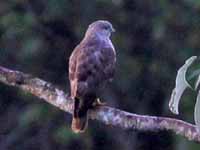
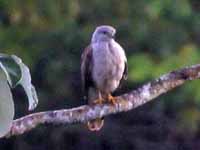
Hawk,_Rough-legged Buteo lagopus
Description: The rough-legged hawk, also known as thr rough-legged buzzard, has legs feathered to the feet. It has mainly brown plumage with white speckling. The long tail is mainly white with brown near the end. There are also darker morphs. It is a large hawk with the male weighing up to 1350 grams and the female to 1650 g.
Similar to:
* Common Buzzard. Common buzzard has broader, shorter wings.
* Ferruginous Hawk. Base of ferruginous hawk's bill has more yellow than rough-legged hawk. Light morph ferruginous hawk has rusty brown wings and back; rough-legged hawk lacks the reddish tinge.
* Long-legged Buzzard. The long-legged buzzard is larger and more robust than the rough-legged buzzard. Rough-legged buzzard legs are feathered to the feet.
*Red-tailed Hawk. Rough-legged hawk has white at base of tail, red-tailed hawk does not. Red-tailed hawk has broader, shorter wings.
Range: North America, Europe, Asia.
Habitat: Breeds in tundra and taiga habitats where there is plenty of open ground. Winters mainly in treeless regions such as prairies, fields, bogs.
Diet: Mainly mammals. Also birds.
Conservation status: Least Concern.
Image by:: 1) Bill Majoros 2, 3) Dick Daniels - Carolina Raptor Center 4) Seabamirum - New York Similar to:
* Common Buzzard. Common buzzard has broader, shorter wings.
* Ferruginous Hawk. Base of ferruginous hawk's bill has more yellow than rough-legged hawk. Light morph ferruginous hawk has rusty brown wings and back; rough-legged hawk lacks the reddish tinge.
* Long-legged Buzzard. The long-legged buzzard is larger and more robust than the rough-legged buzzard. Rough-legged buzzard legs are feathered to the feet.
*Red-tailed Hawk. Rough-legged hawk has white at base of tail, red-tailed hawk does not. Red-tailed hawk has broader, shorter wings.
Range: North America, Europe, Asia.
Habitat: Breeds in tundra and taiga habitats where there is plenty of open ground. Winters mainly in treeless regions such as prairies, fields, bogs.
Diet: Mainly mammals. Also birds.
Conservation status: Least Concern.
1 - 3) Light morph 4) Dark morph
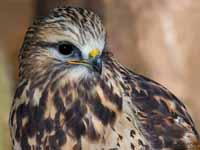

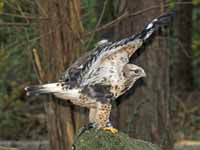
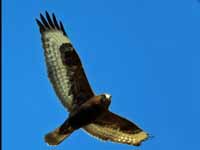
Hawk,_Rufous-tailed Buteo ventralis
Description: The rufous-tailed hawk is similar to the red-tailed hawk. It has brown upperparts, a rufous tail, and pale underparts with brown streaking on the belly. A dark morph has black upperparts and a greyish tail with narrow black bands. The male averages 950 grams and the female 1150 g.
Range: Argentina, Chile.
Habitat: Forests; also open country.
Diet: Birds, mammals, reptiles.
Conservation status: The rufous-tailed hawk is listed as Vulnerable as the population is probably less than 1000 and their habitat is being degraded by logging, conversion to non native trees, and overgrazing.
Image by: 1) Pablo_Caceres_Contreras - Chile 2) lornamoldenRange: Argentina, Chile.
Habitat: Forests; also open country.
Diet: Birds, mammals, reptiles.
Conservation status: The rufous-tailed hawk is listed as Vulnerable as the population is probably less than 1000 and their habitat is being degraded by logging, conversion to non native trees, and overgrazing.
1) Juvenile
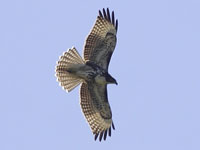

Hawk,_Short-tailed Buteo brachyurus
Description: The short-tailed hawk has a light and dark phase. The light phase has dark brown upperparts. The head is also dark brown, but it has a white throat, The underparts are white. The dark phase has black-brown upperparts and underparts. Both morphs have a relatively short tail that has a wide black terminal band plus some narrower black and white bars.
Range: North America (Southern Florida), South America.
Habitat: Woodlands, savanna, marsh.
Diet: Mainly birds; also rodents and reptiles. Usually hunts by soaring.
Conservation status: Least Concern.
Image by: 1) Amendezg - Mexico 2) Amy Evenstad 4) Josh Henderson 3) Dario_Sanches - BrazilRange: North America (Southern Florida), South America.
Habitat: Woodlands, savanna, marsh.
Diet: Mainly birds; also rodents and reptiles. Usually hunts by soaring.
Conservation status: Least Concern.
1) Juvenile male, dark morph 2) Dark morph 3) Light morph
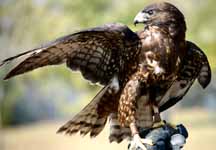
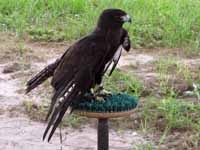
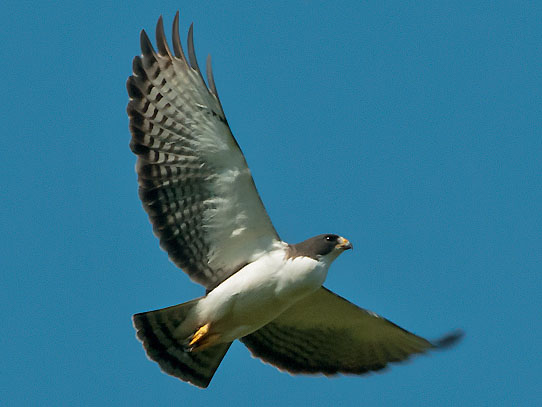
Hawk,_Swainson's Buteo swainsoni
Description: The Swainson's has 3 morphs. The light form has brown upperparts, white underparts with a reddish bib, and a white throat. It has white under-wings with a dark trailing edge, a grey-brown tail with 6 dark bands and a wider white terminal bank. The intermediate form has rufous underparts. The dark form has dark brown plumage with a light patch under the tail. The male weights up to 950 grams, the female up to 1350 g. The dark phases of broad-winged hawk and Swainson's hawk are similar. The broad-winged hawk has a banded tail while Swainson's hawk does not. The light phase Swainson's hawk and the similar white-tailed hawk can be differentiated by the latter's white tail.
Range: west North America, west South America .
Habitat: Grassy areas and open woodlands.
Diet: Grasshoppers, mammals, birds, reptiles.
Conservation status: Least Concern.
Image by: 1) Pharaoh Hound - Colorado 2) Mark Watson - New Mexico 3) Maggie Smith - California 4) Charlie Westerinen - Baker City, Oregon 5) Ann Kiszt 6) Dominic Sherony Range: west North America, west South America .
Habitat: Grassy areas and open woodlands.
Diet: Grasshoppers, mammals, birds, reptiles.
Conservation status: Least Concern.
1, 2) Light 3 - 5) Intermediate 6) Dark morph
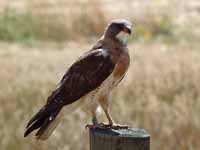
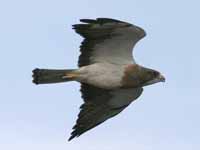
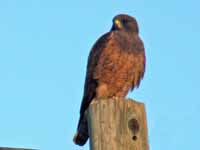
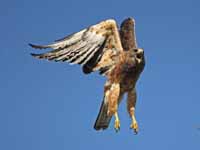

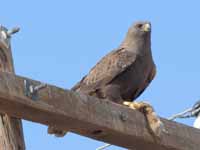
Hawk,_White-throated Buteo albigula
Description: The white-throated hawk has dark brown upperparts, a white throat, and mainly white underparts with some streaking and a brown patch on the flanks.
Range: Andes mountains of South America.
Habitat: Forests and open country.
Diet: Insects, rodents, birds.
Conservation status: Least Concern.
Image by: 1) Pablo Contreras 2) Andres CuervoRange: Andes mountains of South America.
Habitat: Forests and open country.
Diet: Insects, rodents, birds.
Conservation status: Least Concern.
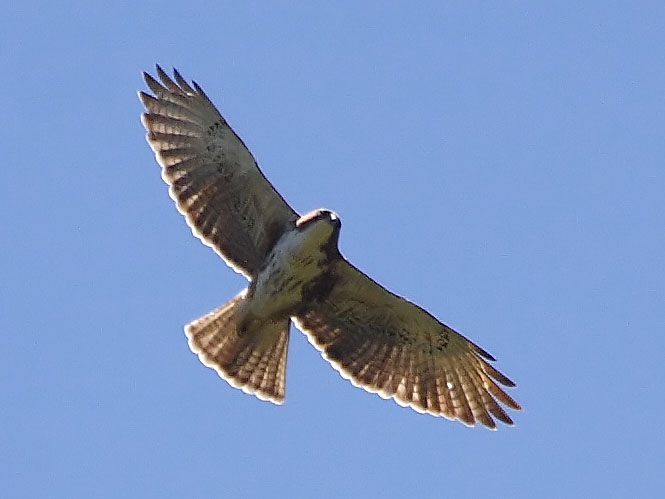
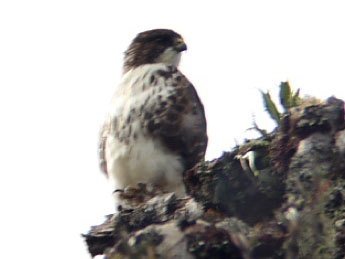
Hawk,_Zone-tailed Buteo albonotatus
Description: The zone-tailed hawk has mainly black plumage. The upper-wings are black while the under-wing primary and secondary feathers are mainly light grey with black tips. The under-wing coverts are black. The tail is boldly black and white barred. The similar common black hawk has fewer white bars on its tail.
Range: southwest North America, South America.
Habitat: Humid forests to dry open country.
Diet: Birds, reptiles, mammals.
Conservation status: Least Concern.
Image by: 1) Mark Watson - Colorado 2) SearchNet Media - Arizona 3) Dominic SheronyRange: southwest North America, South America.
Habitat: Humid forests to dry open country.
Diet: Birds, reptiles, mammals.
Conservation status: Least Concern.
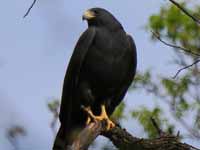
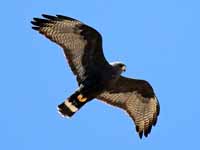
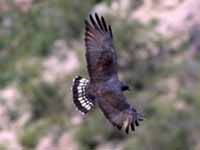
Genus Buteogallus
Most of these species like crabs and other large crustaceans and thus are sometimes called crab-hawks. The live in the tropics and subtropics of the Americas. Most of the species have a characteristic tail pattern which consists of a black base, a wide white middle band, a wide black band, and a narrow white terminal band. The smallest hawks of this genus are the slate-colored hawk and the white-necked hawk, both species are usually under 500 grams. Most of the other hawks can reach over 1000 grams and the two eagles in this genus can reach almost 3000 grams.
Eagle,_Black Solitary Buteogallus solitarius
Description: The black solitary eagle, also known as the solitary eagle, has blackish plumage. Its tail has a white band, a black band, and a narrow white tip. The black solitary eagle weighs up to 3000 grams and is thus is much larger than the similar common black hawk and has broader wings
Range: Mexico, Central America, South America.
Habitat: Hiily forests.
Diet: Mainly snakes.
Conservation status: Least Concern.
Image by: 1) Tom Friedel (BirdPhotos.com) 2) Sally Taylor - EcuadorRange: Mexico, Central America, South America.
Habitat: Hiily forests.
Diet: Mainly snakes.
Conservation status: Least Concern.

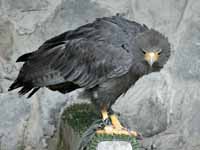
Eagle,_Chaco Buteogallus coronatus
Description: The Chaco eagle, also known as the crowned solitary eagle or the crowned eagle, has grey plumage including a grey crest. It has a short black-and-white banded tail with a white tip. It is owl-like in that it is crepuscular. It is named as an eagle because of its large size - weighing up to 3000 g.
Range: Argentina, Bolivia, Brazil, Paraguay.
Habitat: Tree grasslands, savannas, marshes, open woodlands. Nests in large trees.
Diet: Mammals. Also road kill.
Conservation status: The Chaco eagle is listed as Endangered due to a small population.
Image by: 1) Mateus Hidalgo 2, 3) Nori AlmeidaRange: Argentina, Bolivia, Brazil, Paraguay.
Habitat: Tree grasslands, savannas, marshes, open woodlands. Nests in large trees.
Diet: Mammals. Also road kill.
Conservation status: The Chaco eagle is listed as Endangered due to a small population.
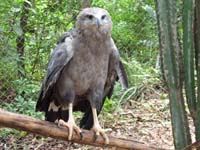

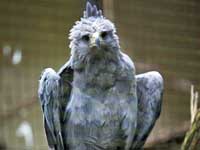
Hawk,_Common_Black- Buteogallus anthracinus
Description: The common black-hawk has mainly black or dark grey plumage. It has a short black tail with a white band and white terminal edge. The bill is black tipped; the legs and cere are yellow. The average male weights 800grams, the female 1200 g.
Similar to:
* Cuban Black-Hawk. The Cuban black-hawk has distinct white panels near the end of their under-wings; common black-hawk does not have these white panels.
* Great Black-Hawk. Great black-hawk is larger than common black-hawk and has a white tail base. Great black-hawk usually has white showing on upper-tail while perched; common black-hawk usually has no white showing on upper-tail while perched.
* Harris's Hawk. Harris's hawk has chestnut on shoulders; common black hawk does not.
* Zone-tailed Hawk. Zone-tailed hawk has more white under its wings and more white bars on tail.
* Black Solitary Eagle. The black solitary eagle is much larger and has broader wings than the common black hawk.
Range: North America, South America.
Habitat: Groves or open forests with streams close by.
Diet: Crustaceans, insects, reptiles, mammals. Also carrion if necessary.
Conservation status: Least Concern.
Image by: 1) Nick Athanas- Panama 2) Victor Burolla 3) Jerry Oldenettel - Venezuela 4) Ted Grussing Similar to:
* Cuban Black-Hawk. The Cuban black-hawk has distinct white panels near the end of their under-wings; common black-hawk does not have these white panels.
* Great Black-Hawk. Great black-hawk is larger than common black-hawk and has a white tail base. Great black-hawk usually has white showing on upper-tail while perched; common black-hawk usually has no white showing on upper-tail while perched.
* Harris's Hawk. Harris's hawk has chestnut on shoulders; common black hawk does not.
* Zone-tailed Hawk. Zone-tailed hawk has more white under its wings and more white bars on tail.
* Black Solitary Eagle. The black solitary eagle is much larger and has broader wings than the common black hawk.
Range: North America, South America.
Habitat: Groves or open forests with streams close by.
Diet: Crustaceans, insects, reptiles, mammals. Also carrion if necessary.
Conservation status: Least Concern.
1) Juvenile
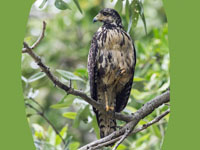

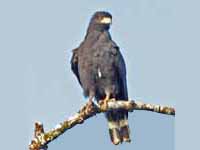
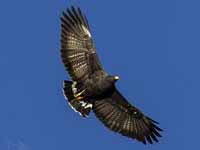
Hawk,_Cuban Black- Buteogallus gundlachii
Description: The Cuban black-hawk has mainly black or dark grey plumage. It has a short black tail with a white band and white terminal edge. The bill is black tipped; the legs and cere are yellow. The Cuban Black-hawk has distinct white panels near the end of its under-wings while the similar common black-hawk does not.
Range: Cuba.
Habitat: mainly coastal and mangrove regions. Also wooded areas.
Diet: Mainly crabs. Also fish, rodents, lizards, carrion.
Conservation status: The Cuban black-hawk is listed as Near Threatened. The population is less than 15,000 and declining due to habitat degradation, especially due to drainage of wetlands.
Image by: 1, 2) Carol Foil - Cuba 3) Laura_Gouch 4) Brian_HendersonRange: Cuba.
Habitat: mainly coastal and mangrove regions. Also wooded areas.
Diet: Mainly crabs. Also fish, rodents, lizards, carrion.
Conservation status: The Cuban black-hawk is listed as Near Threatened. The population is less than 15,000 and declining due to habitat degradation, especially due to drainage of wetlands.
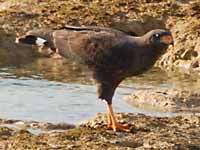
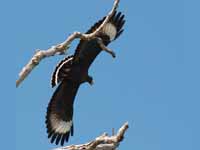
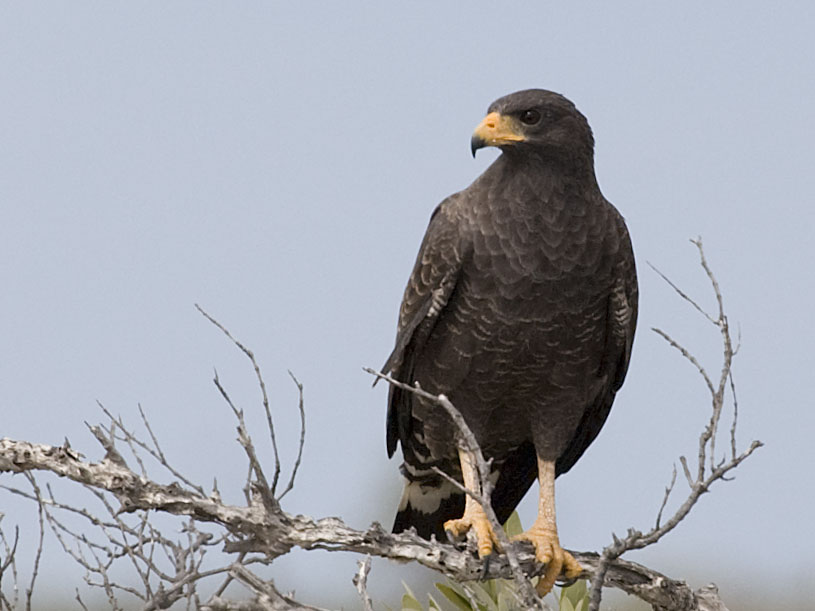
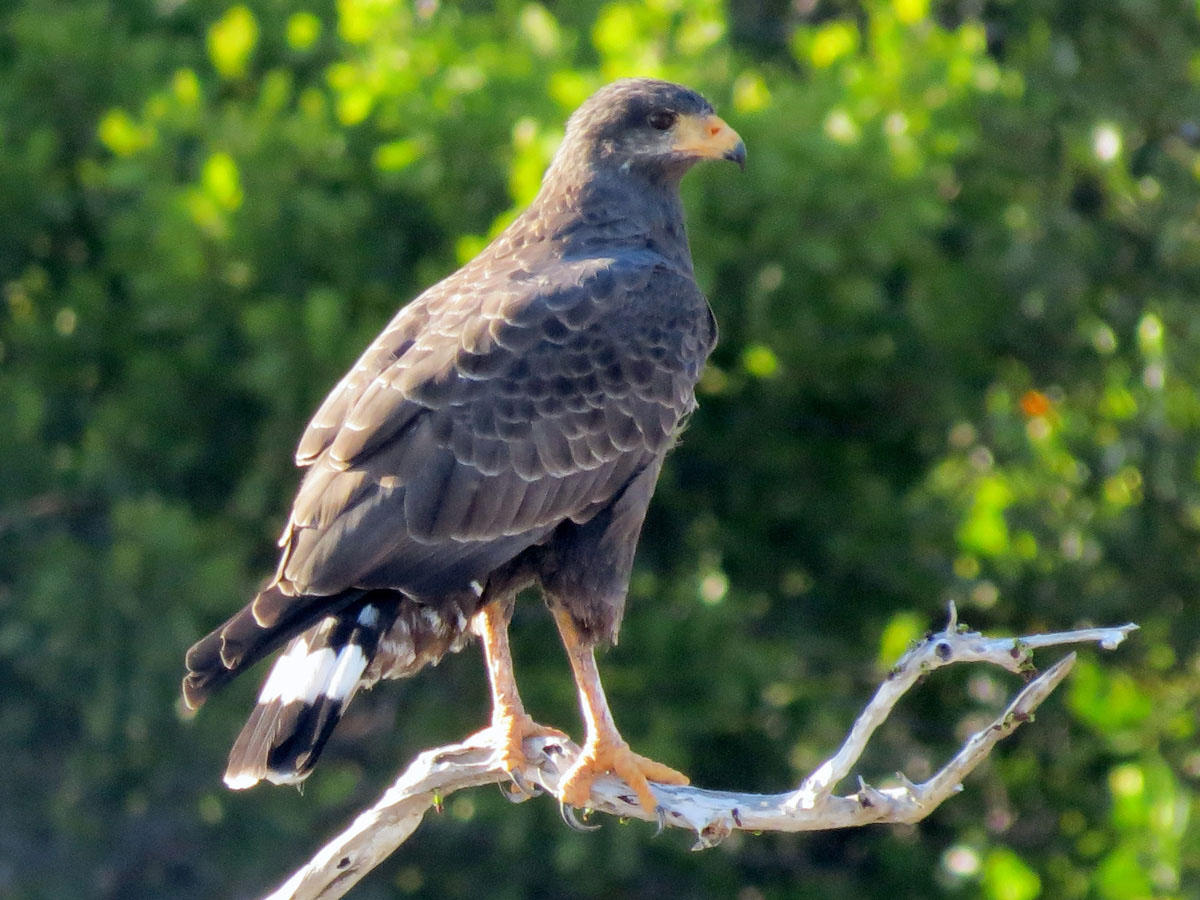
Hawk,_Great_Black- Buteogallus urubitinga
Description: The great black-hawk has mainly black or dark grey plumage. It has a short black tail with a white a base plus black and white terminal edge. The bill is black tipped; the legs and cere are yellow. It weighs 1100 grams. The great black-hawk is larger than the similar common black-hawk and usually has white showing on upper-tail while perched.
Range: Mexico to South America.
Habitat: Fields and forest. Prefers to be near water.
Diet: Mammals, birds, fish, crabs, reptiles.
Conservation status: Least Concern.
Image by: 1, 2) Nick Athanas - Brazil 3) Andrea Grosse 4) Ron Knight - MexicoRange: Mexico to South America.
Habitat: Fields and forest. Prefers to be near water.
Diet: Mammals, birds, fish, crabs, reptiles.
Conservation status: Least Concern.
1) Juvenile

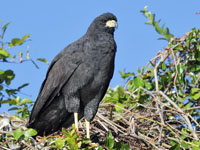
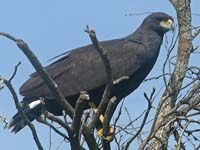
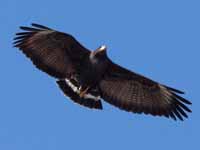
Hawk,_Savanna Buteogallus meridionalis
Description: The savanna hawk has mottled grey upperparts, rufous to brown head and neck, grey underparts with fine barring, and a black tail with white median band and white terminal band. It has black tipped flight feathers, black tipped bill, yellow cere, and yellow legs. It weights up to 1150 grams.
Range: South America. Nests are built in a palm tree.
Habitat: Usually open country such as savanna. Also forest edges, mangroves.
Diet: Mammals, birds, fish, crabs, reptiles. Usually hunts from a high perch, but will also hunt on foot.
Conservation status: Least Concern.
Image by: 1) Nick Athanas - Brazil 3) Dario Sanches 3) Berrucomons 2, 4) Claudio Timm - ArgentinaRange: South America. Nests are built in a palm tree.
Habitat: Usually open country such as savanna. Also forest edges, mangroves.
Diet: Mammals, birds, fish, crabs, reptiles. Usually hunts from a high perch, but will also hunt on foot.
Conservation status: Least Concern.

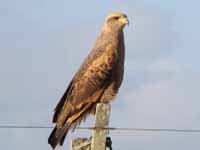

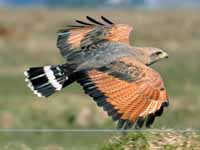
Hawk,_Slate-colored Buteogallus schistaceus
Description: The slate-colored hawk has slate-grey plumage, a grey tail with white mid-band, and large yellow eyes. It has orange legs, cere, and bare facial skin. They weigh about 500 grams.
Range: South America.
Habitat: Lowland forests; often near streams or swamps.
Diet: Mammals, birds, crabs, reptiles.
Conservation status: Least Concern.
Image by: 1) Vince Smith - Ecuador 2) Jacek_Kisielewski - BrazilRange: South America.
Habitat: Lowland forests; often near streams or swamps.
Diet: Mammals, birds, crabs, reptiles.
Conservation status: Least Concern.
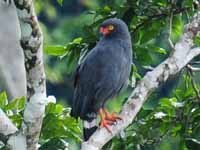
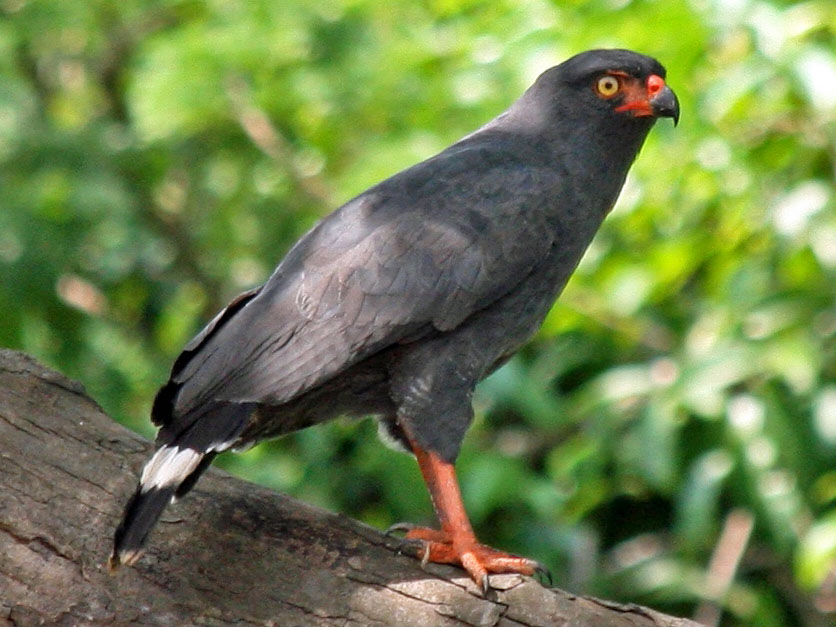
Hawk,_White-necked Buteogallus lacernulatus
Description: The white-necked hawk has a black back, and wings. The head, neck, and underparts are white. The tail has a black base and white lower part with a black terminal band. They have a length of 48 cm which makes it about the same size as the slate-colored hawk.
Range: Brazil.
Habitat: Dense Atlantic forest.
Diet: Mammals, birds, reptiles.
Conservation status: The white-necked hawk is listed as Vulnerable because of habitat loss.
Image by: 1) Rick Elis Simpson 2) Breno Platais - Brazil 3) Hector Bottai - BrazilRange: Brazil.
Habitat: Dense Atlantic forest.
Diet: Mammals, birds, reptiles.
Conservation status: The white-necked hawk is listed as Vulnerable because of habitat loss.
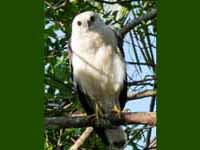
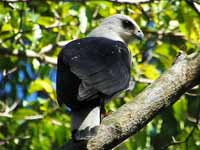
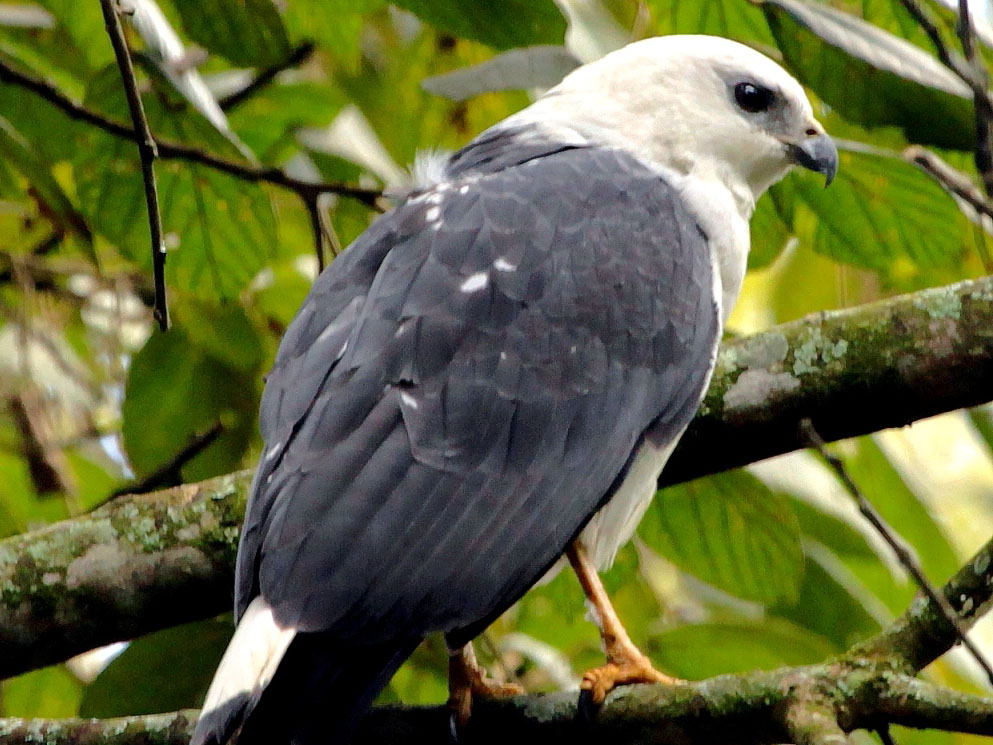
Genus Cryptoleucopteryx - 1 species
Hawk,_Plumbeous Cryptoleucopteryx plumbea
Description: The plumbeous hawk has mainly grey plumage. The tail is black with a narrow white median band. It has white under-wing coverts and thighs with fine white barring, The eyes, cere, lores, and legs are orange. It is less than 38 cm long which implies that it is a small hawk.
Range: Colombia, Ecuador, Panama, Peru.
Habitat: Moist tropical or sub-tropical forests.
Diet: Crabs, frogs, snakes, fish.
Conservation status: The plumbeous hawk is listed as Near Threatened because its habitat is being destroyed by timber harvests and agriculture expansion.
Image by: 1) John_Gerrard_Keuleman 2) Nick Athanas - EcuadorRange: Colombia, Ecuador, Panama, Peru.
Habitat: Moist tropical or sub-tropical forests.
Diet: Crabs, frogs, snakes, fish.
Conservation status: The plumbeous hawk is listed as Near Threatened because its habitat is being destroyed by timber harvests and agriculture expansion.
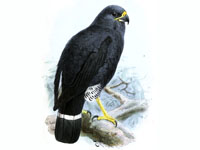
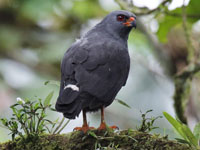
Genus Geranoaetus
These hawks are sometimes included in genus Buteo.
Buzzard-Eagle, Black-chested Geranoaetus melanoleucus
Description: The black-chested buzzard-eagle, also known as the black buzzard-eagle, has blue-grey upperparts, head, and breast. The belly is white with faint barring. It has brown eyes; and yellow bill, cere, and legs. It is very large, hence the "eagle" in its name. Males average 2150 grams, females 2750 g. It is similar to the harpy eagle which is much larger, up to 10 Kg. The black-chested buzzard-eagle has yellow bill while the harpy eagle has blackish bill.
Range: South America.
Habitat: Steep open and areas such as cliffs.
Diet: First choice mammals, second choice birds. Also fish and reptiles.
Conservation status: Least Concern.
Image by: 1) Alceu Costa - Peru 2) Caronna 3) Bengt_NymanRange: South America.
Habitat: Steep open and areas such as cliffs.
Diet: First choice mammals, second choice birds. Also fish and reptiles.
Conservation status: Least Concern.
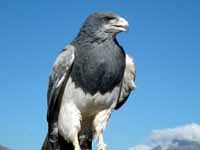
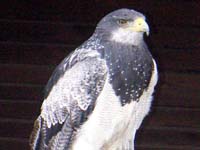
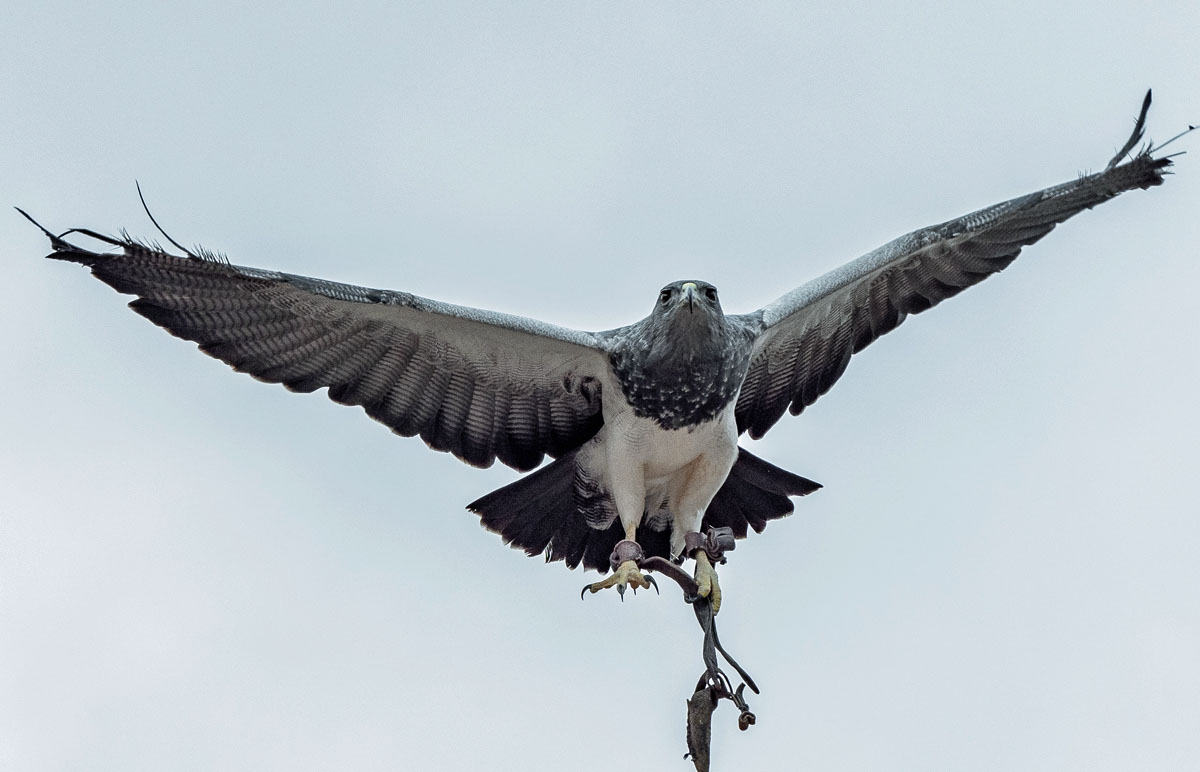
Hawk,_Variable Geranoaetus polyosoma
Description: The variable hawk is variable in appearance. All adults have a white tail with black subterminal band and grey under-wings with dark barring. The remaining plumage varies from dark grey to whitish with some having reddish-brown underparts. Females usually have a reddish-brown back. The variable hawk weight between 650 grams and 1300 g.
Range: The Andes and temperate regions of South America.
Habitat: A variable habitat: forests, grasslands sea level to 4000 meters.
Diet: Mainly mammals. Also birds, reptiles, fish.
Conservation status: Least Concern.
Image by: 1) Nick Athanas 2) Howard - East Falkland Island 3) Turelio 4) Francesco_Veronesi - Peru 5) Marcel Holyoak - EcuadorRange: The Andes and temperate regions of South America.
Habitat: A variable habitat: forests, grasslands sea level to 4000 meters.
Diet: Mainly mammals. Also birds, reptiles, fish.
Conservation status: Least Concern.
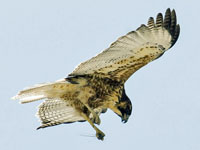
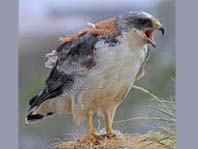
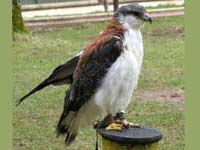

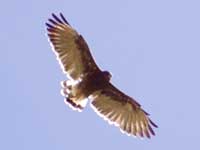
Hawk,_White-tailed Geranoaetus albicaudatus
Description: The white-tailed hawk has light to dark grey upperparts. The underparts are white as is the tail with a black band near the end.
Range: south Texas to South America.
Habitat: Grasslands, partially treed areas.
Diet: Mammals, birds, reptiles. Hunts from the air or a perch.
Conservation status: Least Concern.
Image by: 1) Cláudio Dias Timm - Brazil 2) sfitzgerald86 - Texas 5) Alan and Elaine Wilson - Texas 6) Nick Athanas - Columbia Hawk,_Dominic_SheronyRange: south Texas to South America.
Habitat: Grasslands, partially treed areas.
Diet: Mammals, birds, reptiles. Hunts from the air or a perch.
Conservation status: Least Concern.
1) Juvenile
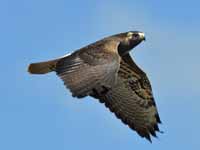
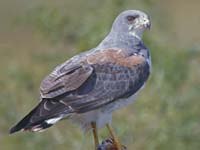
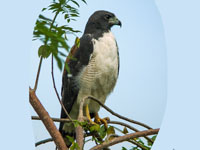
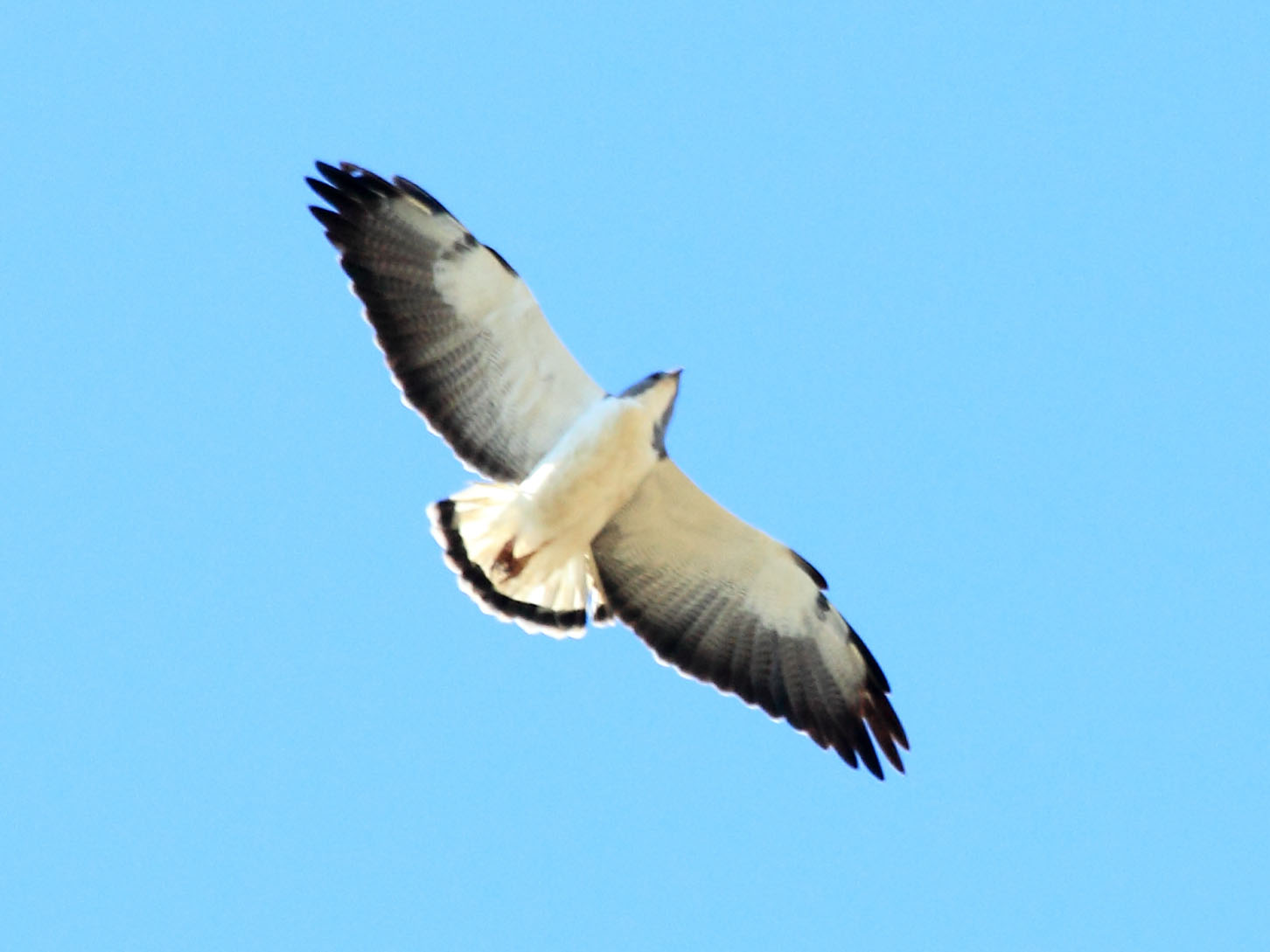
Genus Geranospiza - 1 species
Hawk,_Crane Geranospiza caerulescens
Description: The crane hawk has mainly grey plumage. The tail is black with two white bars. One morph has white barring on the underparts. The knees of crane hawks are "double jointed" which allows them to better get into crevices for snakes and other critters. The African harrier-hawk and Madagascar harrier-hawk, both of genus Polyboroides, are the only other species of the Accipitriformes order to have this feature. The male crane hawk weights up to 375 grams, the female to 525 g.
Range: Panama, South America.
Habitat: A wide variety of habitats - grasslands to forests.
Diet: Mammals, reptiles, birds, mollusks.
Conservation status: Least Concern.
Image by: 1) Nori Almeida 2) Poty2002 3) Jerry OldenettelRange: Panama, South America.
Habitat: A wide variety of habitats - grasslands to forests.
Diet: Mammals, reptiles, birds, mollusks.
Conservation status: Least Concern.
1) Dark morph

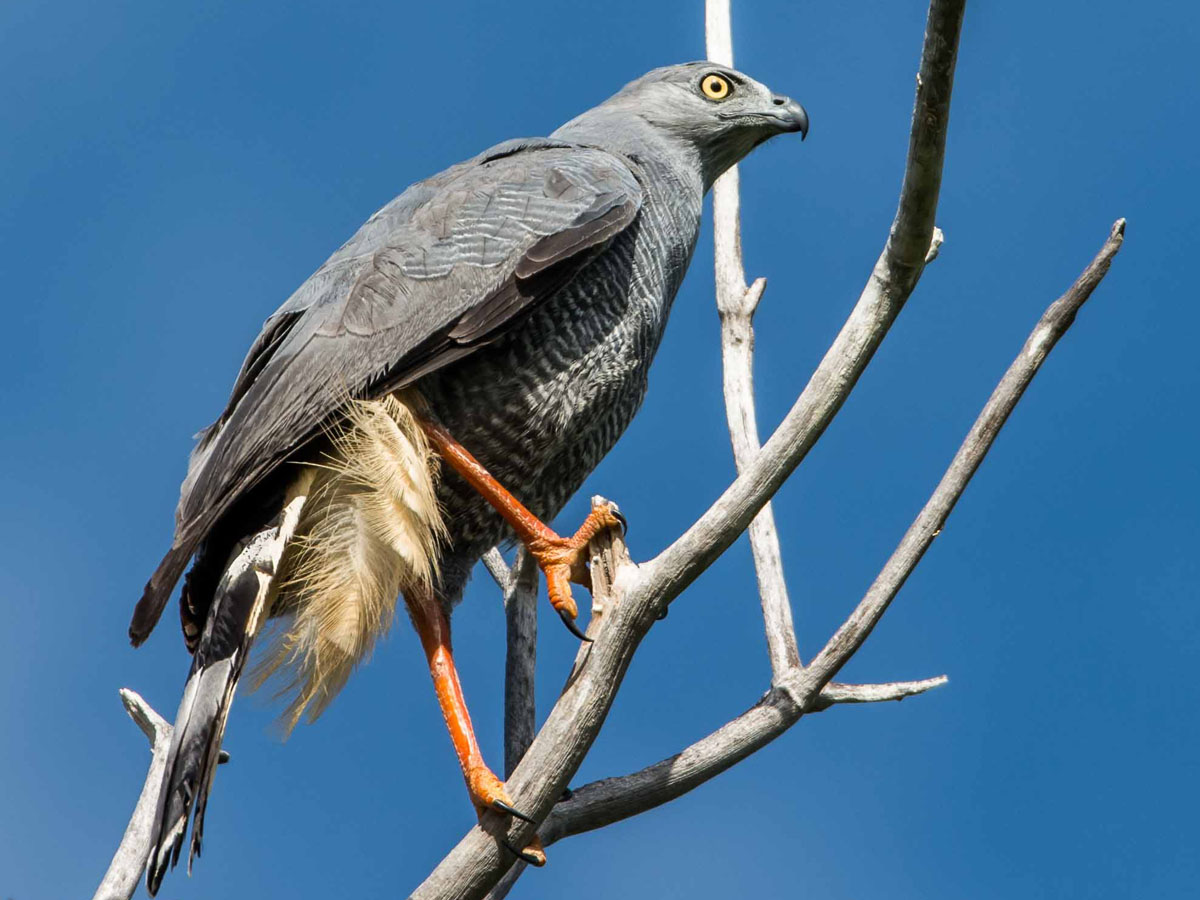
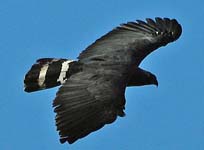
Genus Helicolestes - 1 species
Kite,_Slender-billed Helicolestes hamatus
Description: The slender-billed kite has grey plumage, rounded wings, and a short square tail. The eyes, legs, cere, and facial skin are yellow to orange. Its thin and hooked bill is used for eating snails.The male weights up to 450 grams, the female up to 500 g. The slender-billed kite has a shorter tail than the snail kite. which has red eyes instead of yellow / orange eyes
Range: Panama, South America.
Habitat: Wet areas where snails are plentiful.
Diet: Mainly snails; also crabs. They hunt from a tree perch.
Conservation status: Least Concern.
Range: Panama, South America.
Habitat: Wet areas where snails are plentiful.
Diet: Mainly snails; also crabs. They hunt from a tree perch.
Conservation status: Least Concern.
Image by: 1) Claudio Timm 2) Hector_Bottai - Brazil
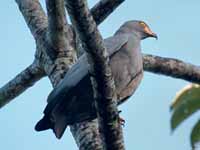
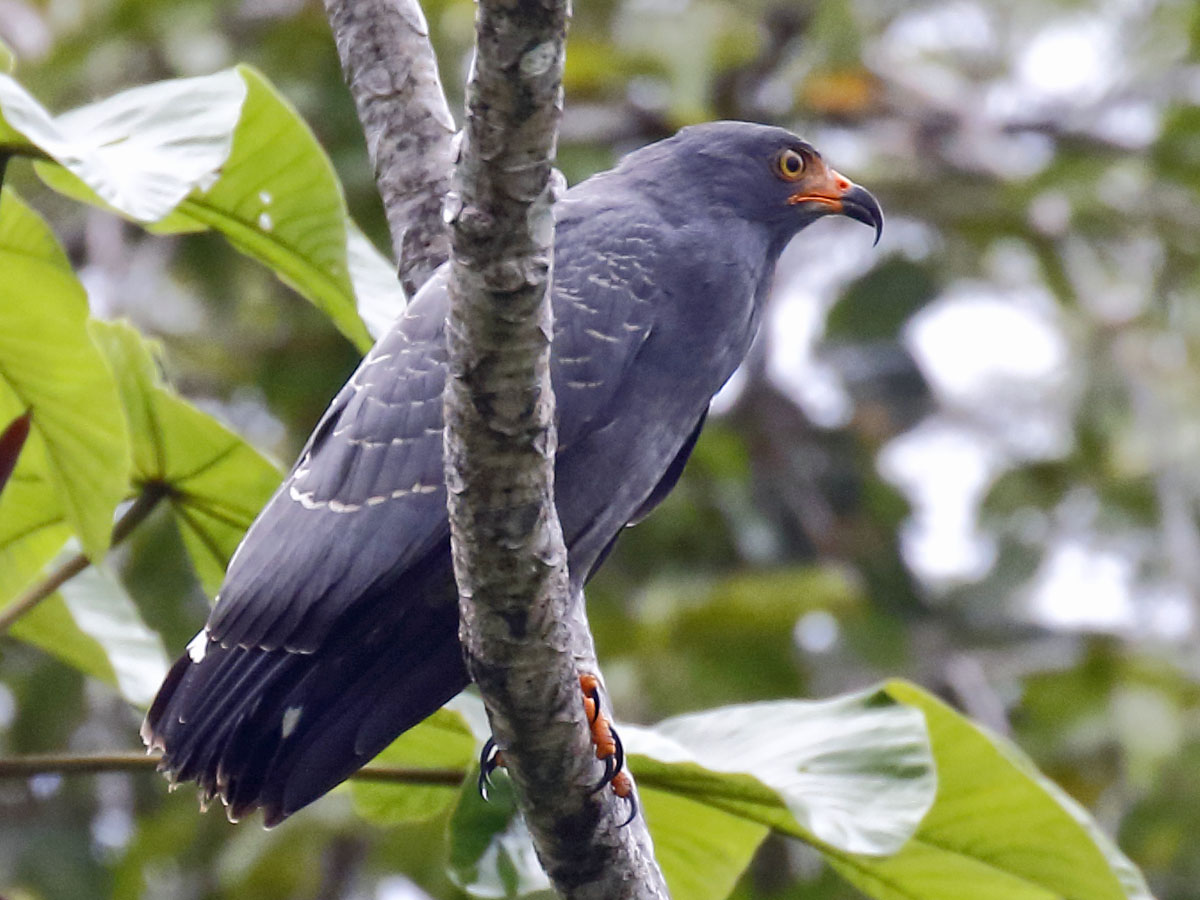
Genus Ictinia
The two species in this genus have mainly grey plumage, a square tail, and primarly eat insects which theu catch on the fly.
Kite,_Mississippi Ictinia mississippiensis
Description: The Mississippi kite has grey plumage with darker grey wings and tail. The head, breast, and belly are lighter. It has a square tail with no bars. red eyes, and red to yellow legs. It weighs from 214 to 388 grams. The similar plumbeous kite has rufous on the primaries while the Mississippi kite has little there. The similar white-tailed kite has a white head and tail.
Range: south USA to South America.
Habitat: Forest with nearby open land.
Diet: Mainly insects which they capture in flight. Also birds, reptiles, mammals.
Conservation status: Least Concern.
Image by: 1) Duane Bryce 2) Lotus Dreamer - Oklahoma 3, 4)
Dick Daniels - Carolina Raptor Center 5) Vijay_Somalinga - OklahomaRange: south USA to South America.
Habitat: Forest with nearby open land.
Diet: Mainly insects which they capture in flight. Also birds, reptiles, mammals.
Conservation status: Least Concern.
1) Juvenile
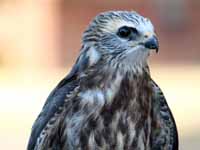
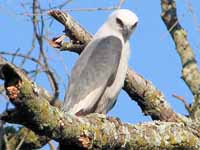
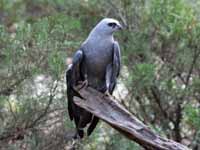
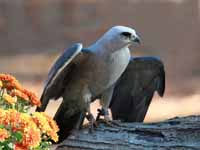
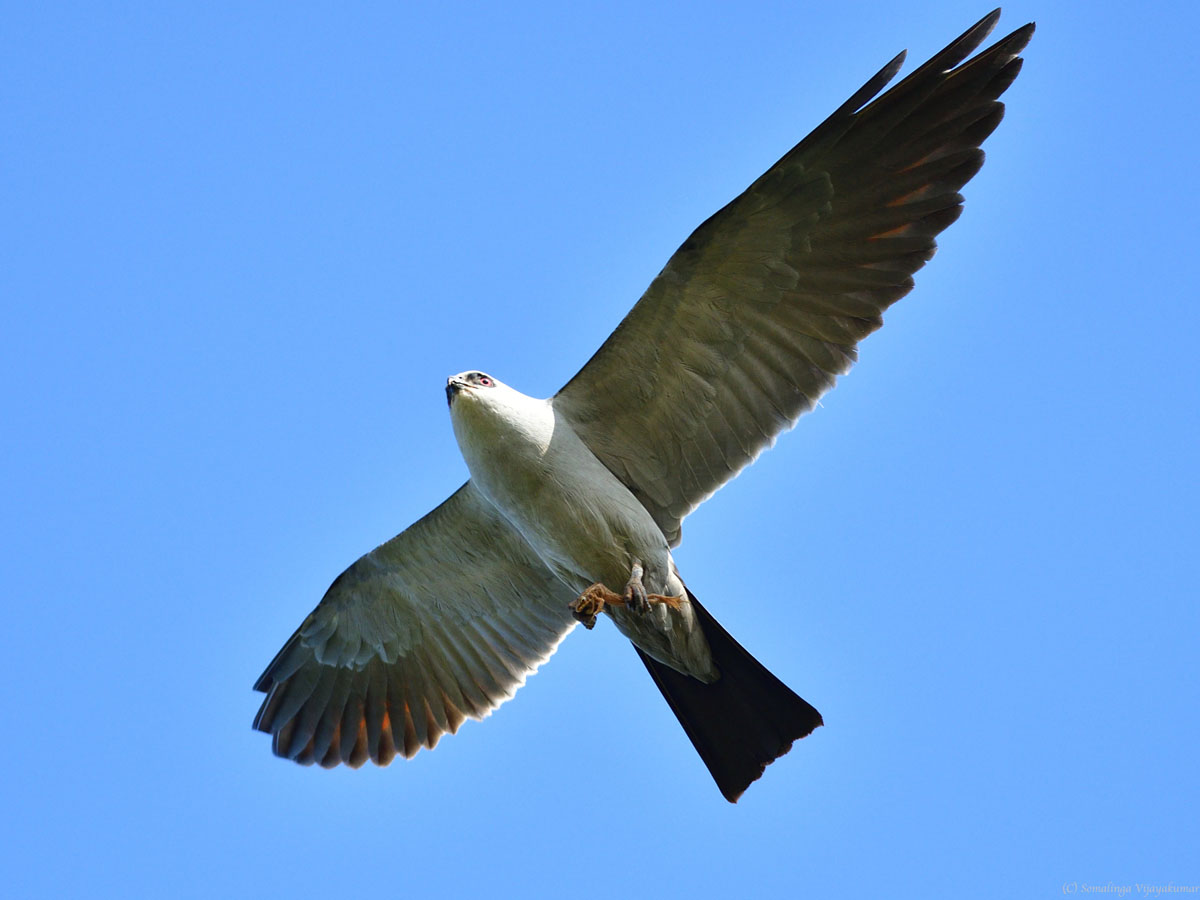
Kite,_Plumbeous Ictinia plumbea
Description: The plumbeous kite has mainly slate-grey plumage, red eyes, and orange legs. Its black square tail has 2 to 3 white bands. It has obvious rufous on the primary feathers which differentiates it from the Mississippi kite. Also, the later has no bars on its tail.
Range: Mexico, Central America, South America.
Habitat: Lowland forest and savanna. Builds stick nests in trees.
Diet: Mainly insects.
Conservation status: Least Concern.
Image by: 1) Barloventomagico - Venezuela 2) Harmony on Planet Earth - Panama 3) Alastair Rae - Brazil 4) Wagner Lemes 5) Ron Knight - ArgentinaRange: Mexico, Central America, South America.
Habitat: Lowland forest and savanna. Builds stick nests in trees.
Diet: Mainly insects.
Conservation status: Least Concern.
1) Juvenile
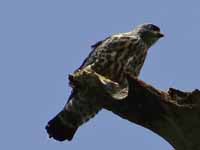
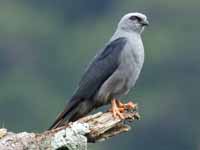

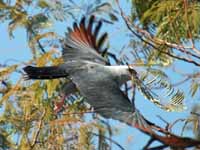
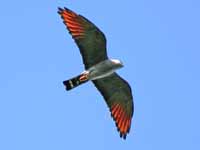
Genus Leucopternis
These South American hawks have black or dark grey upperparts, white underparts, and an orange cere.
Hawk,_Black-faced Leucopternis melanops
Description: The black-faced hawk has black upperparts with white spots, a white head with black mask, and white underparts. The cere and legs are orange. It has a black tail with a white median band and a thin white tip.
Range: South America (north of the Amazon River) .
Habitat: Tall lowland forest of the Amazon.
Diet: Probably reptiles, birds, and insects.
Conservation status: Least Concern.
Image by: 1) Tony Morris 2) Nick Athanas - Venezuela 3) Hector_Bottai - BrazilRange: South America (north of the Amazon River) .
Habitat: Tall lowland forest of the Amazon.
Diet: Probably reptiles, birds, and insects.
Conservation status: Least Concern.
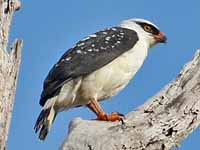
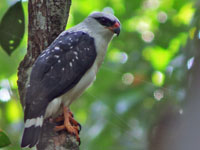

Hawk,_Semiplumbeous Leucopternis semiplumbeus
Description: The semiplumbeous hawk has dark grey upperparts, head, and nape. The underparts are white with thin black streaks on the flanks. It has a black tail with a narrow white median band. The cere and legs are orange. It is a very small hawk with the male about 250 grams and the female 325 g. The similar white-browed hawk has a white brow while the semiplumbeous hawk does not.
Range: Central and northern South America.
Habitat: Forests and forest edges.
Diet: Probably reptiles, birds, and insects. Hunts from perch - does not soar.
Conservation status: Least Concern.
Image by: 1) Michael Woodruff 2) Jerry Oldenettel - Costa Rica 3) Nick Athanas - Costa RicaRange: Central and northern South America.
Habitat: Forests and forest edges.
Diet: Probably reptiles, birds, and insects. Hunts from perch - does not soar.
Conservation status: Least Concern.
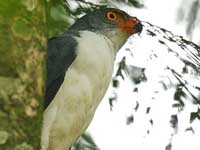
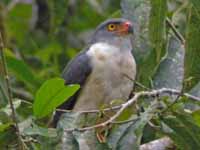
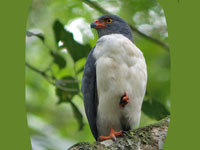
Hawk,_White-browed Leucopternis kuhli
Description: The white-browed hawk has dark grey upperparts and a white brow. It has a black crown and mask, white underparts, and thin black streaks on the side of the neck and flanks. The tail is black with a white band and tip. It has an orange cere and legs. It is similar to the semiplumbeous hawk which has no supercilium.
Range: Bolivia, Brazil, Peru.
Habitat: Lowland tropical forest.
Diet: Probably reptiles, frogs, insects.
Conservation status: Least Concern.
Image by: 1) Josleph Smit 2) Nick Athanas - BrazilRange: Bolivia, Brazil, Peru.
Habitat: Lowland tropical forest.
Diet: Probably reptiles, frogs, insects.
Conservation status: Least Concern.
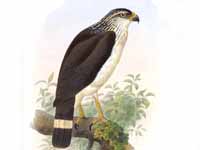
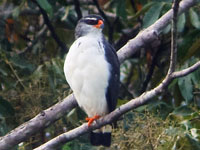
Genus Morphnarchus - 1 species
Hawk,_Barred Morphnarchus princeps
Description: The barred hawk has black upperparts, head, and bib. The rest of the underparts are white with black bars. It has a black tail with a thin white bar. The barred hawk averages 1000 grams.
Range: Costa Rica, Panama, Columbia, Ecuador, Peru.
Habitat: Humid mountainous or hilly forests.
Diet: Reptiles. earth worms. Also birds, mammals.
Conservation status: Least Concern.
Image by: 1) Luis_Perez 2) Victor - Costa Rica 3) Nick Athanas - EcuadorRange: Costa Rica, Panama, Columbia, Ecuador, Peru.
Habitat: Humid mountainous or hilly forests.
Diet: Reptiles. earth worms. Also birds, mammals.
Conservation status: Least Concern.

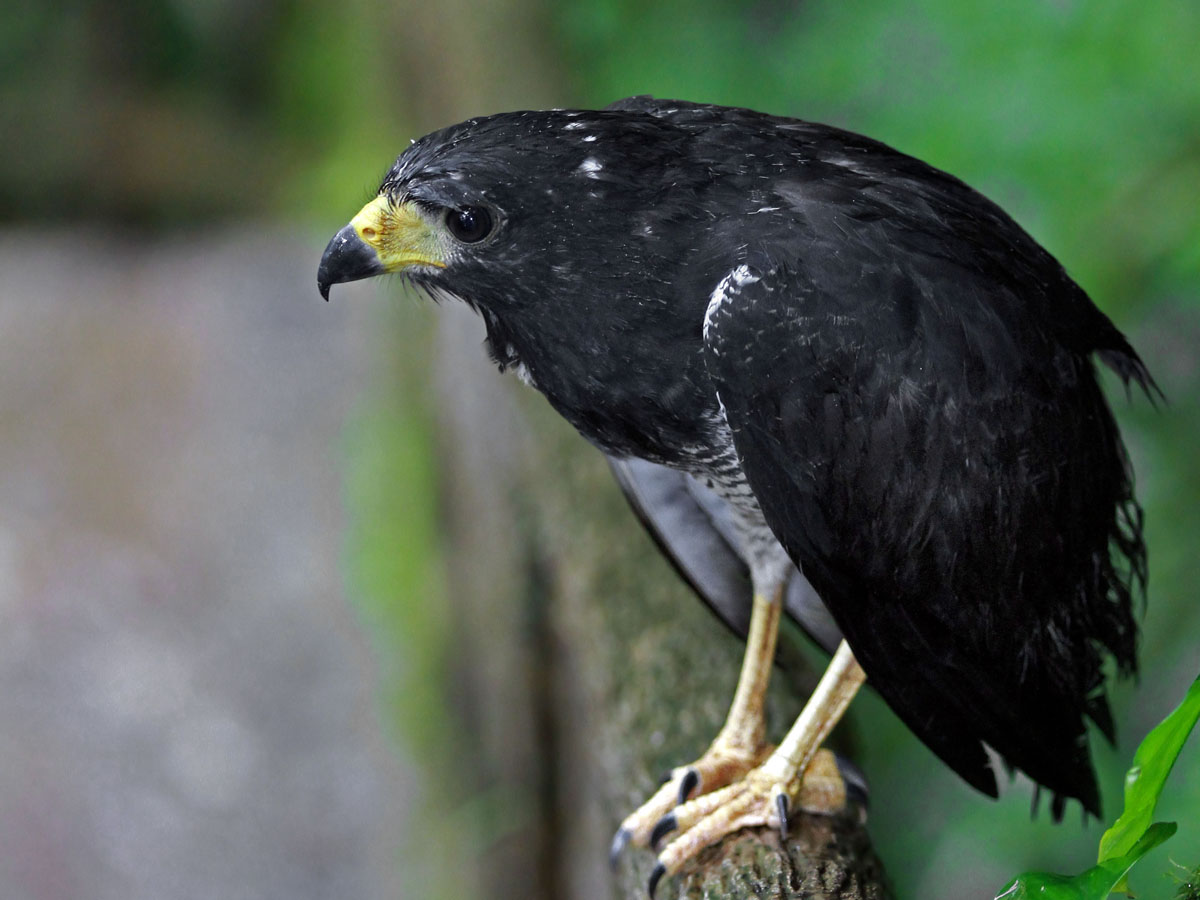

Genus Parabuteo
Hawk,_Harris's Parabuteo unicinctus
Description: The Harris's hawk has mainly brown plumage with chestnut shoulders. It has white on the base and tip of the tail. The legs and cere are yellow. The male weighs up to 900 grams, the female to 1600 g.The chestnut on its shoulders separates the Harris's hawk from the common black hawk and the zone-tailed hawk.
Range: southwest USA to South America.
Habitat: Savanna, grasslands, wetlands. desert scrub.
Diet: Birds, reptiles, mammals, insects. The hunt in packs and seem to be above average intelligence for raptors. Because of their social tendence, Harris's hawks are relatively easy to train for falconry.
Conservation status: Least Concern.
Image by: 1, 2) Alan D Wilson -
Texas 3) Dick - Center for Birds of Prey,
Charleston, South Carolina 4) Mark Watson - New MexicoRange: southwest USA to South America.
Habitat: Savanna, grasslands, wetlands. desert scrub.
Diet: Birds, reptiles, mammals, insects. The hunt in packs and seem to be above average intelligence for raptors. Because of their social tendence, Harris's hawks are relatively easy to train for falconry.
Conservation status: Least Concern.
1) Juvenile
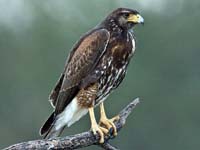
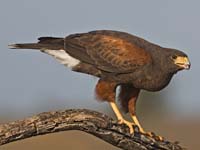
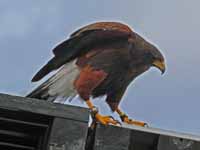
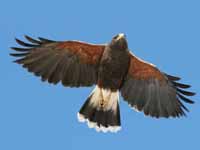
Hawk,_White-rumped Parabuteo leucorrhous .
Description: The white-rumped hawk is a very small hawk. The male weights less than 300 grams and the female less than 400 g. It has mainly black plumage. The rump and under-tail coverts are white. The under-wing coverts have a white checkered appearance. Seen from above, the tail has one to two white bars.
Range: Argentina, Bolivia, Brazil, Colombia, Ecuador, Paraguay, Peru, Venezuela.
Habitat: Dense forest, usually high elevation. Also forest edges.
Diet: Mammals, reptiles, frogs, insects.
Conservation status: Least Concern.
Image by: 1) Quoy_and_GaimardRange: Argentina, Bolivia, Brazil, Colombia, Ecuador, Paraguay, Peru, Venezuela.
Habitat: Dense forest, usually high elevation. Also forest edges.
Diet: Mammals, reptiles, frogs, insects.
Conservation status: Least Concern.
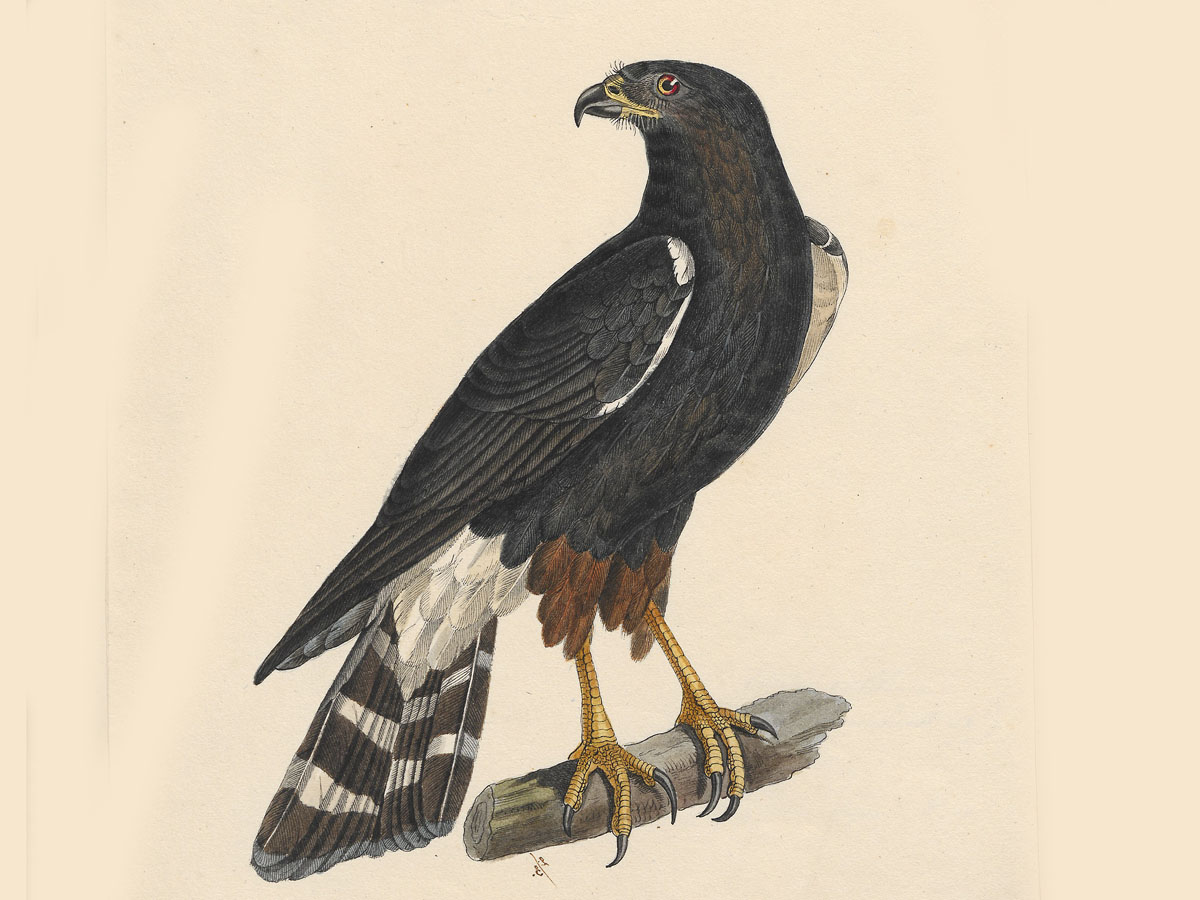
Genus Pseudastur
Hawk,_Grey-backed Pseudastur occidentalis
Description: The grey-backed hawk has dark grey upperparts, white underparts, and a white tail with a wide black subterminal band. There are dark streaks on the crown, cheeks, and sides of neck. It has brown eyes, grey cere, and pale yellow legs.
Range: Ecuador and Peru .
Habitat: Varied habitats. Avoids drier areas.
Diet: Reptiles, crabs, birds, insects, earthworms.
Conservation status: The grey-backed hawk is listed as Endangered because there are less than 1500 and the population is still rapidly declining, mainly due to forest destruction.
Image by: 1) Francesco Veronesi - Ecuador 2, 3) Nick Athanas - Ecuador Range: Ecuador and Peru .
Habitat: Varied habitats. Avoids drier areas.
Diet: Reptiles, crabs, birds, insects, earthworms.
Conservation status: The grey-backed hawk is listed as Endangered because there are less than 1500 and the population is still rapidly declining, mainly due to forest destruction.


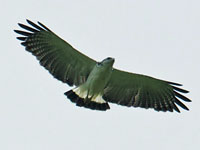
Hawk,_Mantled Pseudastur polionotus
Description: The mantled hawk has a white mantle, head, neck, and most of the underparts.. The exceptions are the black wing tips and base half of the tail. There is a grey patch around the eyes which gives it a masked appearance. The lower back, wings, and rump are blackish. View from below in flight, only the white part of the square tail is visible.
Range: Brazil, Paraguay, Uruguay.
Habitat: Humid forests, forest edges, and clearings.
Diet: Mainly birds. Also reptiles and rodents. It searches for prey from a tree perch.
Conservation status: The mantled hawk is listed as Near Threatened because of habitat loss due to deforestation for mining and agriculture expansion.
Image by: 1) Joseph Smit 2) Nick Athanas - Brazil Range: Brazil, Paraguay, Uruguay.
Habitat: Humid forests, forest edges, and clearings.
Diet: Mainly birds. Also reptiles and rodents. It searches for prey from a tree perch.
Conservation status: The mantled hawk is listed as Near Threatened because of habitat loss due to deforestation for mining and agriculture expansion.
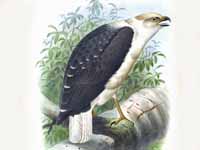
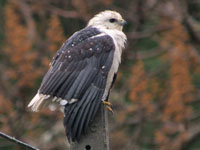
Hawk,_White Pseudastur albicollis
Description: The white hawk has a white body, head, and under-wings. It has black upper-wings, a white tail with a black band, and black wing tips. The male averages 650 grams and the female 850.
Range: southern Mexico to South America.
Habitat: Lowland evergreen forests.
Diet: Mainly reptiles. Also frogs, insects, birds.
Conservation status: Least Concern.
Image by: 1, 2) Dominic Sherony 3, 4) Nick Athanas - Ecuador, ColumbiaRange: southern Mexico to South America.
Habitat: Lowland evergreen forests.
Diet: Mainly reptiles. Also frogs, insects, birds.
Conservation status: Least Concern.
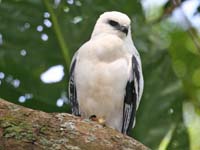

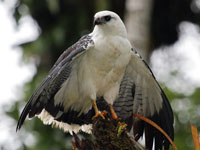
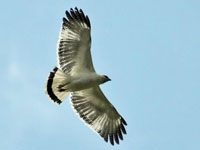
Genus Rostrhamus - 1 species
Kite,_Snail Rostrhamus sociabilis
Description: The male snail kite has dark blue-grey plumage with darker flight feathers. It has red legs and cere. The female has dark brown upperparts and heavily streaked underparts. The hook-billed kite and snail kite both have hooked bills that enable them to eat their favorite food - snails, but their plumage is not similar. The slender-billed kite is similar to the snail kite, but it can be identified by its shorter tail.
Range: Florida, Central America, Caribbean, South America.
Habitat: Freshwater wetlands.
Diet: Mainly freshwater snails.
Conservation status: Least Concern.
Image by: 1, 3, 4)
Dario Sanches 2) Cláudio Timm - Brazil Range: Florida, Central America, Caribbean, South America.
Habitat: Freshwater wetlands.
Diet: Mainly freshwater snails.
Conservation status: Least Concern.
1, 2) Female 3) Juvenile male 4) Male
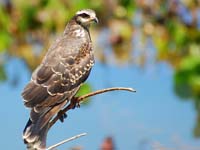
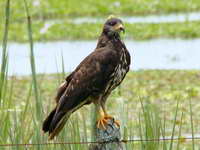
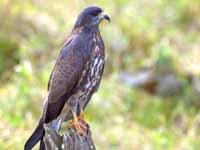
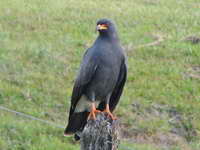
Genus Rupornis - 1 species
The roadside hawk used to be listed with the Buteo species
Hawk,_Roadside Rupornis magnirostris
Description: The roadside hawk has brown or grey upperparts. The lower-breast and belly are barred brown-and-white. It has a relatively large dark bill with yellow cere. The tail is long with 4 or 5 grey bars. It has striking yellow eyes and the legs are also yellow. This is a small hawk. weighin 200 to 600 grams depending on the sex and subspecies.
Range: South America.
Habitat: Forest edge, open areas in forest, grasslands with trees.
Diet: Insects, mammals, reptiles, birds, eggs.
Conservation status: Least Concern.
Range: South America.
Habitat: Forest edge, open areas in forest, grasslands with trees.
Diet: Insects, mammals, reptiles, birds, eggs.
Conservation status: Least Concern.
Image by: 1, 3) Nick Athanas - Brazil, Venezuela 2) Dario Sanches 4) Carlos_Henrique
1) Juvenile


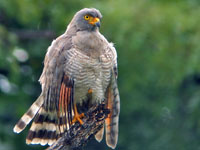
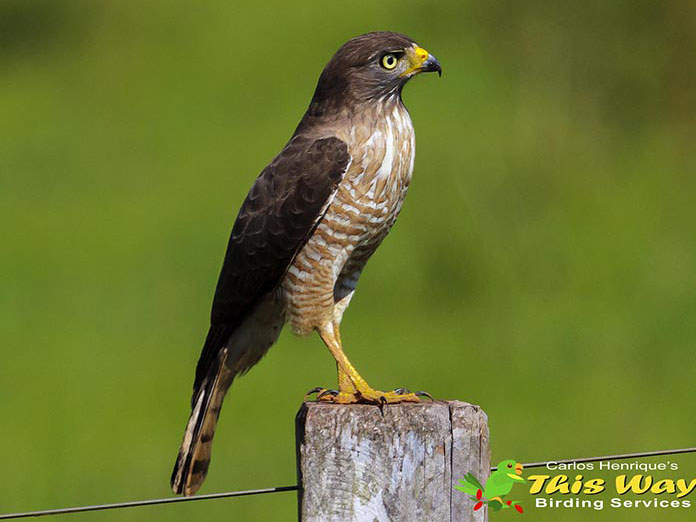
Harpaginae – harpagine hawks
Some list this subfamily as containing the following genera: Harpagus, Hieraspiza, and Kaupifalco. Genus Hieraspiza used to contain one species, the little hawk, which is now assigned the scientific identifier Accipiter superciliosus. As a result there are now only 3 species in this subfamily: the double-toothed kite (Harpagus bidentatus), the rufous-thighed kite (Harpagus diodon), and the lizard buzzard (Kaupifalco monogrammicus).
Genus Harpagus
These are small kites. They have pale tails with dark bars, a white throat with a dark stripe down the middle, and a blunt bill with two notches on each side of the upper mandible.
Kite,_Double-toothed Harpagus bidentatus
Description: The double-toothed kite has blackish upperparts, grey head, and a whitish throat with a dark median stripe. The upper-breast is rufous, the lower-breast whitish, and the belly has grey bars. It has a dark under-tail with white barring. The white rump is easy to see in flight and serves to identify the species even from a distance. The double "tooth" on the upper mandible is not easy to see in the field. This is a very small kite with the male weighing less than 200 grams and the female less than 230 g.
Range. Central and South America.
Habitat: Tropical and subtropical forests, forest edges, clearings.
Diet: Mainly insects; also lizards; sometimes frogs.
Conservation status: Least Concern.
Image by: 1) Barloventomagiico - Venezuela 2, 3) Joule_e 4) Ben Tavener - Ecuador Range. Central and South America.
Habitat: Tropical and subtropical forests, forest edges, clearings.
Diet: Mainly insects; also lizards; sometimes frogs.
Conservation status: Least Concern.
1) Juvenile
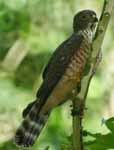
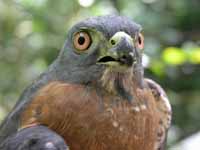
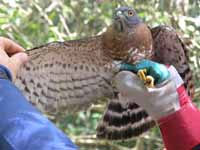
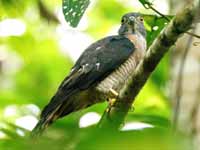
Kite,_Rufous-thighed Harpagus diodon
Description: The rufous-thighed kite has blackish upperparts, a grey head, and a whitish throat with dark median stripe. It has light grey underparts, rufous thighs, and rufous under-wings. The under-tail is light grey with 4 dark bars. Like the double-toothed kite, the rufous kite is very small.
Range: South America.
Habitat: Mainly forests. Prefers them to be dense.
Diet: Insects. Soars above the canopy but hunts with the canopy.
Conservation status: Least Concern.
Image by: 1) Rick Simpson Range: South America.
Habitat: Mainly forests. Prefers them to be dense.
Diet: Insects. Soars above the canopy but hunts with the canopy.
Conservation status: Least Concern.
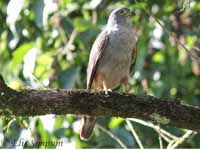
Genus Kaupifalco - 1 species
The lizard has been placed with Buteo hawks, but DNA studies indicate that it is closer to Accipiter hawks. Also it has pointed and fairly short wings which is another characteristic of Accipiter hawks.
Buzzard,_Lizard Kaupifalco monogrammicus
Description: The lizard buzzard has mainly grey plumage with barring on the lower-breast and belly. It has a black bill with red cere and a white throat with black vertical line. The tail is black with a single white band and a white tip. The males weights up to 275 grams and the females 400g.
Range: Sub-Saharan Africa.
Habitat: Deciduous woodlands and adjacent savanna.
Diet: Lizards, snakes, insects.
Conservation status: Least Concern.
Image by: 1) Gabriel Buissart 2) Brian Ralphs - Mozambique 3) francesco_veronesiRange: Sub-Saharan Africa.
Habitat: Deciduous woodlands and adjacent savanna.
Diet: Lizards, snakes, insects.
Conservation status: Least Concern.
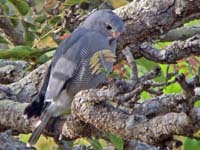

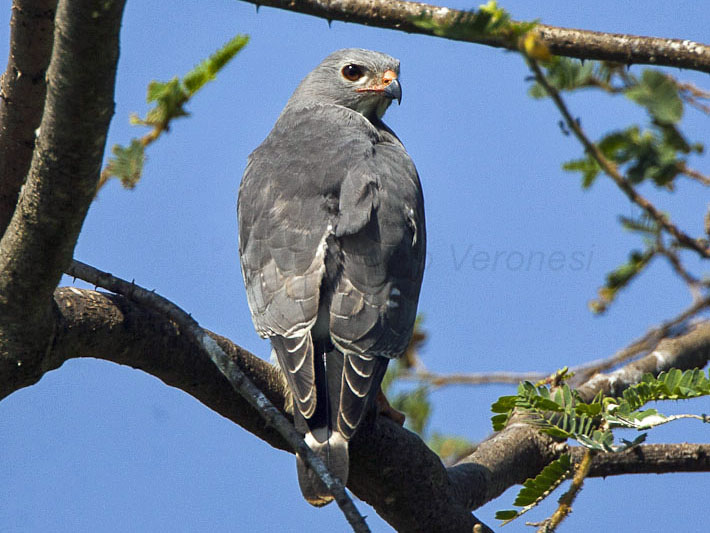
Melieraxinae – melieraxine hawks
Genus Melierax
The chanting goshawks, long-tailed hawks, are found in Africa. The name refers to the melodious chanting they do during breeding season. They mainly hunt from a tree perch.
Goshawk,_Dark Chanting- Melierax metabates
Description: The dark chanting-goshawk has slate-grey upperparts and upper-breast. It has grey-and-white barring on the rest of the underparts. The tail is black-and-white and the wings are black tipped. It has a red cere and legs. The male weights up to 700 grams and the female 850 g.
Range: Africa.
Habitat: Wooded areas such as treed savannas and fruit groves, It avoids dense forests and deserts.
Diet: Mammals, birds, reptiles. Hunts from a perch in a tree.
Conservation status: Least Concern.
Image by: 1) Nevit
Dilmen - Tanzania 2 Frank
Vassen - Namibia 3) I Love Trees - South Africa 74) JV Verde - GambiaRange: Africa.
Habitat: Wooded areas such as treed savannas and fruit groves, It avoids dense forests and deserts.
Diet: Mammals, birds, reptiles. Hunts from a perch in a tree.
Conservation status: Least Concern.
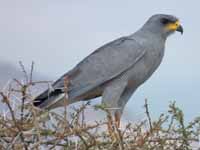
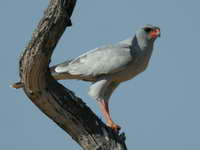
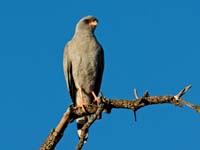
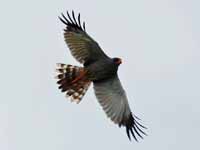
Goshawk,_Eastern Chanting- Melierax poliopterus
Description: The eastern chanting-goshawk has grey upperparts and breast. The belly has grey-and-white barring. It has a blackish upper-tail and white under-tail with grey bars. The cere is yellow, the legs are orange-red. The male weighs up to 600 grams and the female 800 g. It averages paler than the dark chanting-goshawk, especially the wings. The legs are a little longer, but not enough to aid identification.
Range: east Africa (Somalia, Ethiopia, Uganda, Kenya, Tanzania)
Habitat: Dry woodland and savanna. Prefers drier habitat than dark chanting-goshawk.
Diet: Mammals, birds, reptile. Hunts from a perch in a tree.
Conservation status: Least Concern.
Image by:
1) Charles_Sharp - Ethiopia 2) Christiaan Kooyman 3) Sergey Yeliseev - KenyaRange: east Africa (Somalia, Ethiopia, Uganda, Kenya, Tanzania)
Habitat: Dry woodland and savanna. Prefers drier habitat than dark chanting-goshawk.
Diet: Mammals, birds, reptile. Hunts from a perch in a tree.
Conservation status: Least Concern.
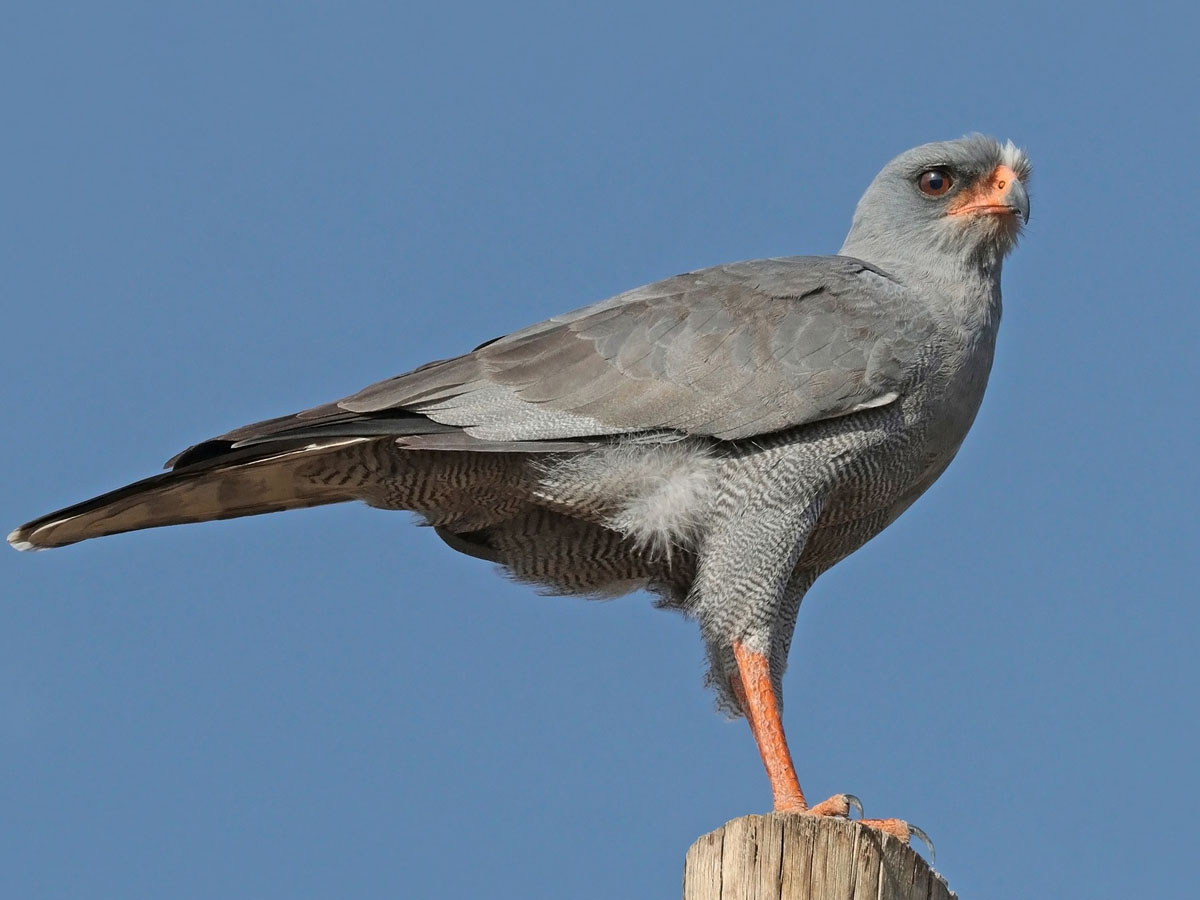
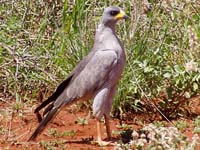
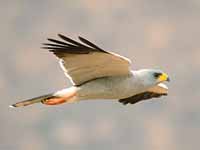
Goshawk,_Pale Chanting- Melierax canorus
Description: The pale chanting-goshawk has grey upperparts, head, and upper-breast. It has a grey and white barred lower-breast and belly. The rump is white. It has red eyes, cere, and legs. The male weighs up to 750 grams and the female 1300 g. It is the palest of the 3 chanting goshawks.
Range: southern Africa.
Habitat: Semi-desert open area with trees for perching.
Diet: Mammals, lizards, insects, carrion. Usually hunt from a perch in a tree.
Conservation status: Least Concern.
Image by: 1) Francesco
Veronesi 2) Bernard_Dupont - South Africa 3) David Berliner - South AfricaRange: southern Africa.
Habitat: Semi-desert open area with trees for perching.
Diet: Mammals, lizards, insects, carrion. Usually hunt from a perch in a tree.
Conservation status: Least Concern.


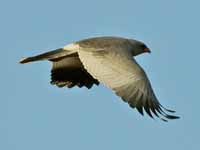
Genus Micronisus - 1 species
Goshawk,_Gabar Micronisus gabar Found: Africa
Description: The Gabar goshawk has grey upperparts, head, and upper-breast. It has a grey and white barred lower-breast and belly. The rump is white; eyes, cere, and legs are red. It is a very small goshawk with the male less than 175 grams and the female less than 250 g.
Range: Sub-Saharan Africa and adjacent Arabia.
Habitat: Dry savanna with thorny bush, arid steppe, some woodlands.
Diet: Mostly birds. Also reptiles and mammals. Stalks prey mainly on foot.
Conservation status: Least Concern.
Image by: 1) Neil Strickland 2, 3) Lip Kee - Tanzania 4) Mike LaBarbera - TanzaniaRange: Sub-Saharan Africa and adjacent Arabia.
Habitat: Dry savanna with thorny bush, arid steppe, some woodlands.
Diet: Mostly birds. Also reptiles and mammals. Stalks prey mainly on foot.
Conservation status: Least Concern.
1) Juvenile 4) Dark Phase
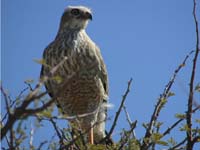
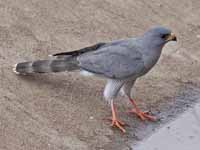
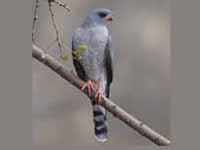
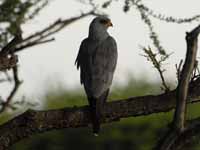
Genus Urotriorchis - 1 species
Hawk,_Long-tailed Urotriorchis macrourus
Description: The long-tailed hawk has dark grey upperparts; and a long tail with white bars. It has a white throat and under-tail coverts, chestnut underparts, a black bill, yellow cere, and yellow legs. The male weighs up to 500 grams and the female 600 g.
Range: central Africa.
Habitat: Mainly tropical evergreen forest.
Diet: Mainly mammals. Also birds. Long tail helps maneuver after prey in the understory.
Conservation status: Least Concern.
Image by: 1) John_Gerrard_Keulemans 2) Francesco_Veronesi 3) Nik_Borrow - Sierra LeoneRange: central Africa.
Habitat: Mainly tropical evergreen forest.
Diet: Mainly mammals. Also birds. Long tail helps maneuver after prey in the understory.
Conservation status: Least Concern.

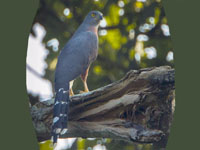

Milvini – Kites
Milvini is portrayed here as a "tribe", that is, a collection of genera that belong to a subfamily. In this case, the subfamily they are considered to belong to is Buteoninae of the buteonine hawks. Others consider the genera Haliastur and Milvus as belonging to its own subfamily Milvinae.
Genus Haliastur
Kite,_Brahminy Haliastur indus
Description: The brahminy kite has chestnut upperparts and lower-belly. It has a white head, neck, breast, and upper-belly. The wingtips are black.
Range: southern Asia, Australia, Indonesia, Philippines, Papua New Guinea.
Habitat: Waterbodies, rice fields, grassland, cropland, forests.
Diet: Mammals, birds, crabs, reptiles, carrion.
Conservation status: Least Concern.
Image by: 1) Dick Daniels - Featherdale Wildlife Park, Australia 2) LonelyShrimp - Thailand 3) sfitzgerald86 - India 4) David_Cook - AustraliaRange: southern Asia, Australia, Indonesia, Philippines, Papua New Guinea.
Habitat: Waterbodies, rice fields, grassland, cropland, forests.
Diet: Mammals, birds, crabs, reptiles, carrion.
Conservation status: Least Concern.
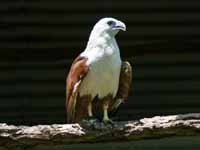

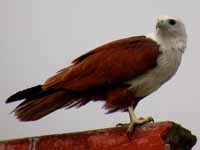

Kite,_Whistling Haliastur sphenurus
Description: The whistling kite has brown upperparts. It has a light brown head, neck, and underparts. The flight feathers area dark and the wing-coverts are light.
Range: Australia.
Habitat: Open or lighrly wooded area, usually near water.
Diet: Mammals, birds, crabs, reptiles, carrion.
Conservation status: Least Concern.
Image by: 1, 4) David Jenkins - Victoria 2) Paul_Balfe - Western Australia 3) 5) Michael Dawes 5) Athena Ferreira Range: Australia.
Habitat: Open or lighrly wooded area, usually near water.
Diet: Mammals, birds, crabs, reptiles, carrion.
Conservation status: Least Concern.


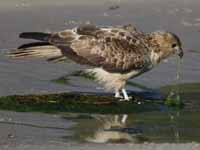
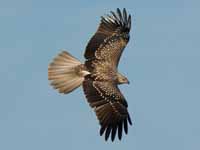
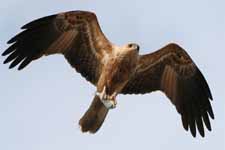
Genus Milvus
Kite,_Black Milvus migrans
Description: The black kite has dark brown upperparts with a paler head and neck. It has a dark eye patch. The underparts are brown. It has black bill with a yellowish cere. The male weighs up to 950 grams, the female to 1100 g. It is similar to the yellow-billed kite. which has no black on its bill, just yellow.
Range: Europe, Asia, Africa, Australia.
Habitat: Avoids dense forests.
Diet: Fish, birds, rodents, carrion. They search for prey while gliding and soaring.
Conservation status: Least Concern.
Image by: 1) Lie Van Rompaey 2) Geoff_Whalan - Australia 3) Koshy_Koshy 4) Benjamint444 - Kathmandu 5) MinoZig - IsrealRange: Europe, Asia, Africa, Australia.
Habitat: Avoids dense forests.
Diet: Fish, birds, rodents, carrion. They search for prey while gliding and soaring.
Conservation status: Least Concern.
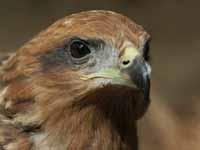
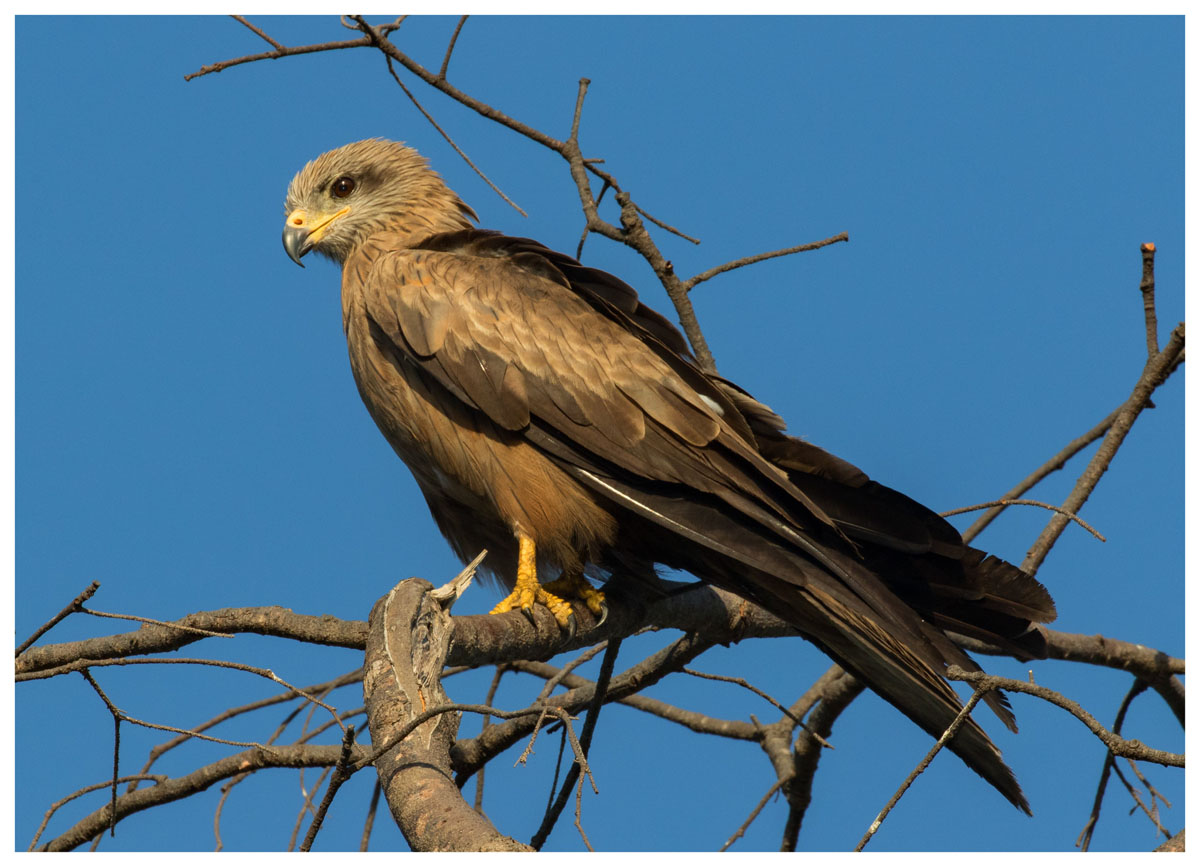
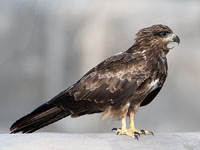
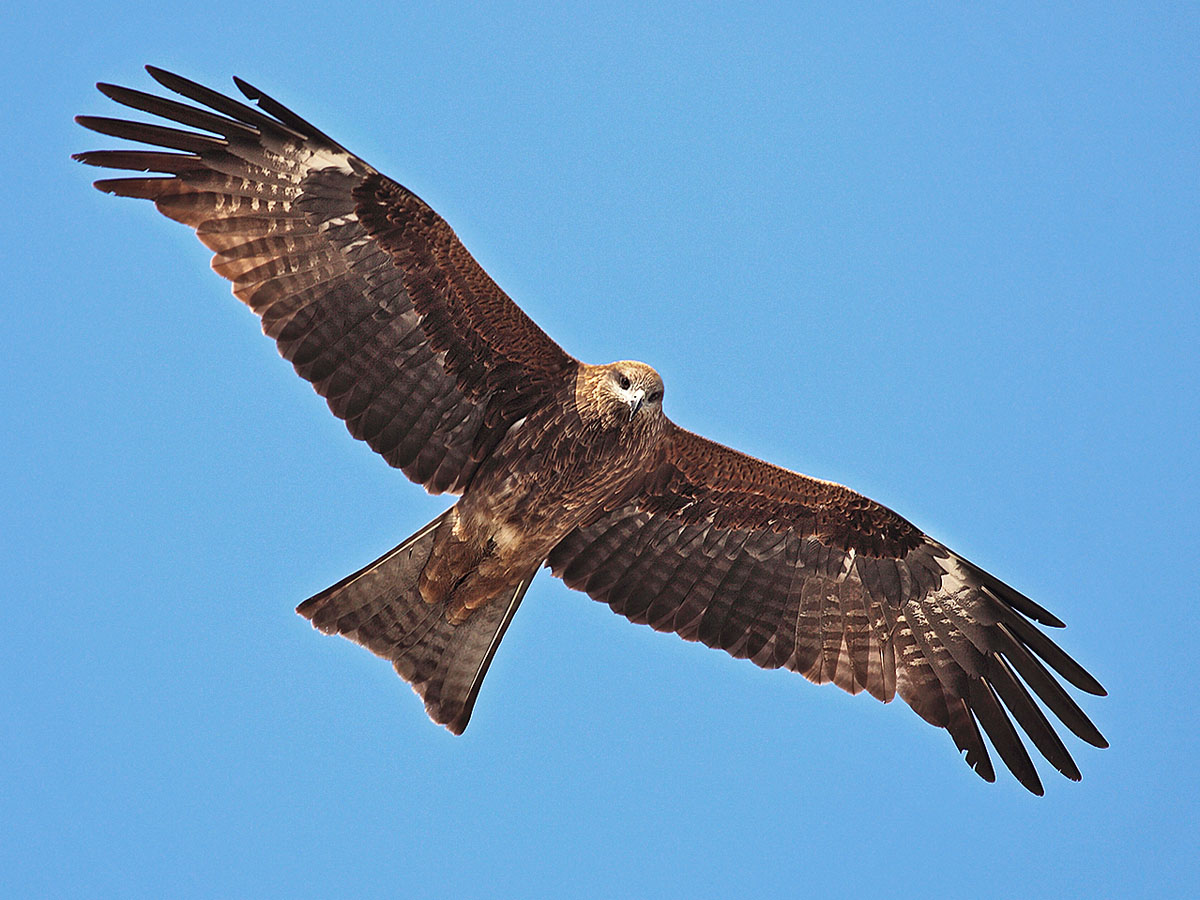
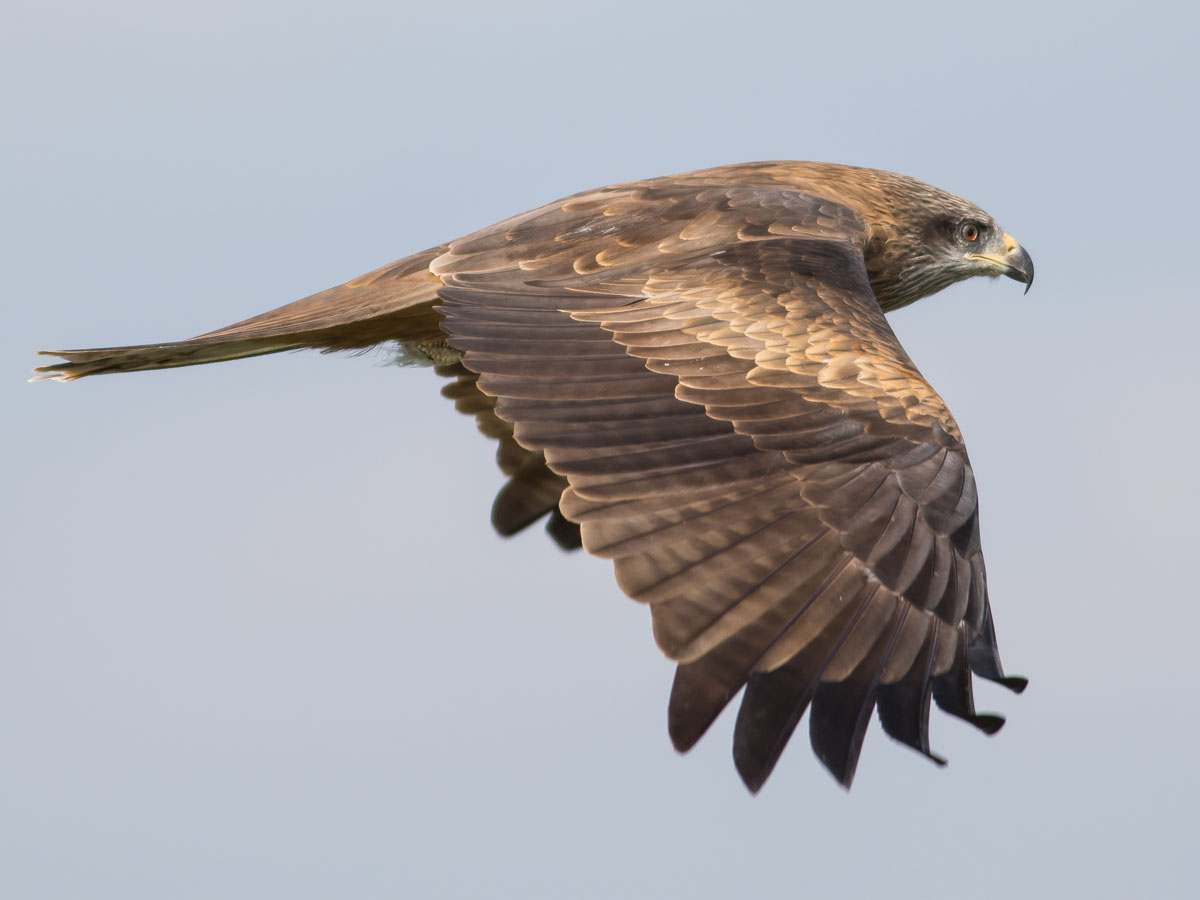
Kite,_Red Milvus milvus
Description: The red kite has a rufous mantle, tail, and wing coverts,The head is white with black streaks.The under-wings have white primaries with black tips which are viewed as a white panel when seen from below. The male weighs up to 1200 grams, the female to 1500 g.
Range: mainly Europe, also northwest Africa.
Habitat: Broadleaf woodlands, valleys, wetland edges.
Diet: mammals, birds, reptiles, carrion.
Conservation status: Least Concern.
Image by: 1) Isiwal 2) Hans Hillewaert - Belgium 3) Pavrabec 4) Thomas Kraft - Germany 5) Hansueli_Krapf - SwitzerlandRange: mainly Europe, also northwest Africa.
Habitat: Broadleaf woodlands, valleys, wetland edges.
Diet: mammals, birds, reptiles, carrion.
Conservation status: Least Concern.
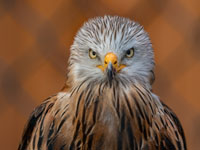

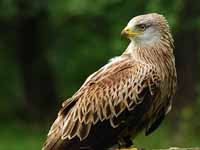
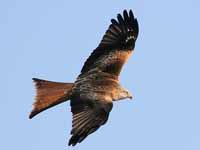
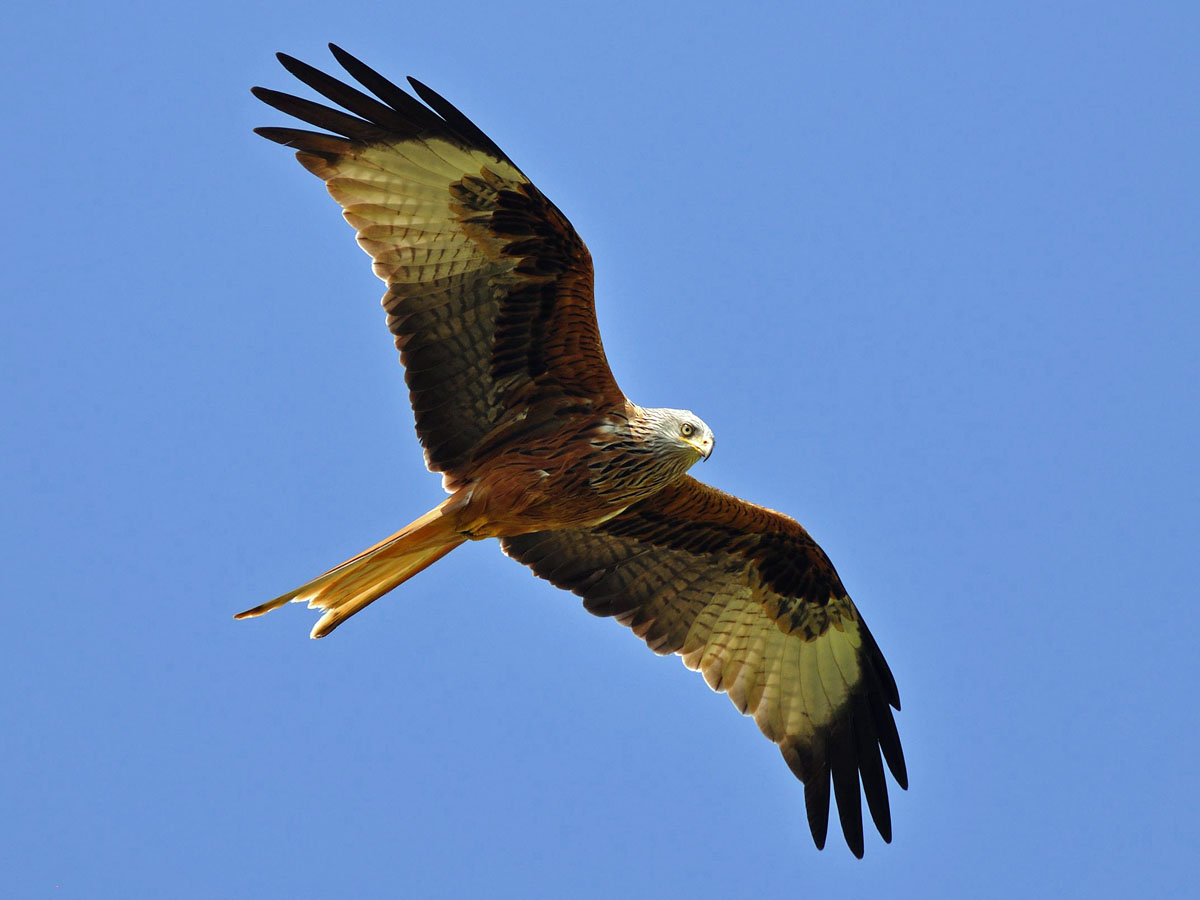
Kite,_Yellow-billed Milvus aegyptius
Description: The yellow-billed kite is considered by some to be a subspecies of the black kite. It has dark brown upperparts with a paler head and neck. It has a dark eye patch, brown underparts, a yellow bill, and a yellow cere. The similar black kite has a black bill.
Range: Sub-Saharan Africa.
Habitat: Widespread, but not in arid regions.
Diet: Mammals, birds, carrion, insects.
Conservation status: Least Concern.
Image by: 1) Schuyler Shepherd 2, 3) Arno
Meinties 4, 5) Sias van Schalkwyk - South AfricaRange: Sub-Saharan Africa.
Habitat: Widespread, but not in arid regions.
Diet: Mammals, birds, carrion, insects.
Conservation status: Least Concern.
